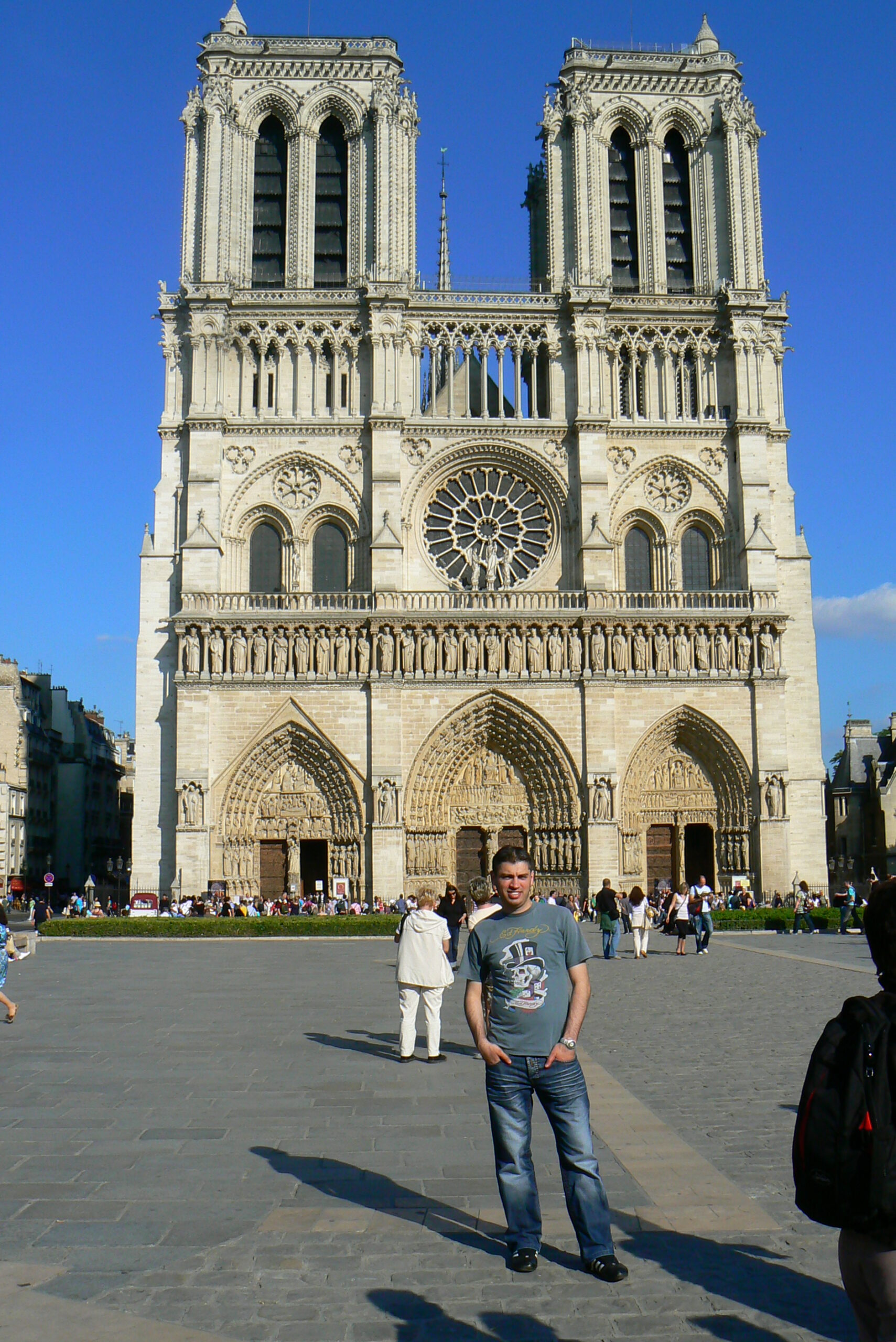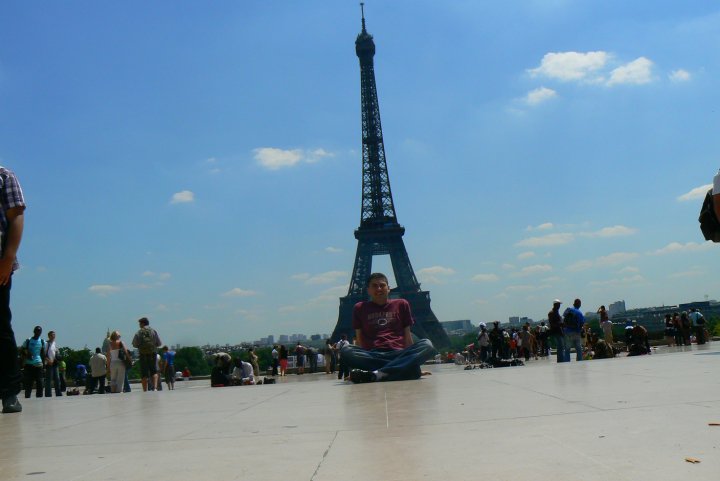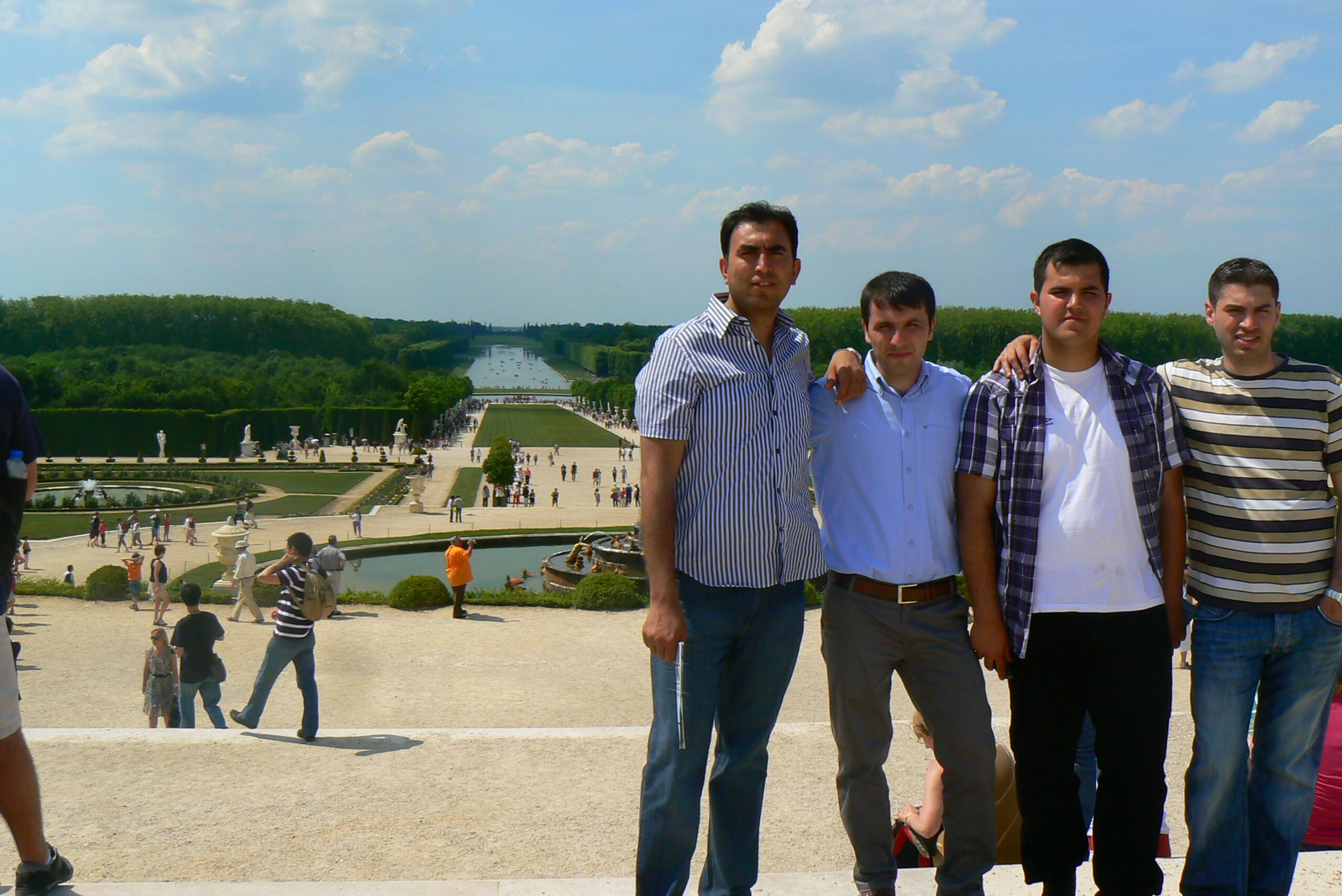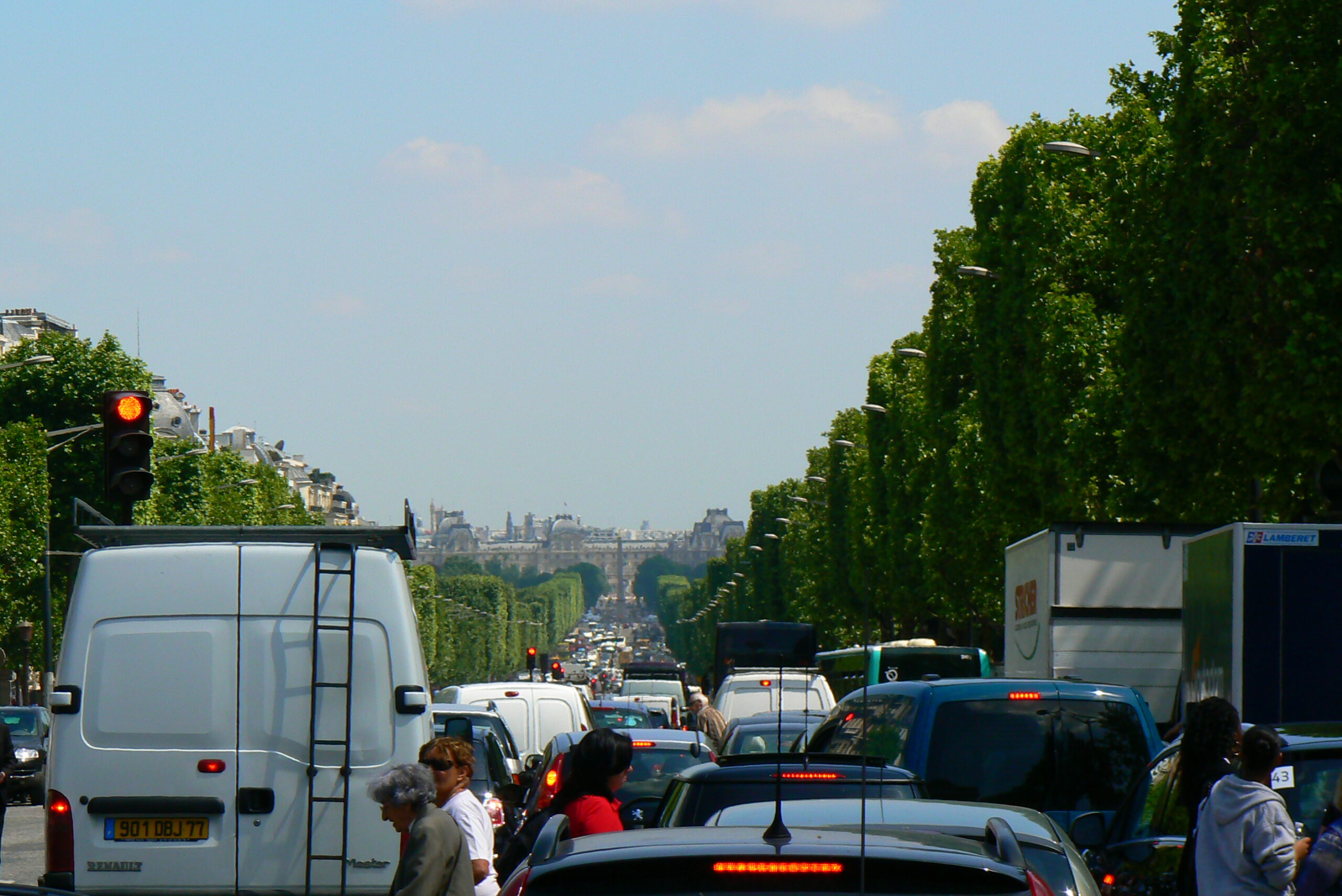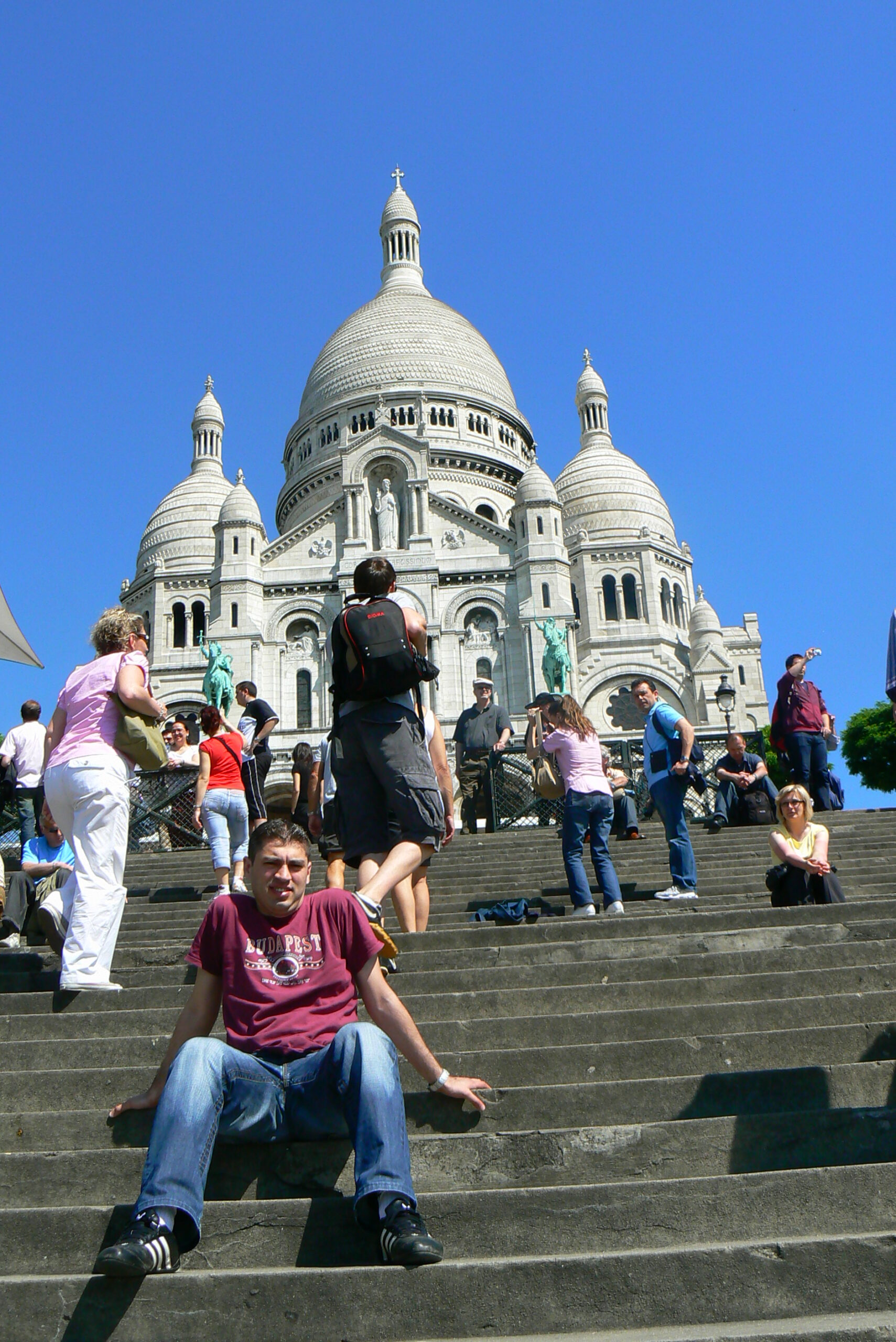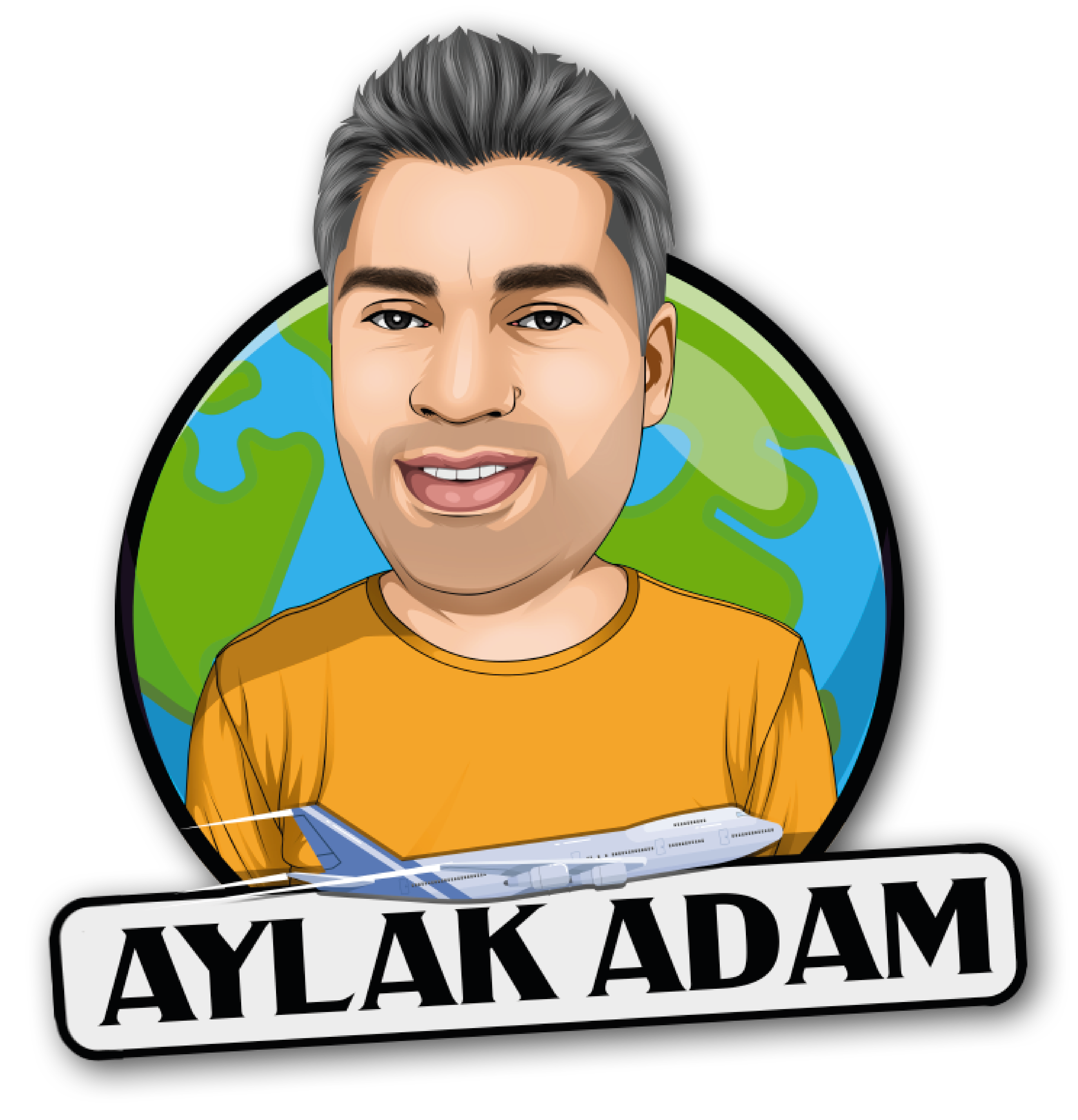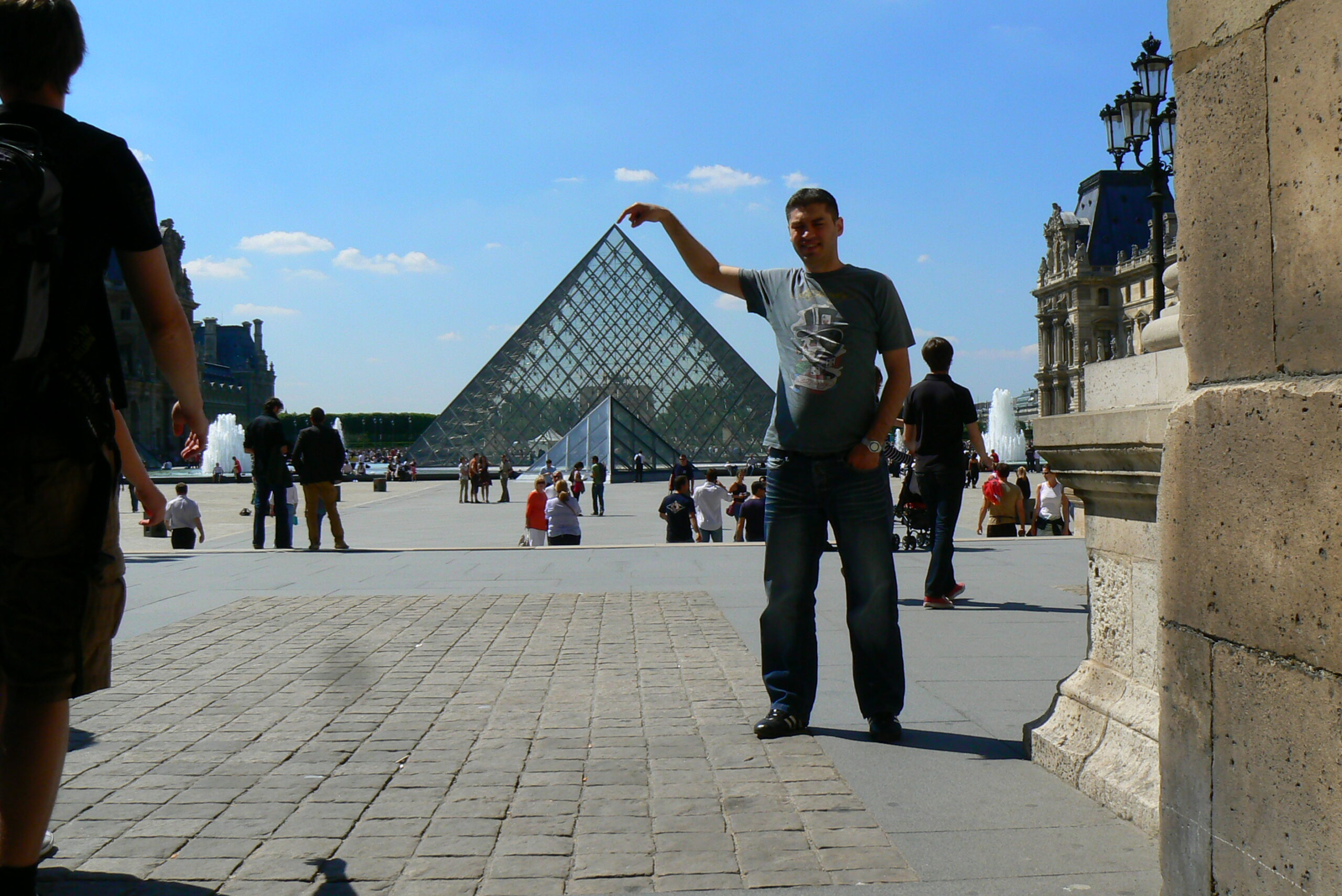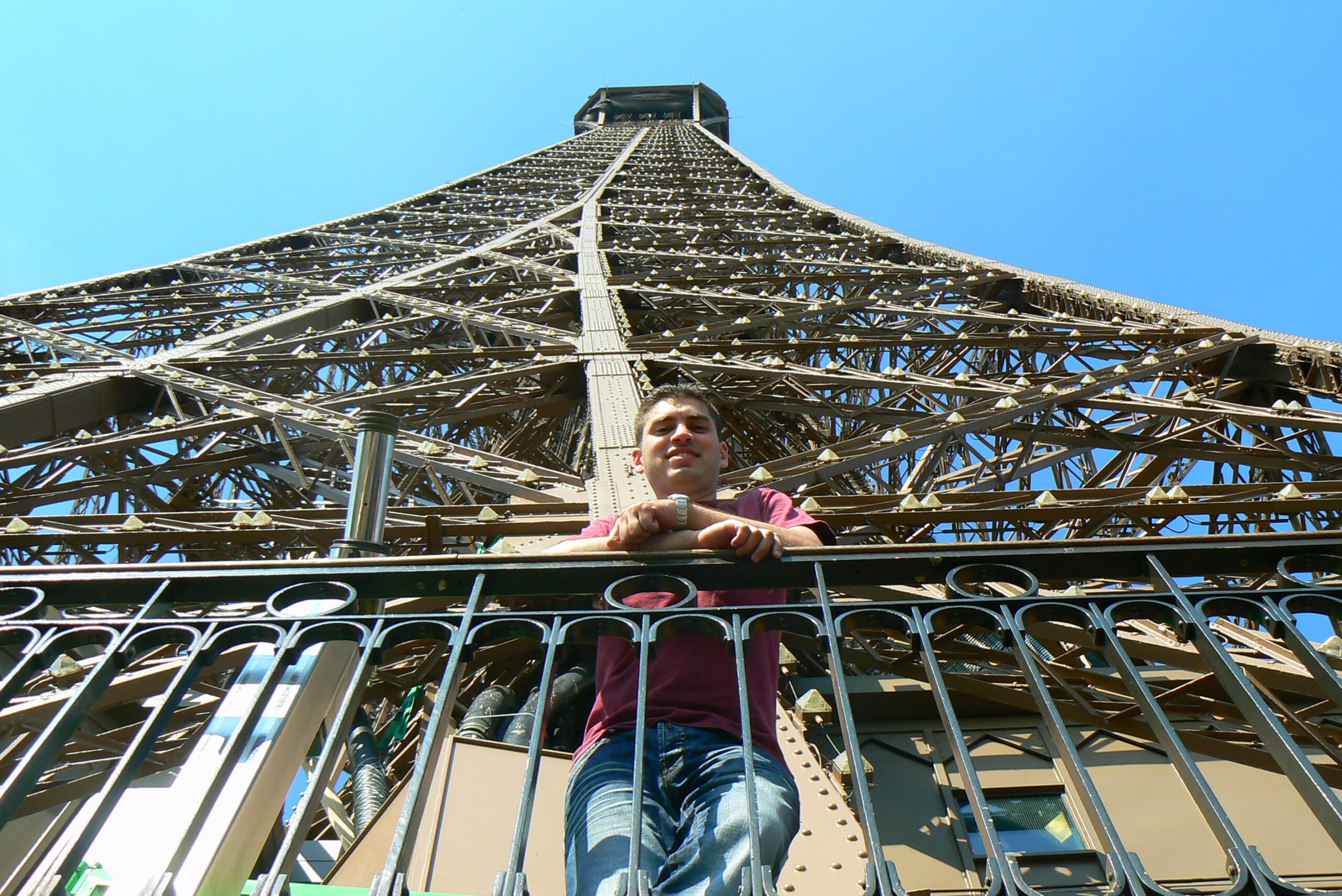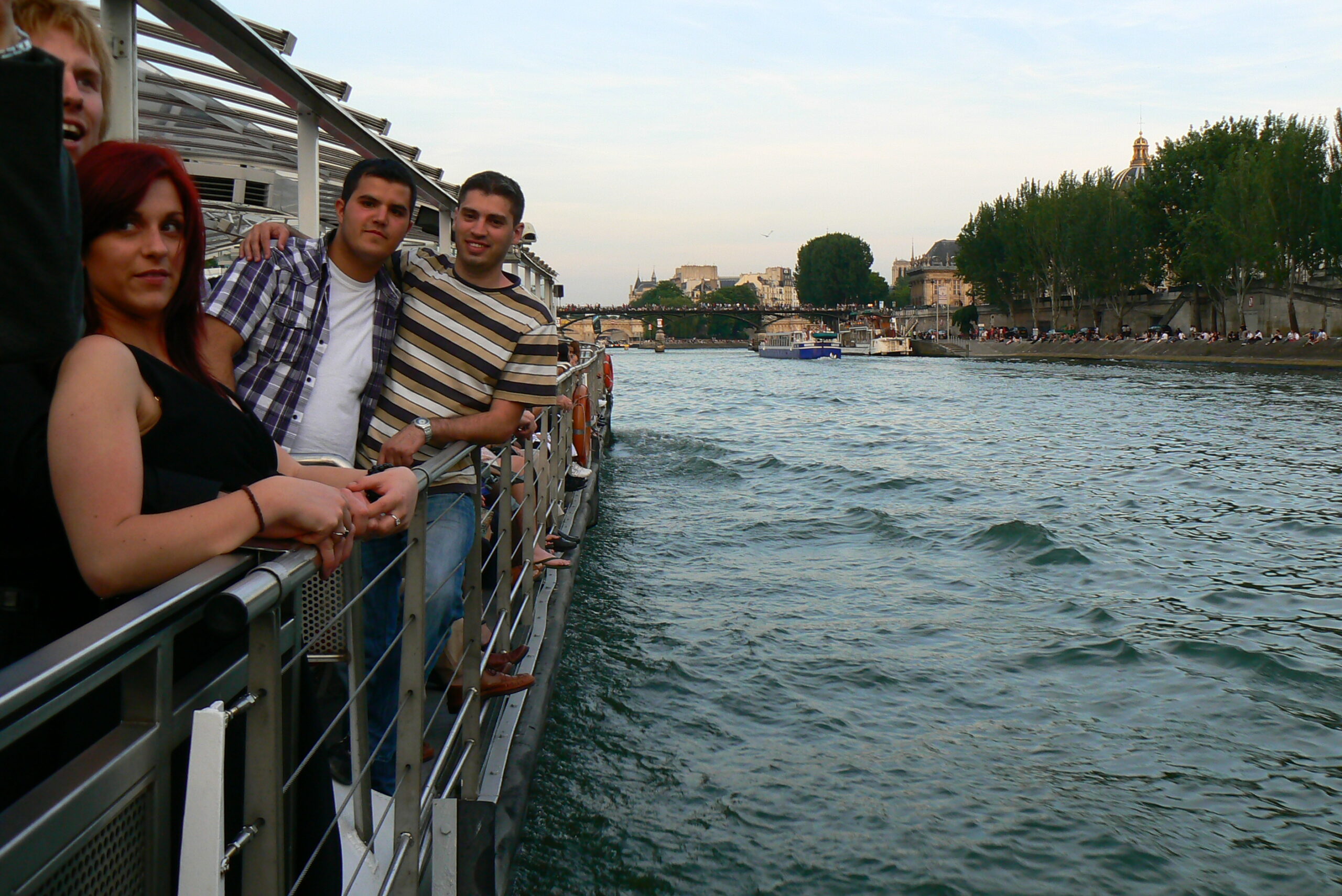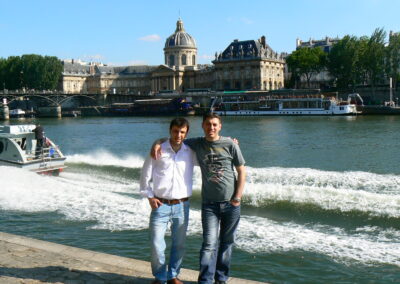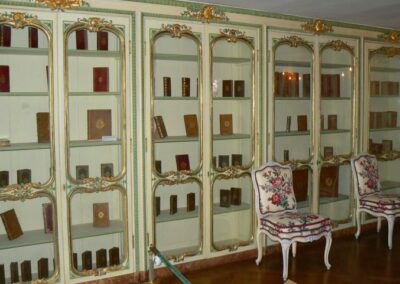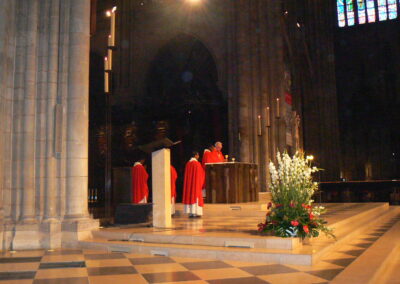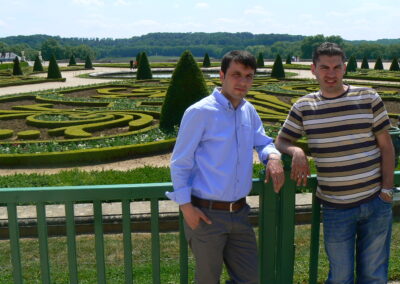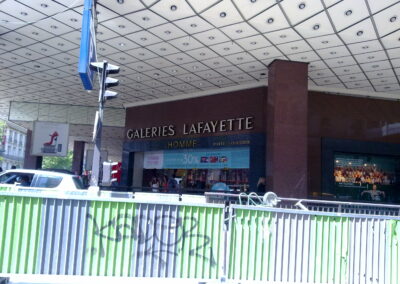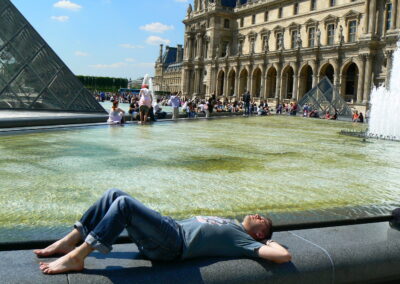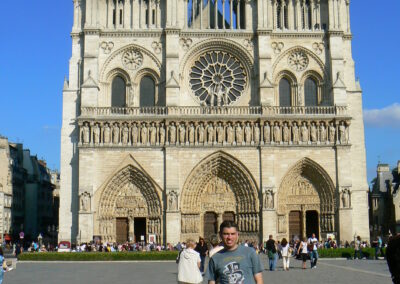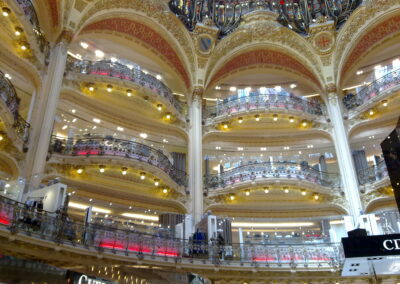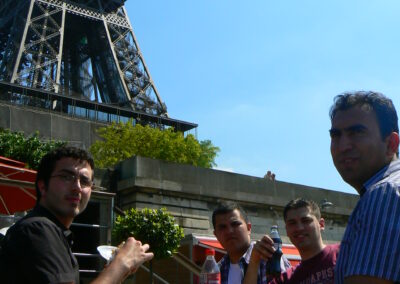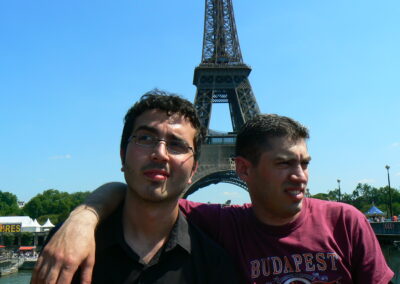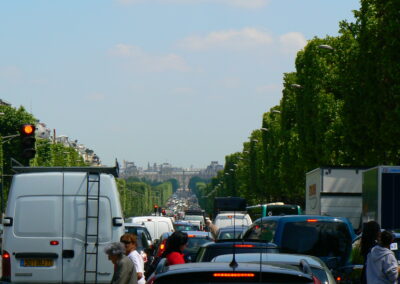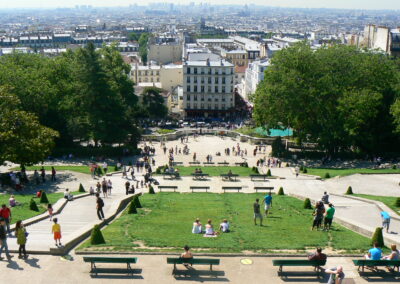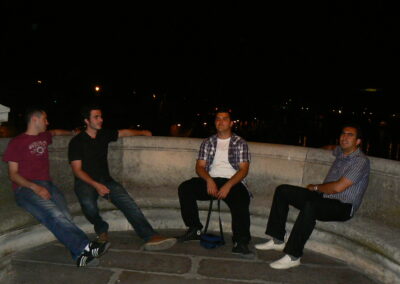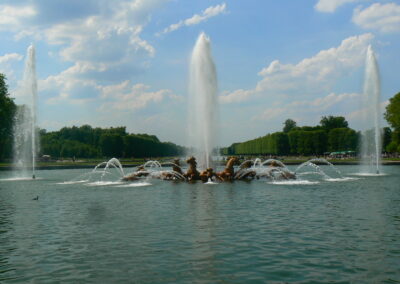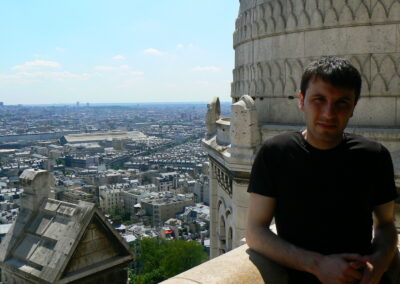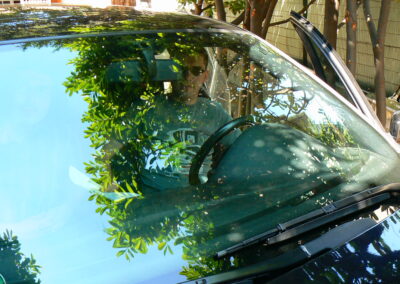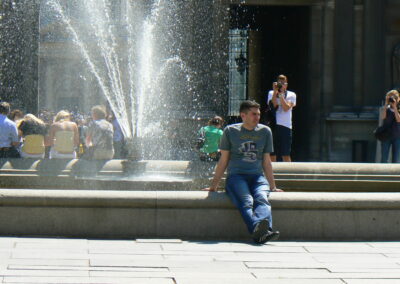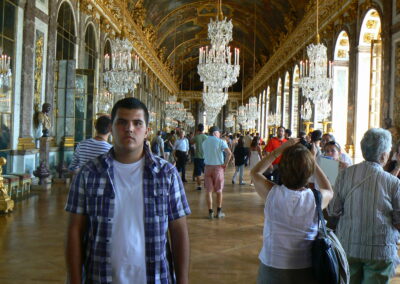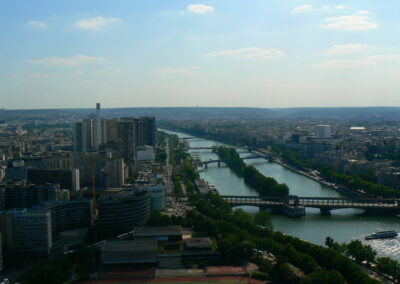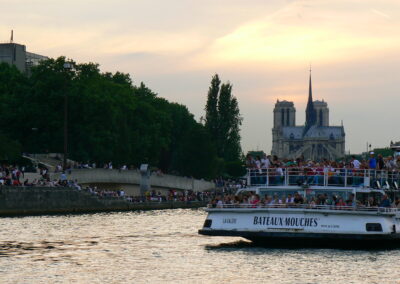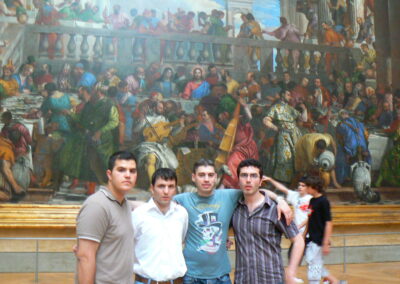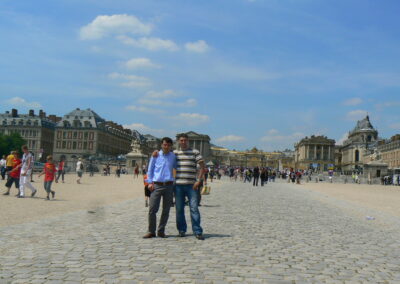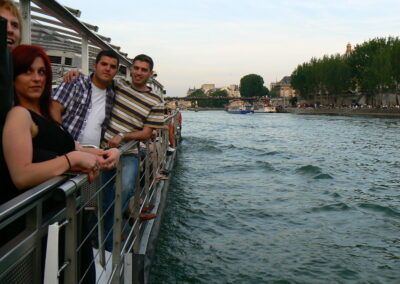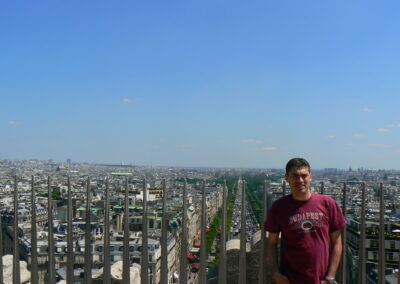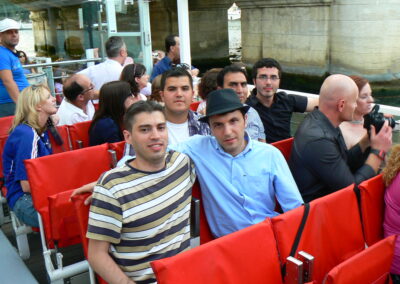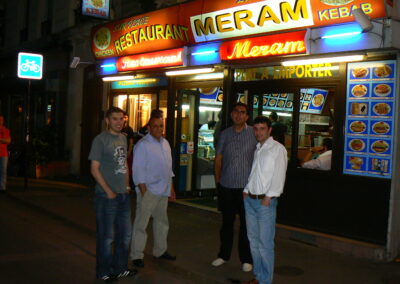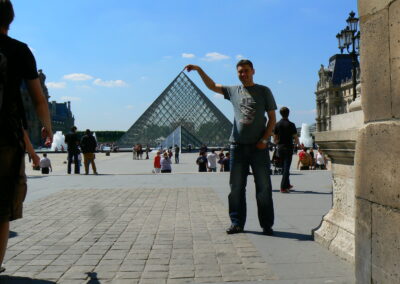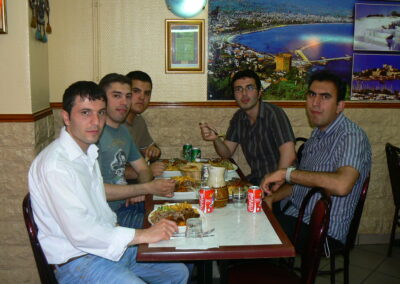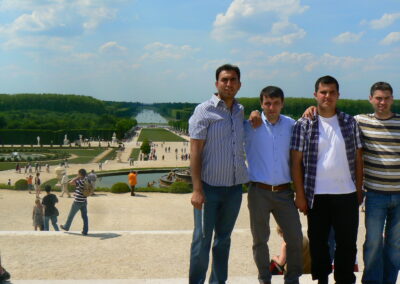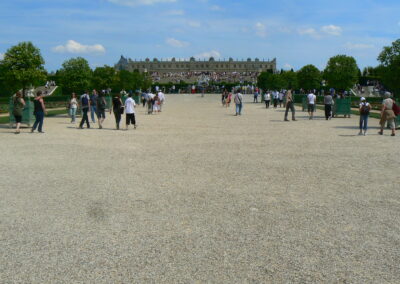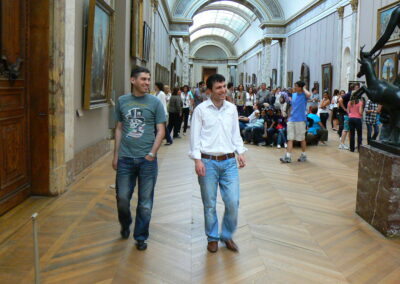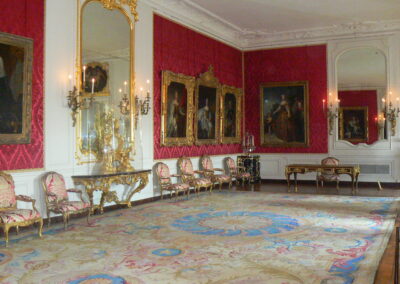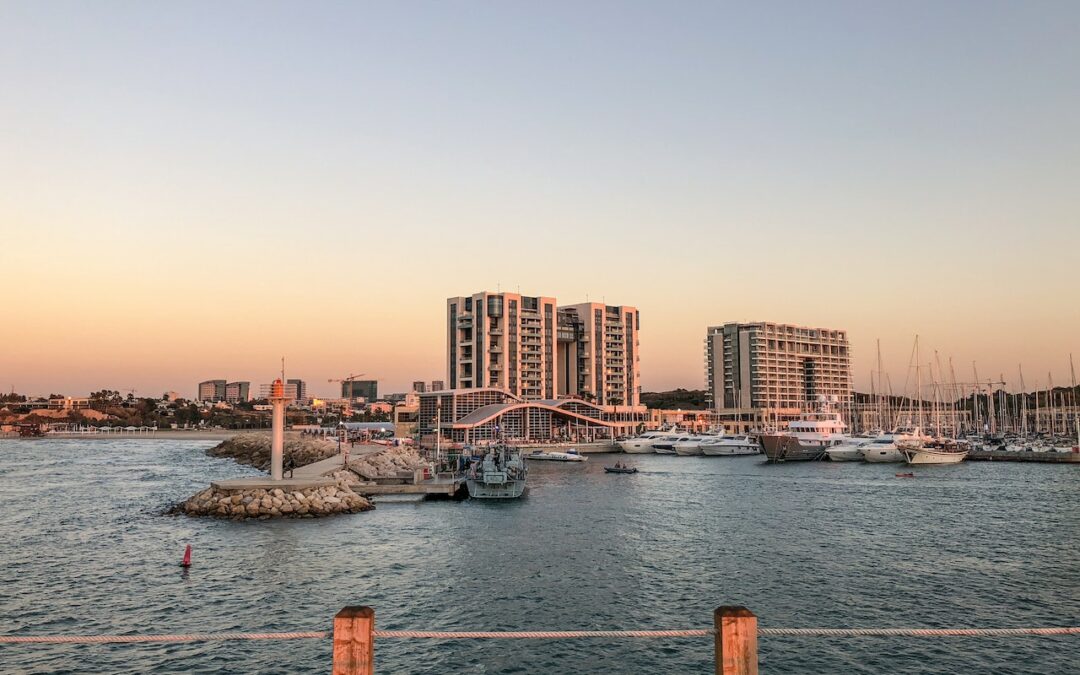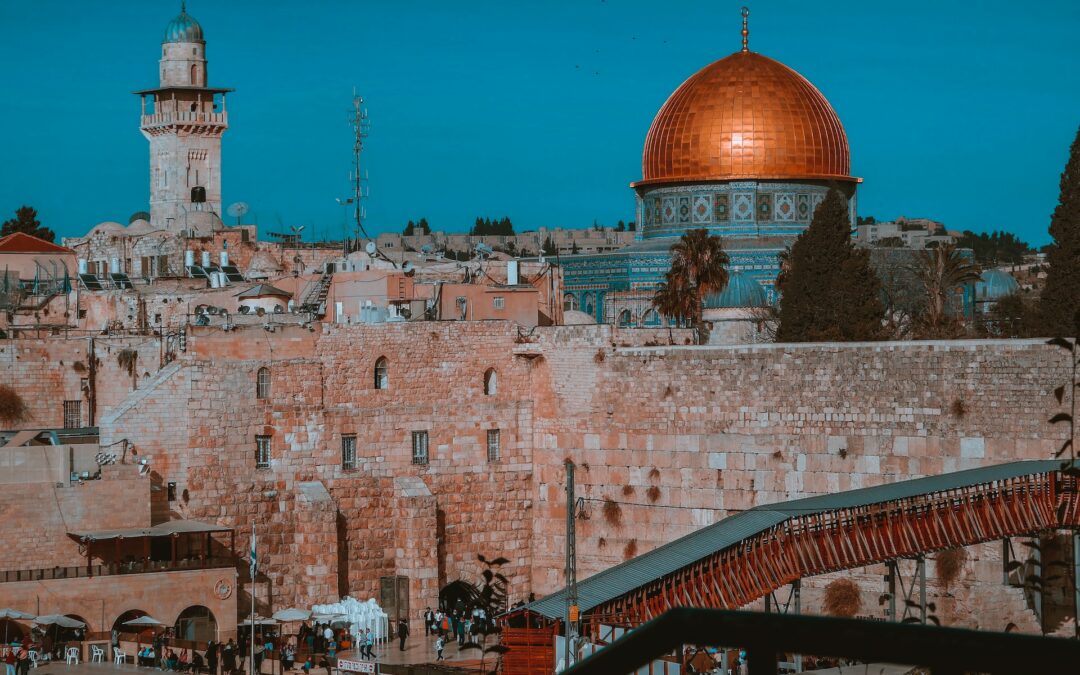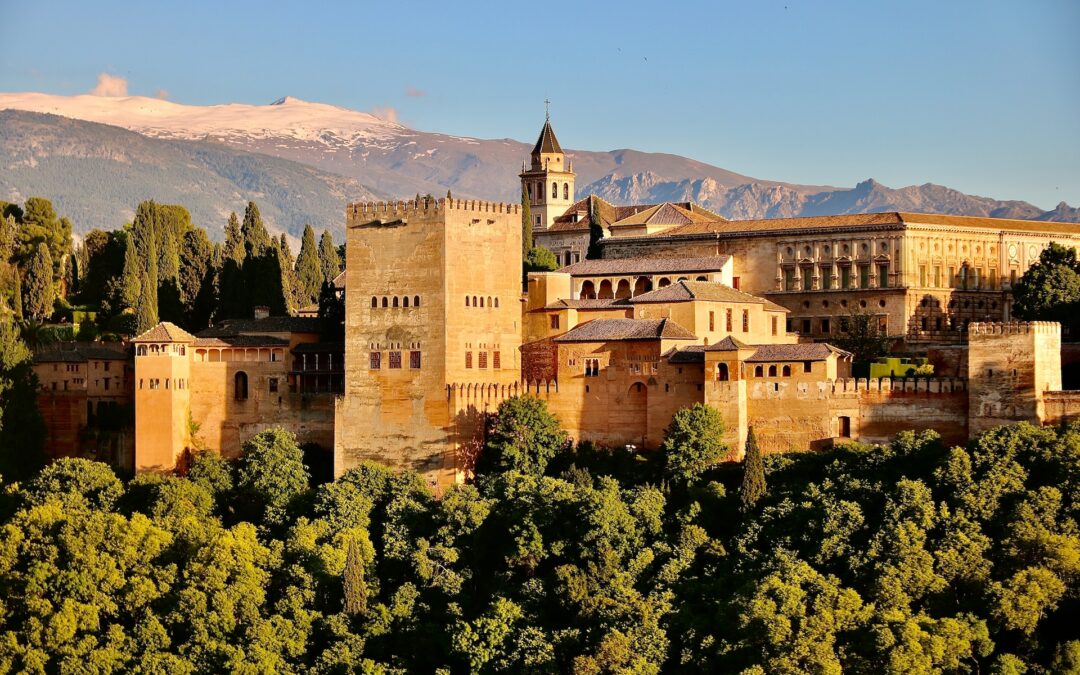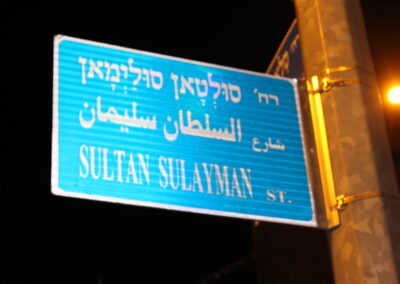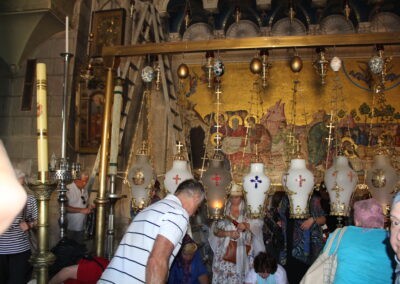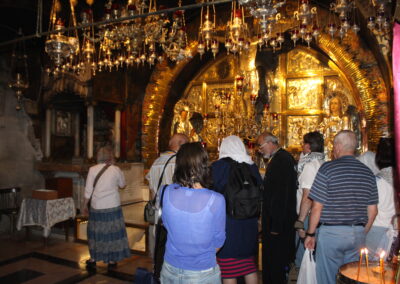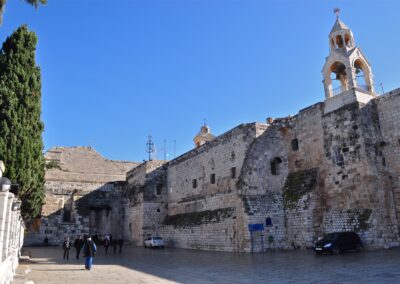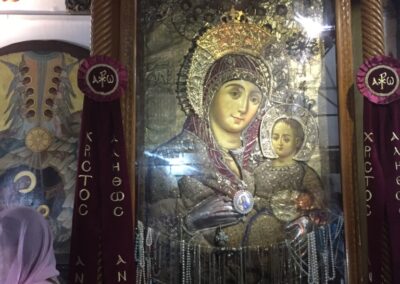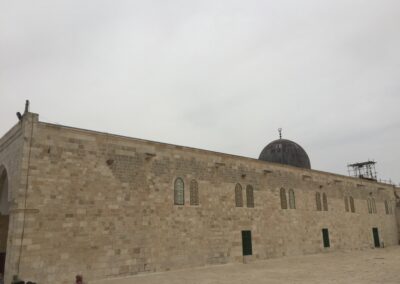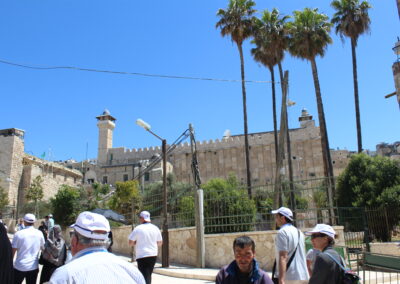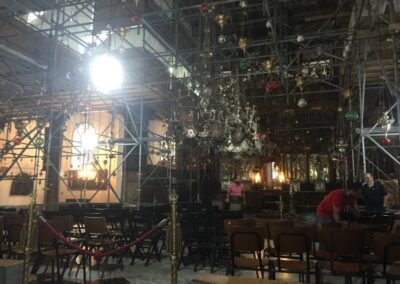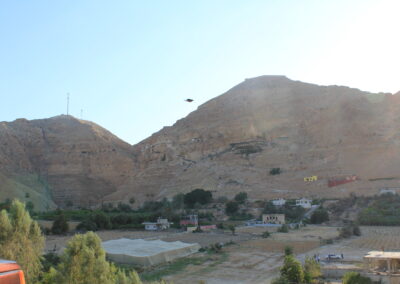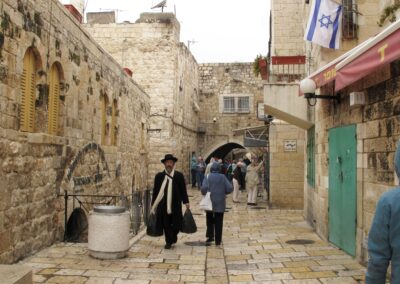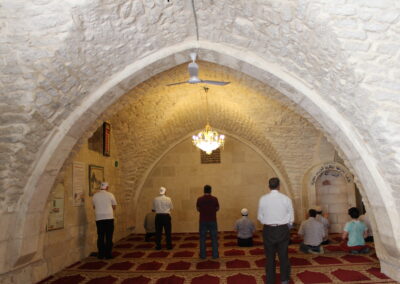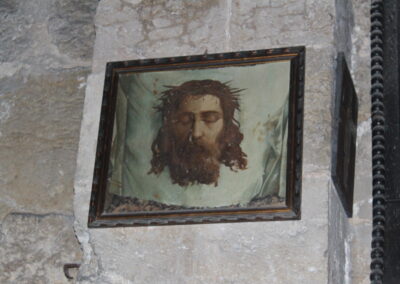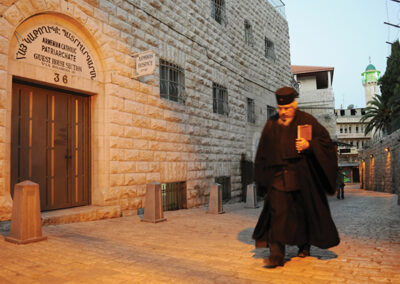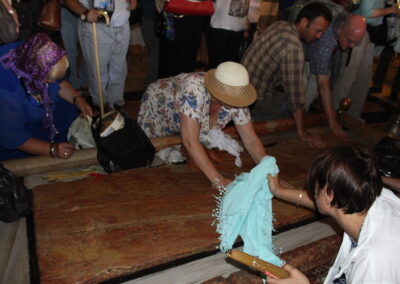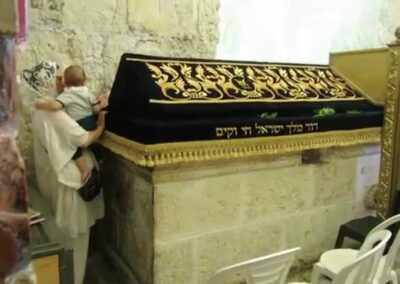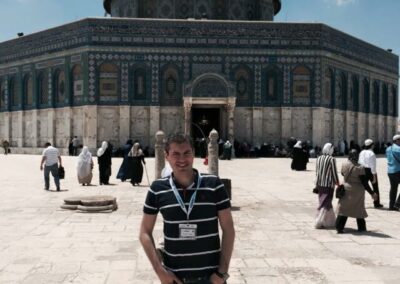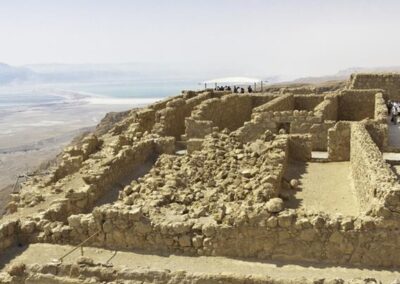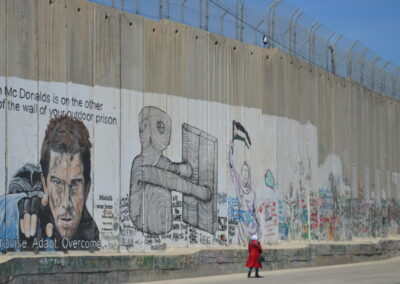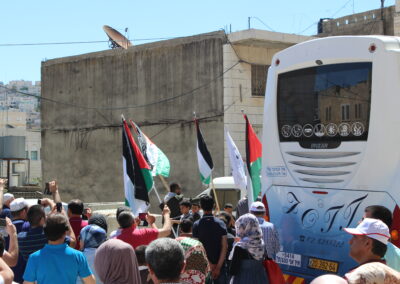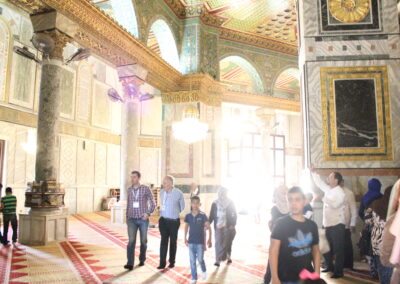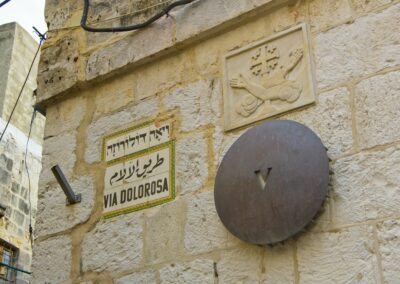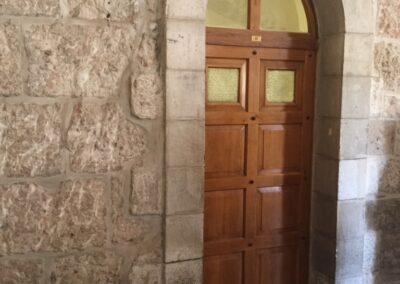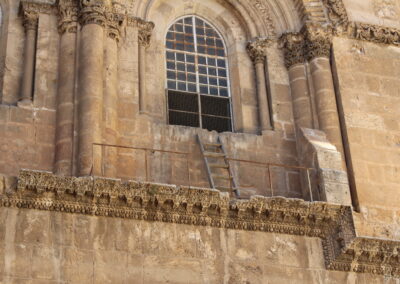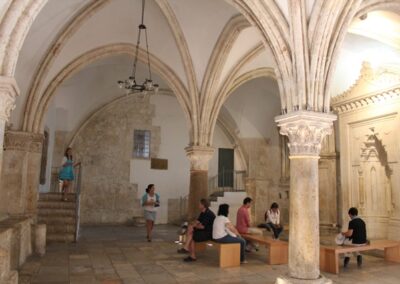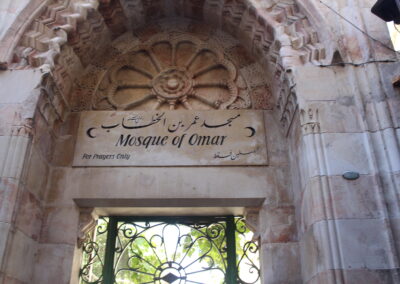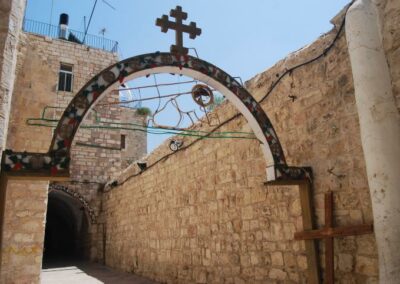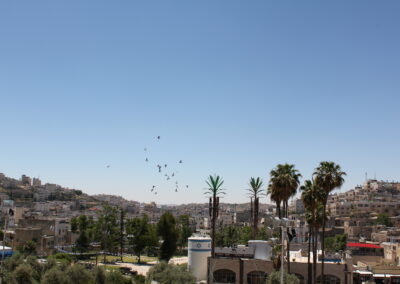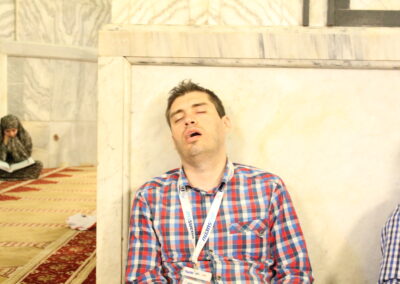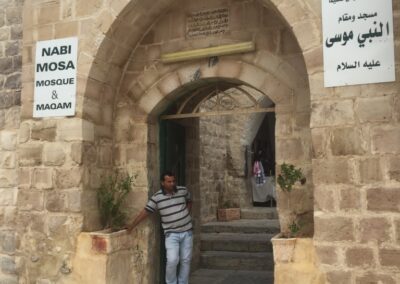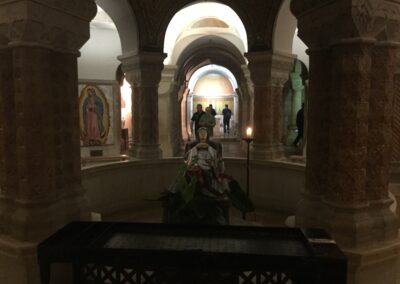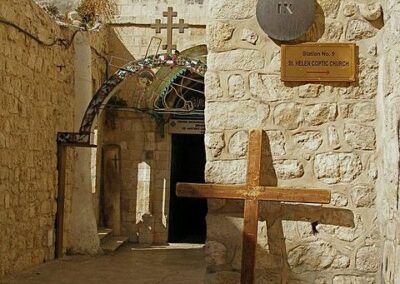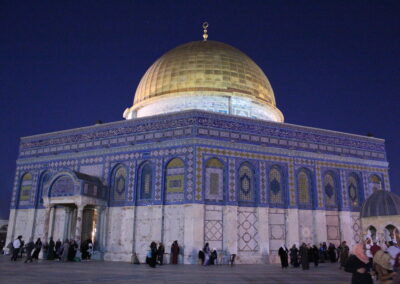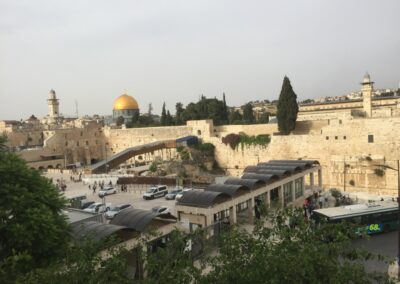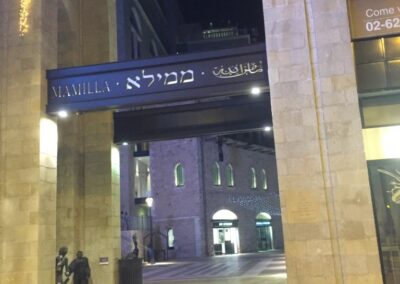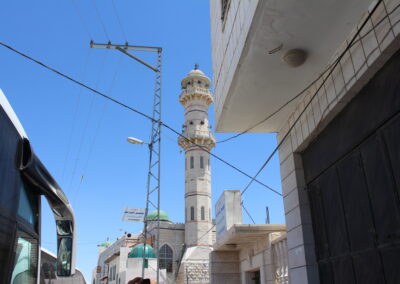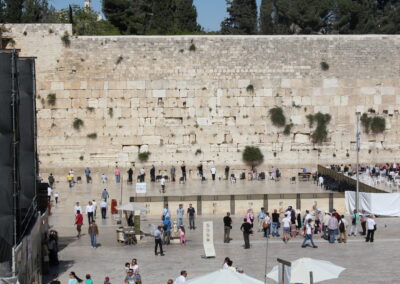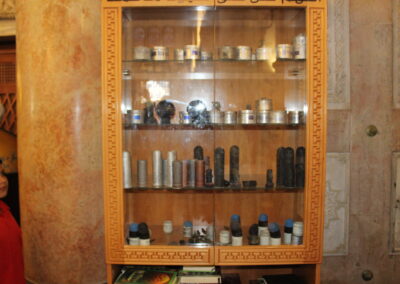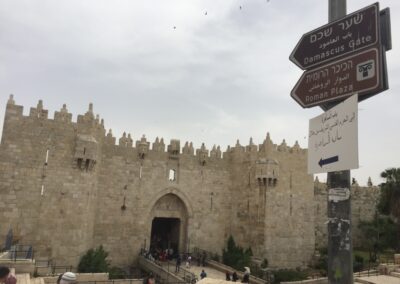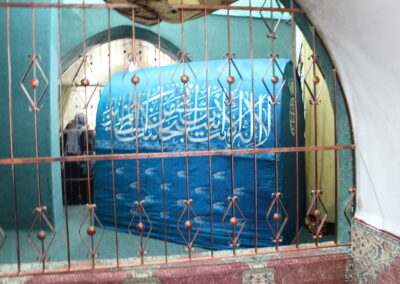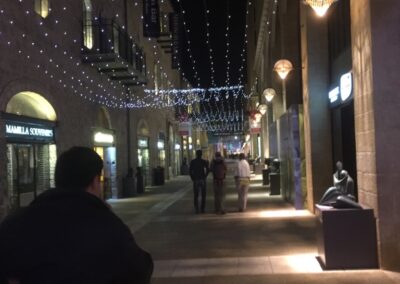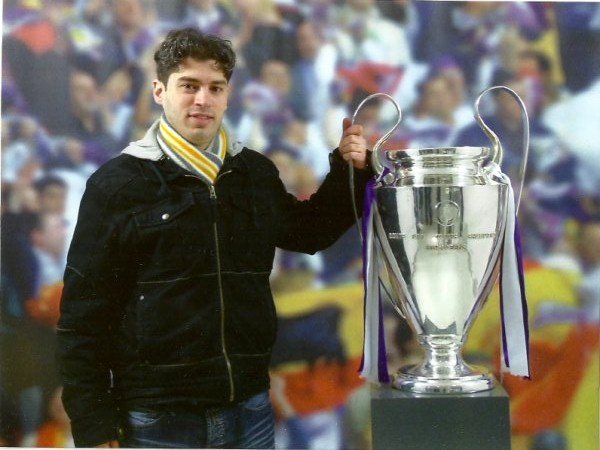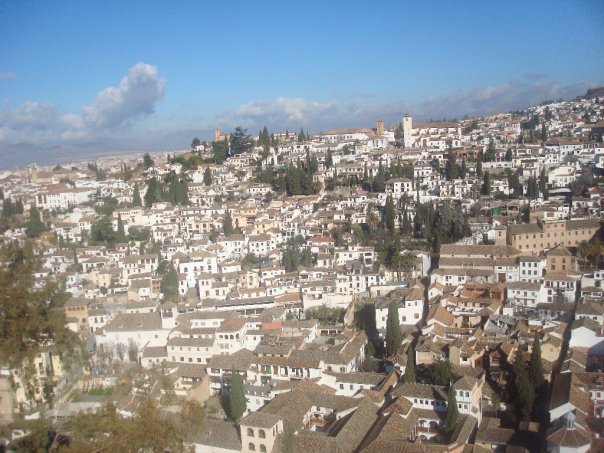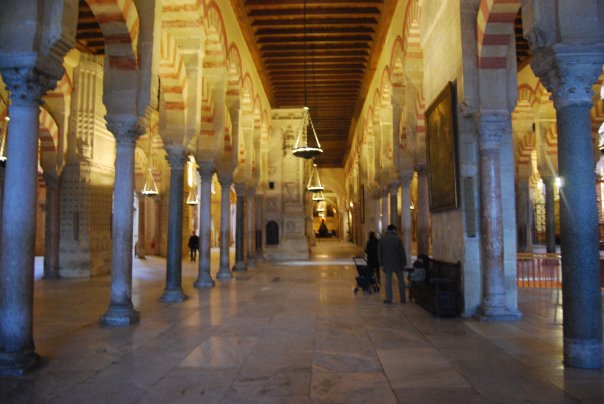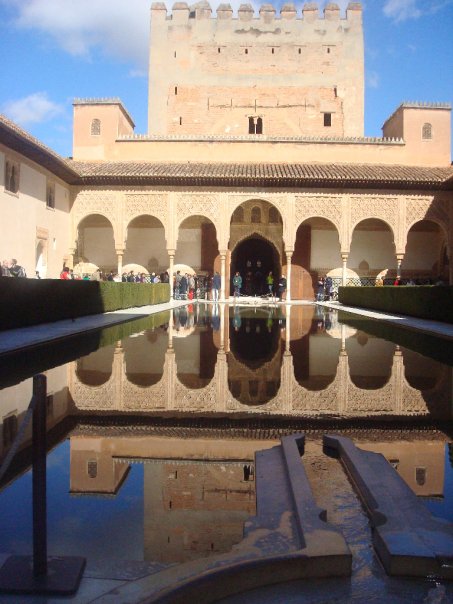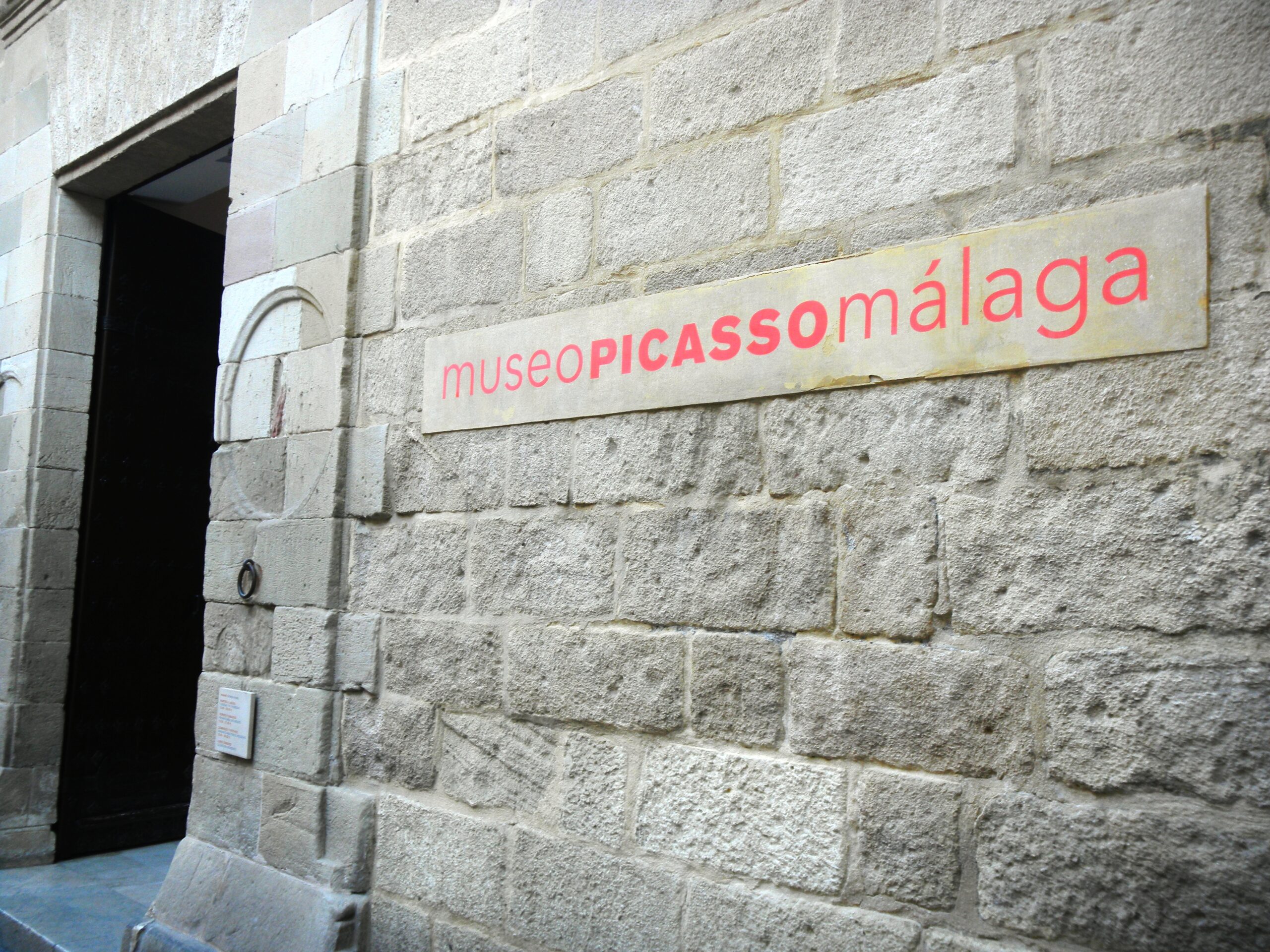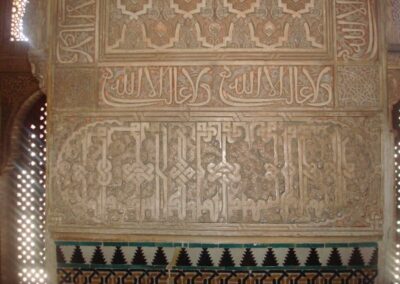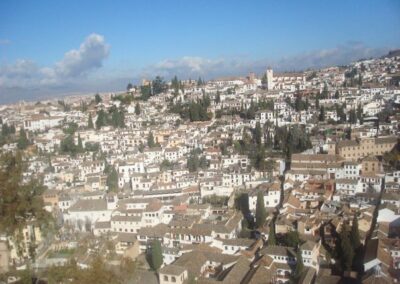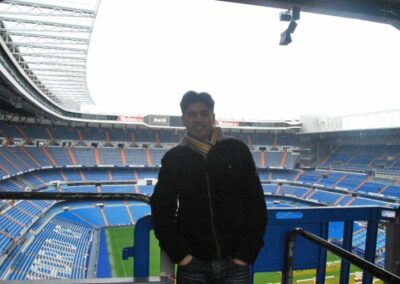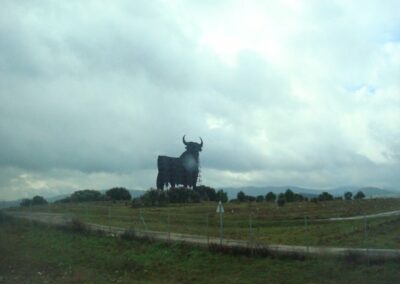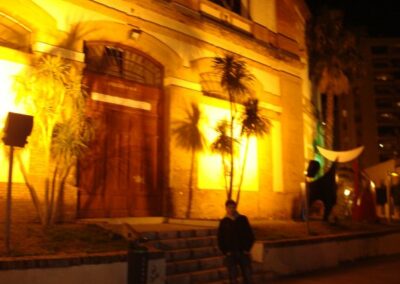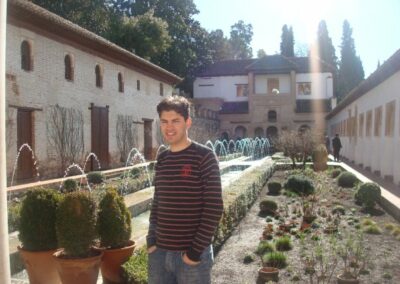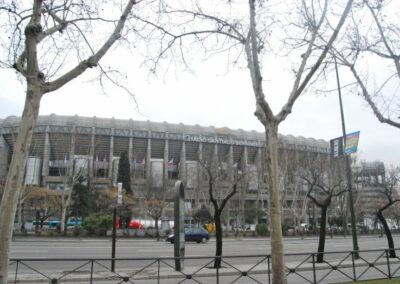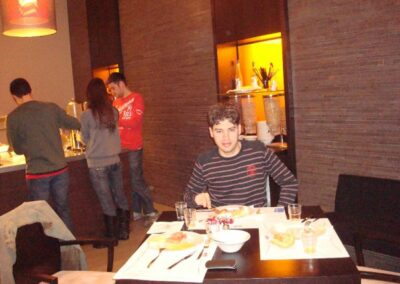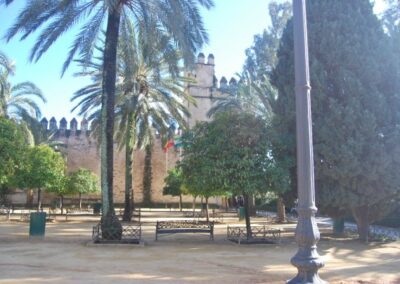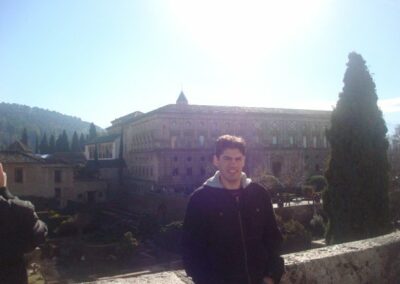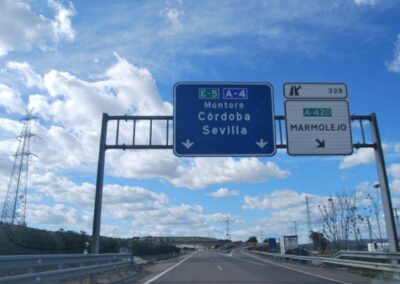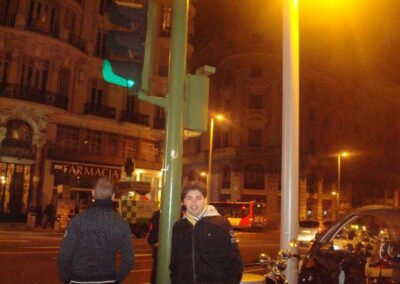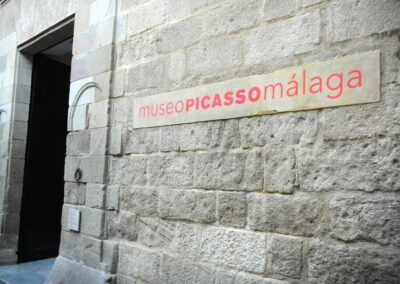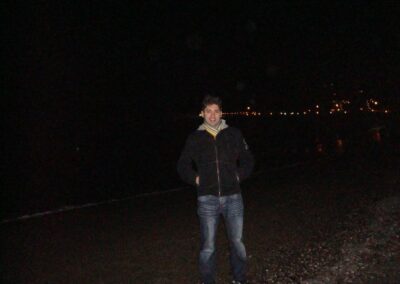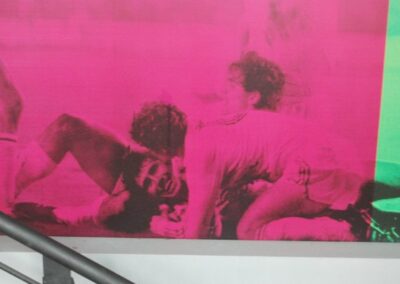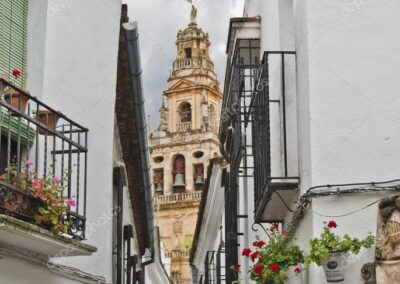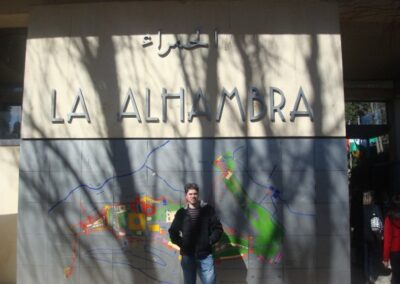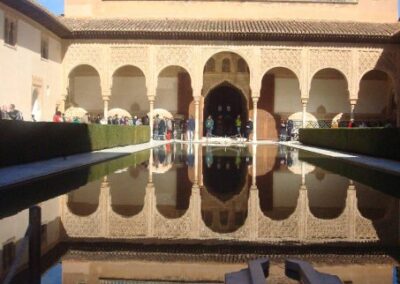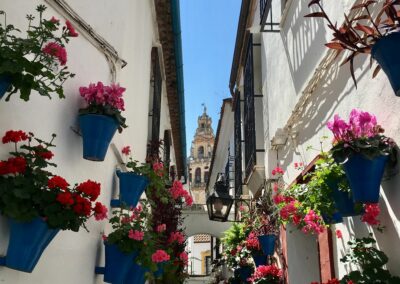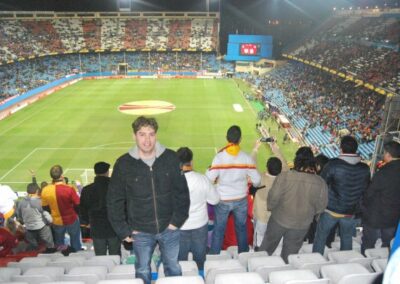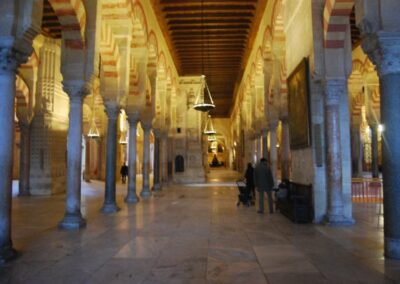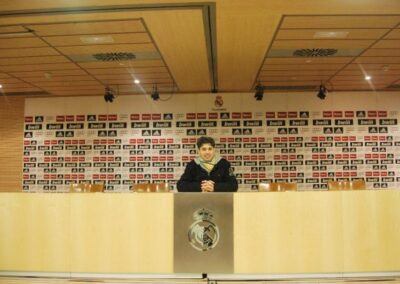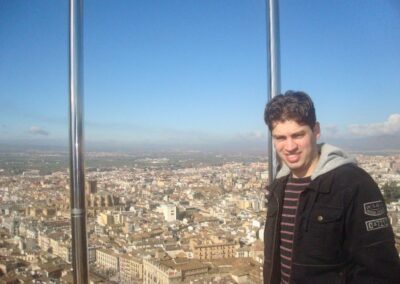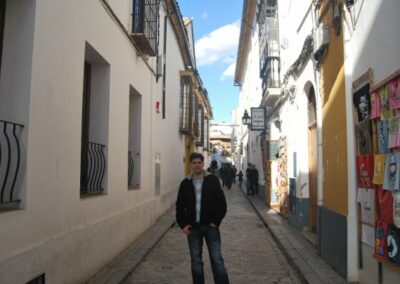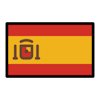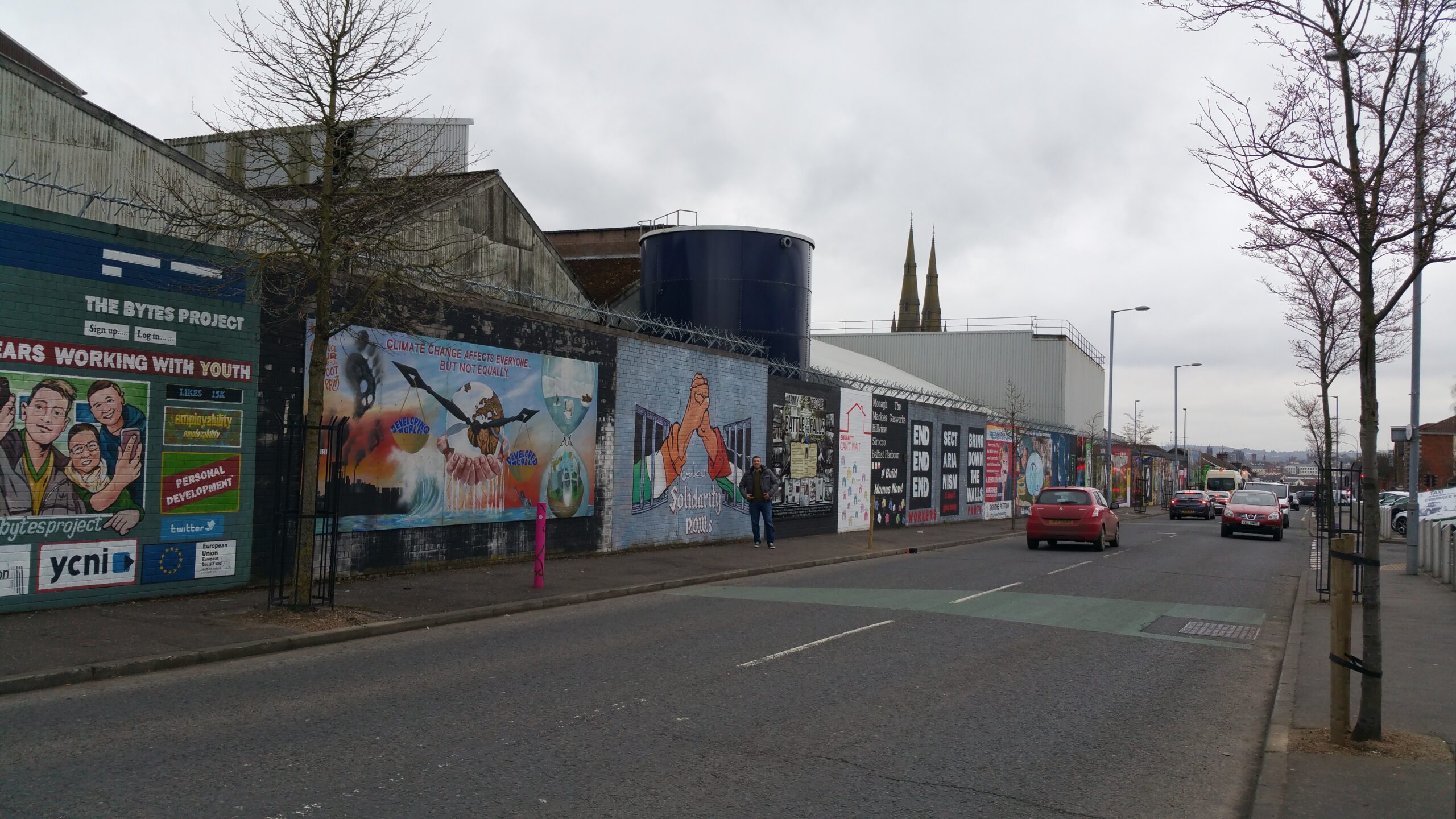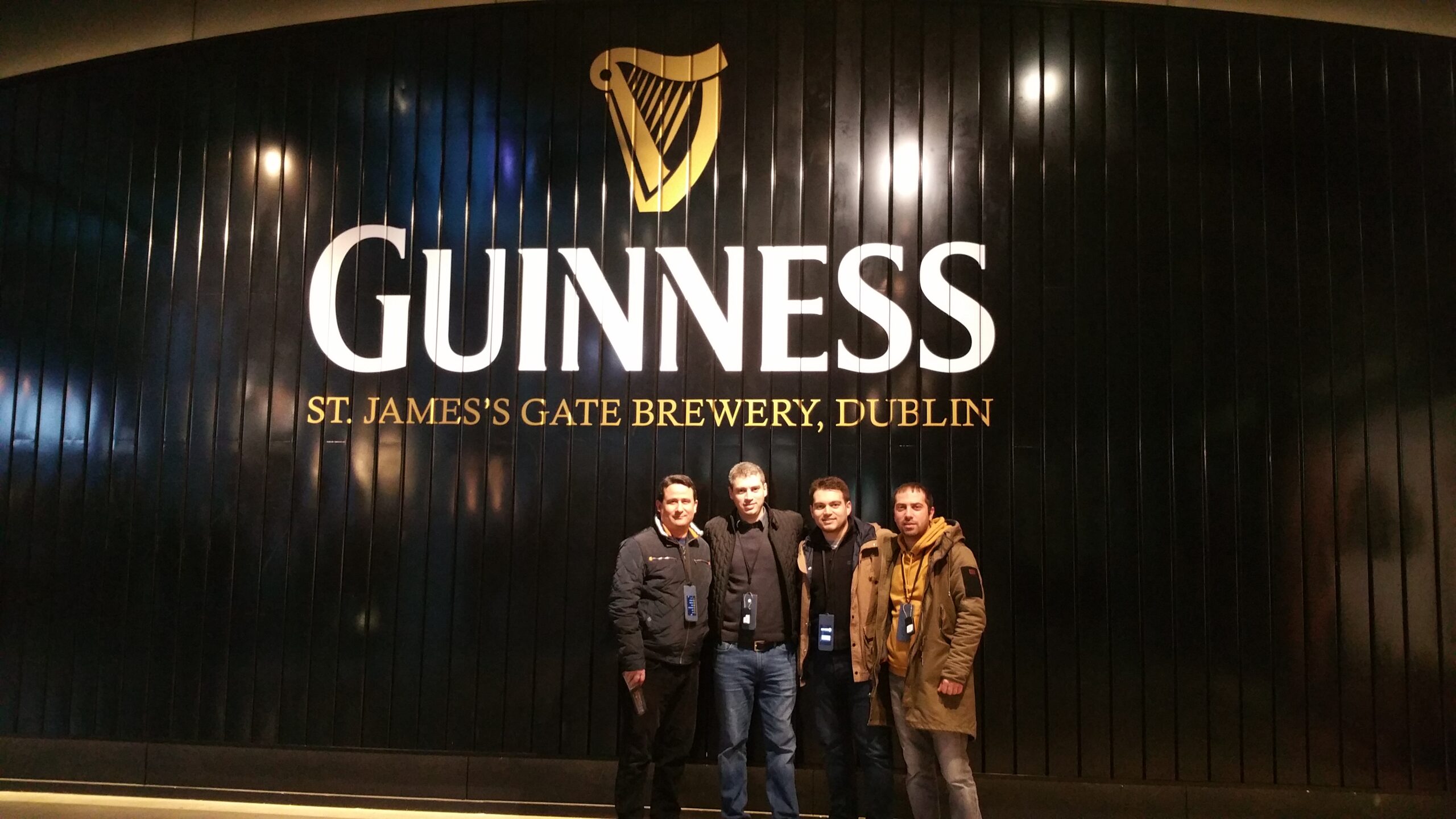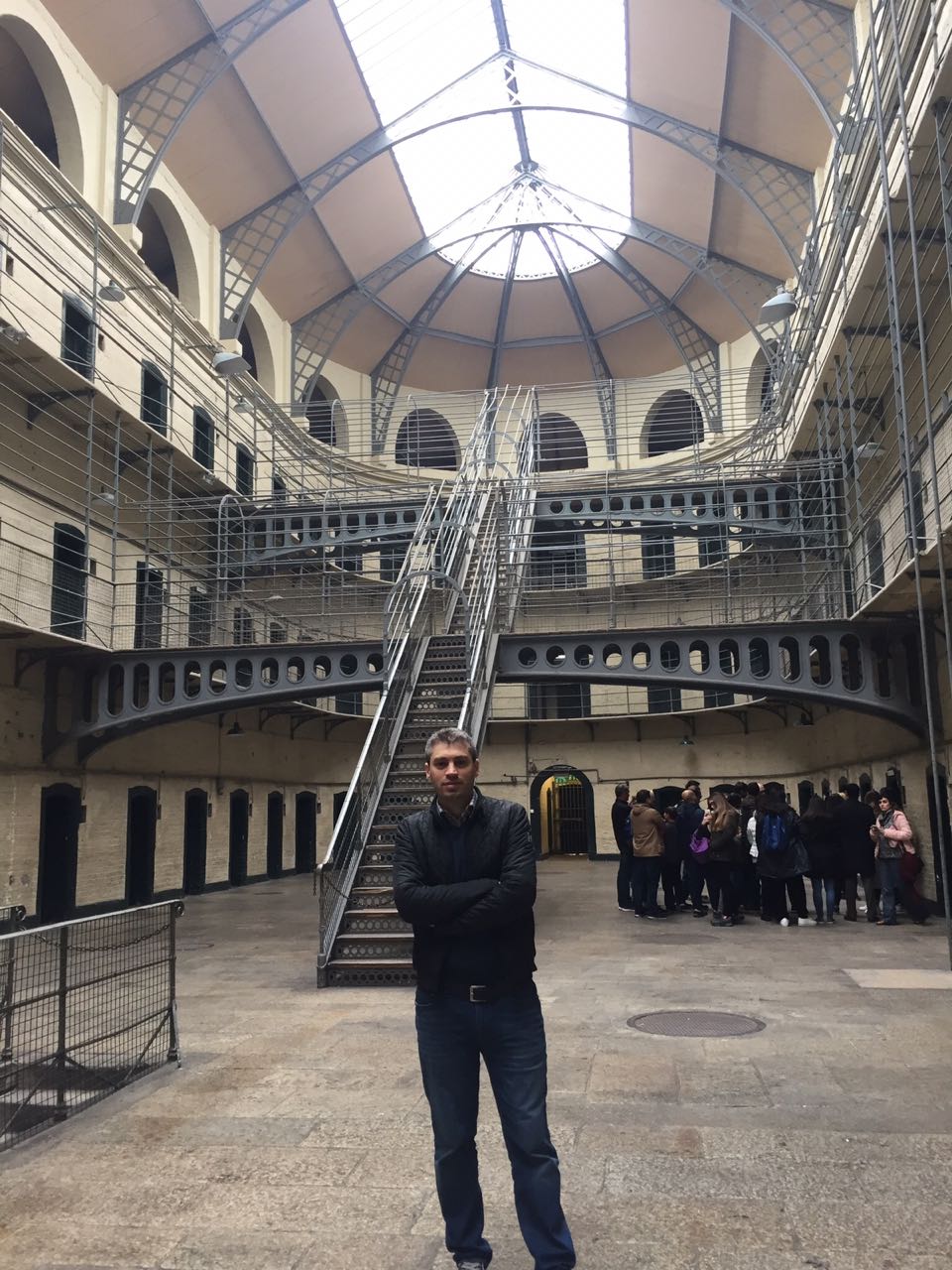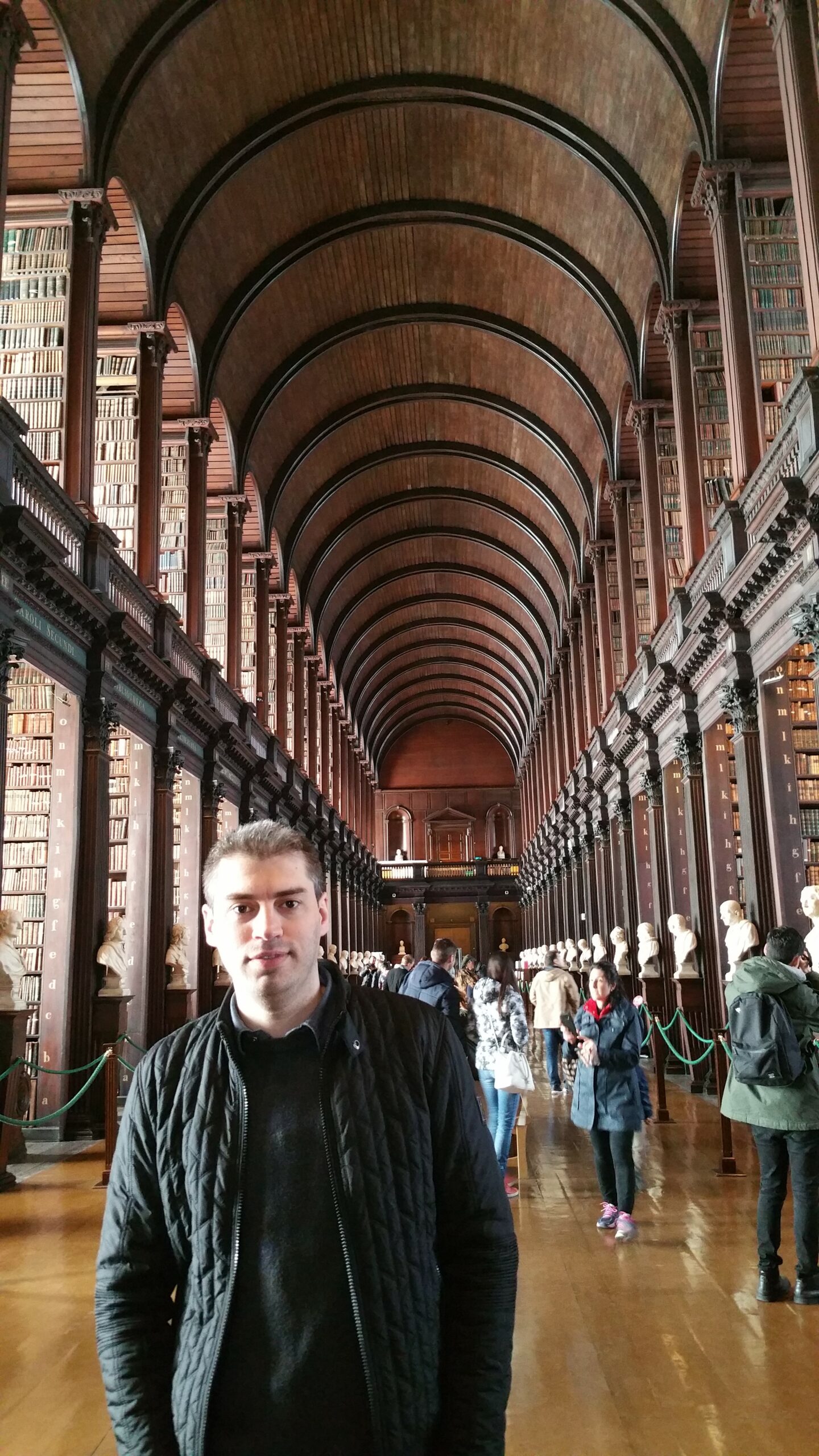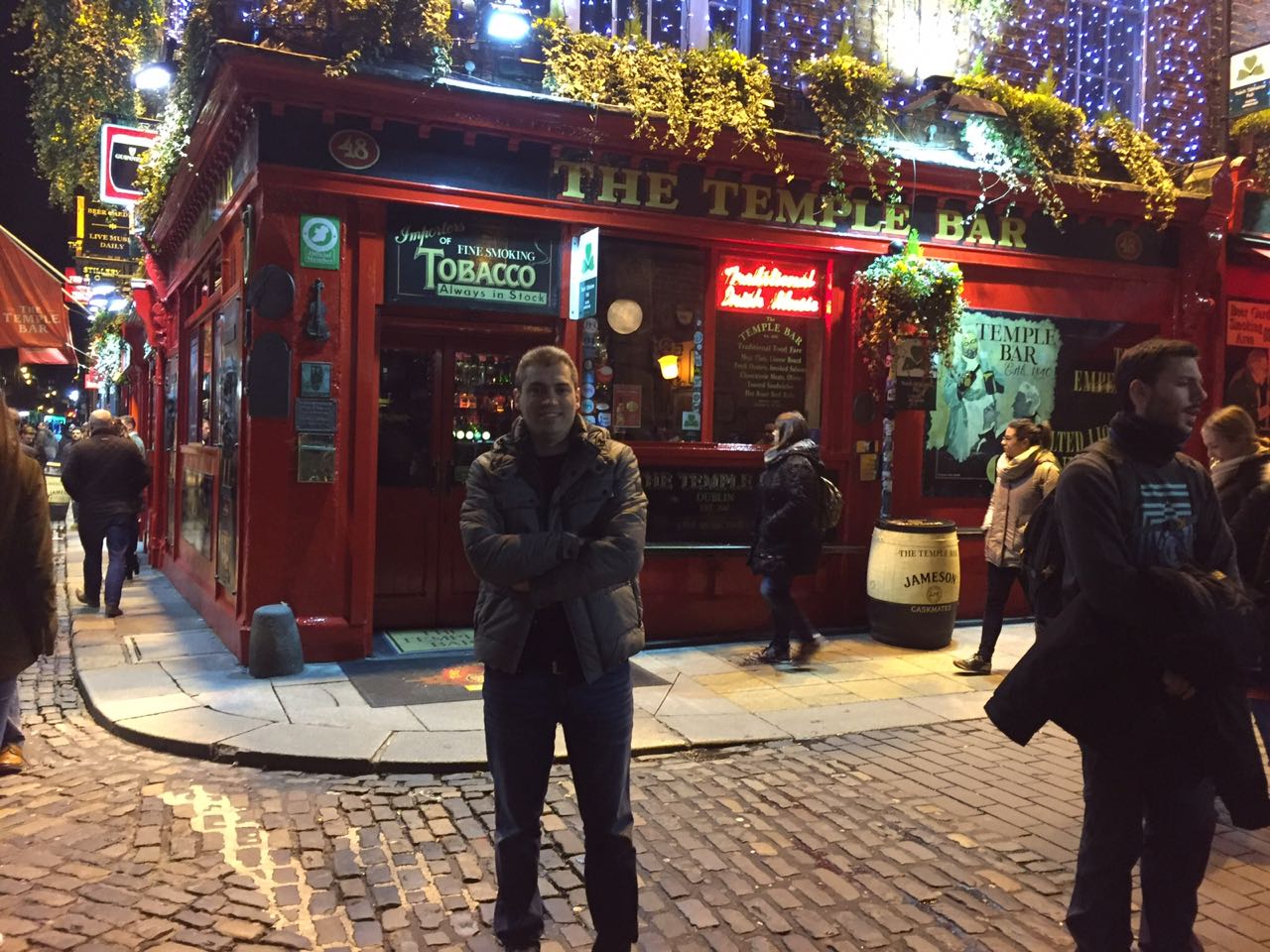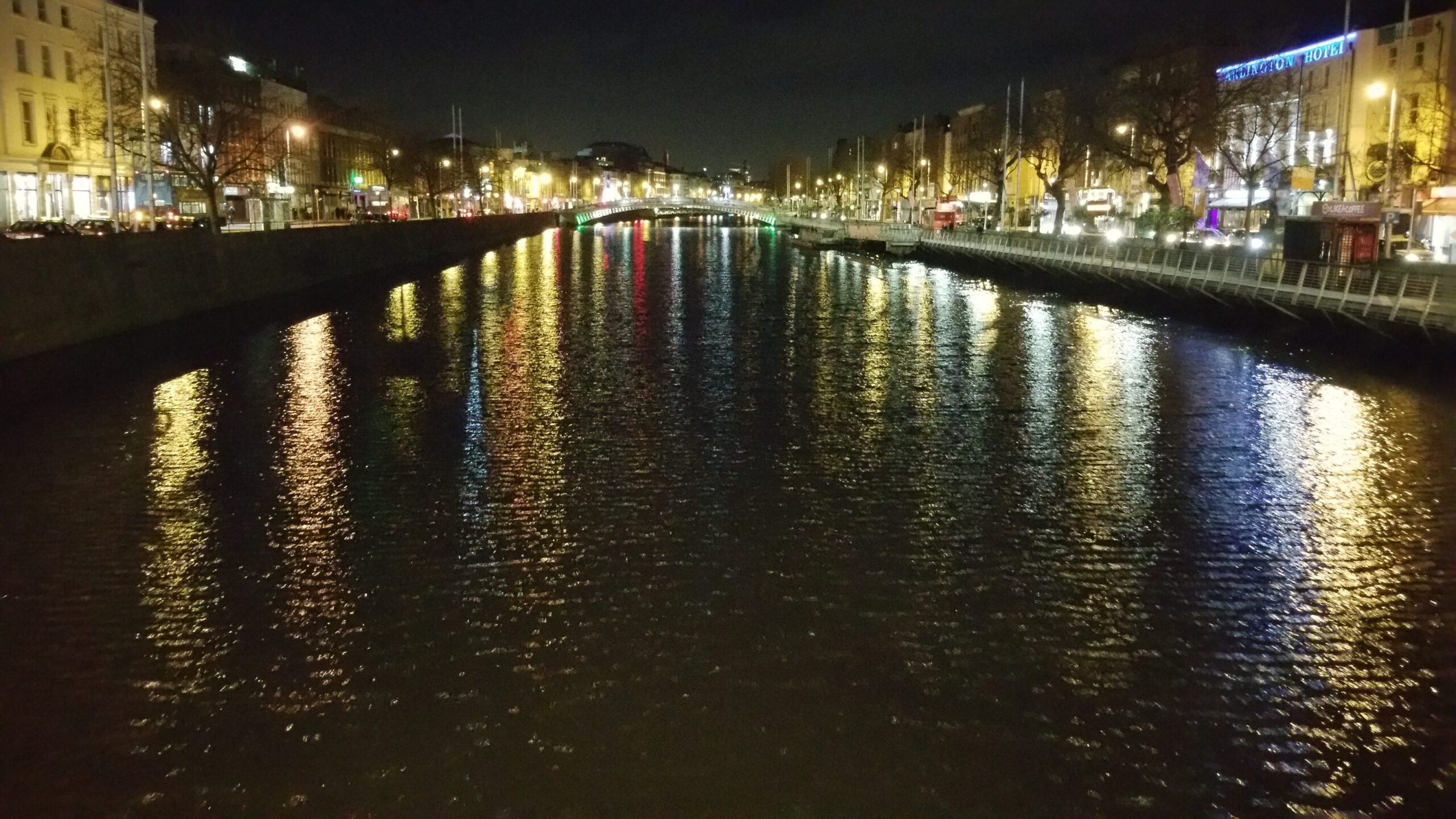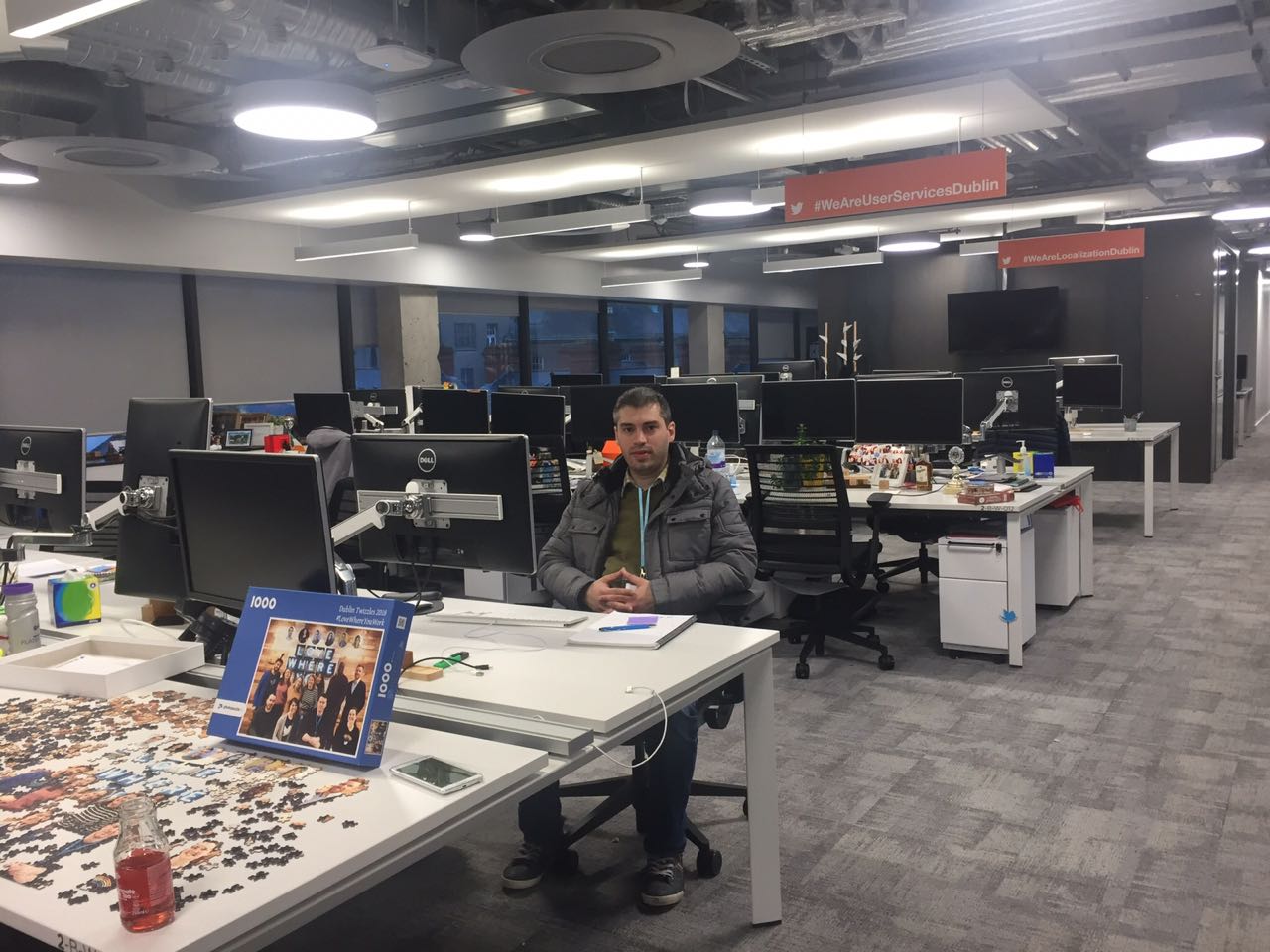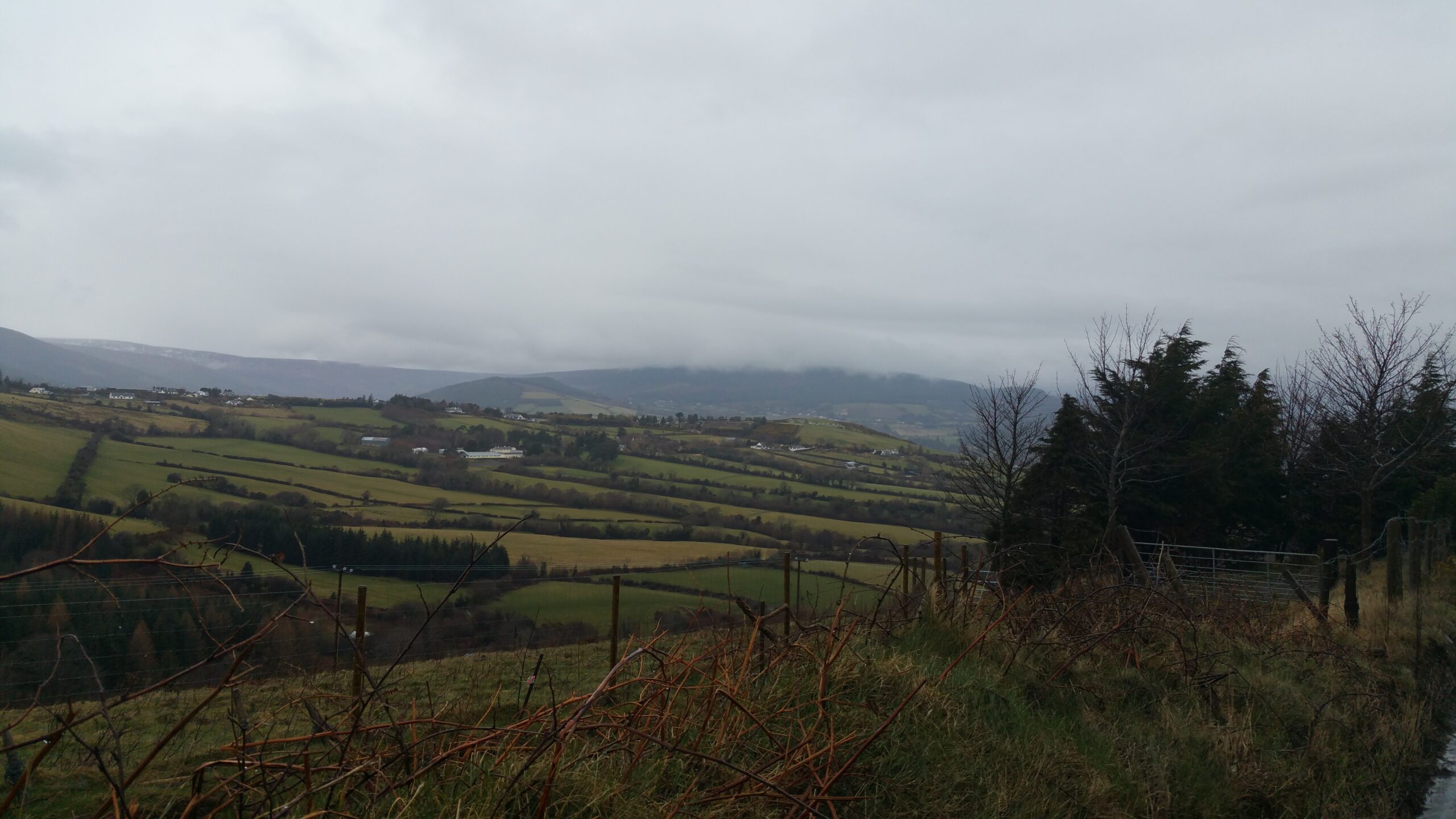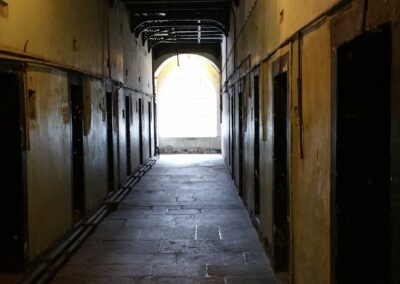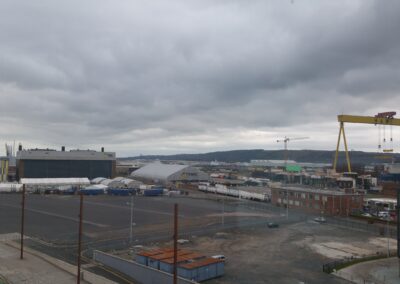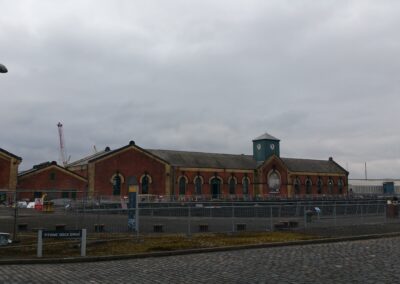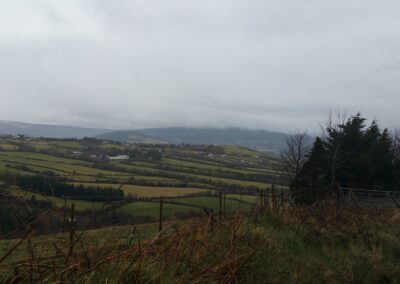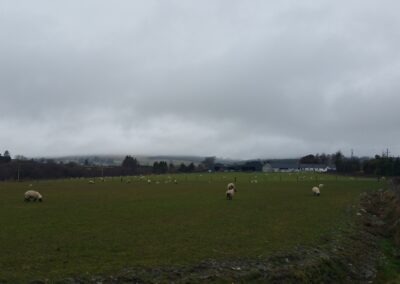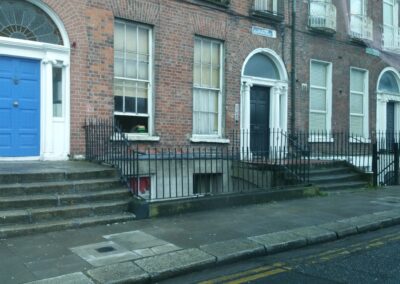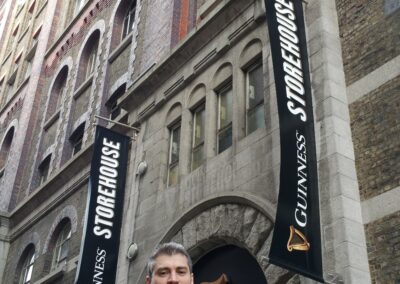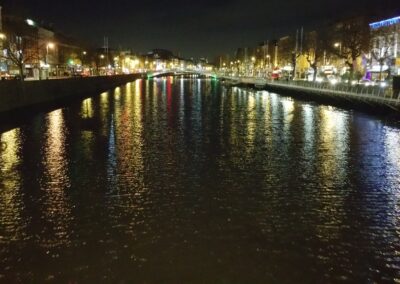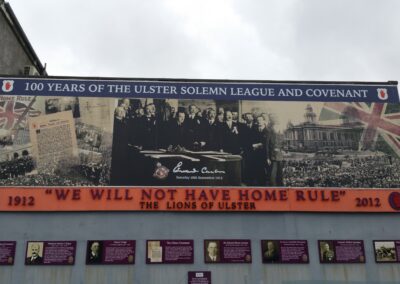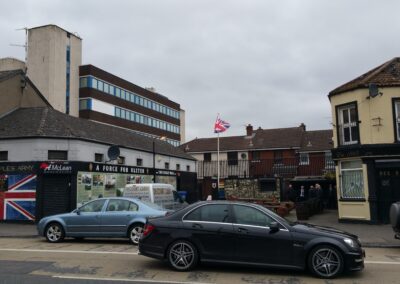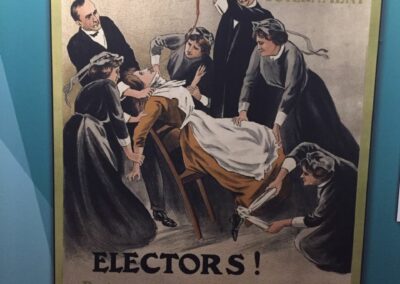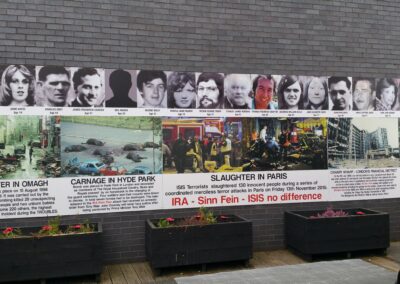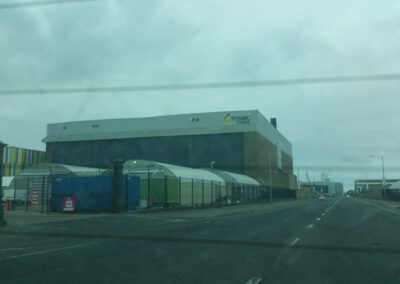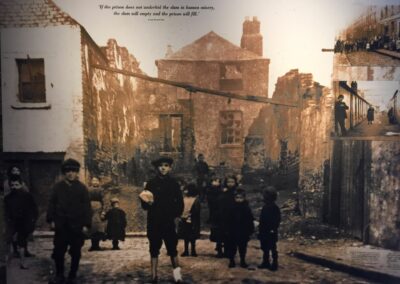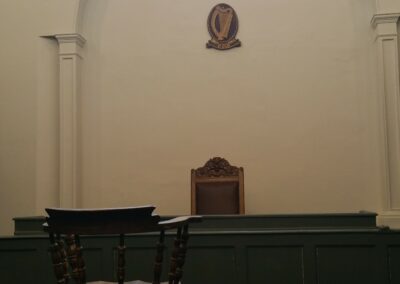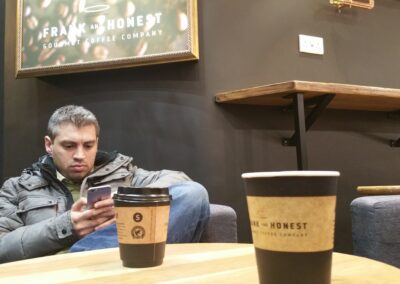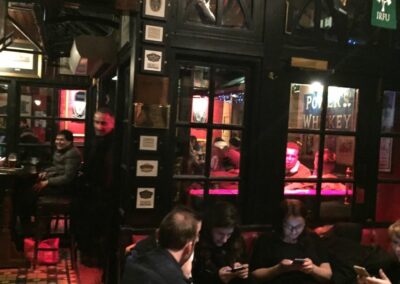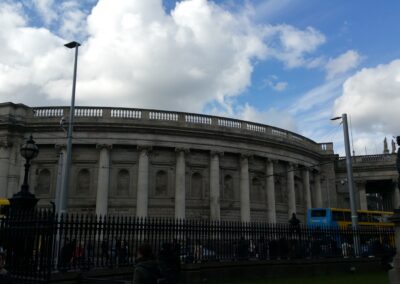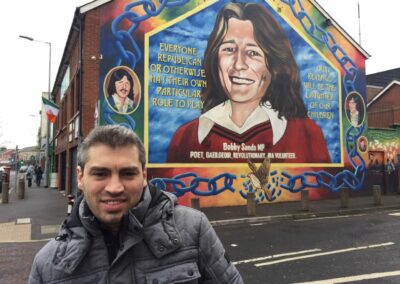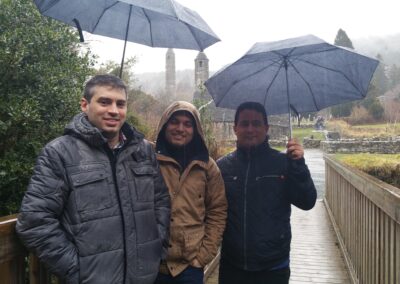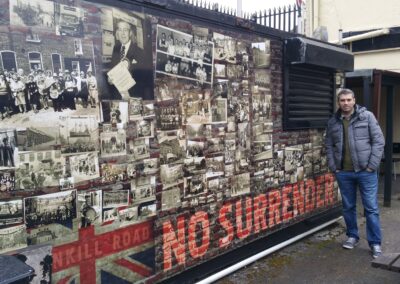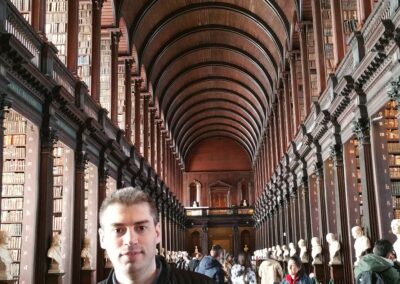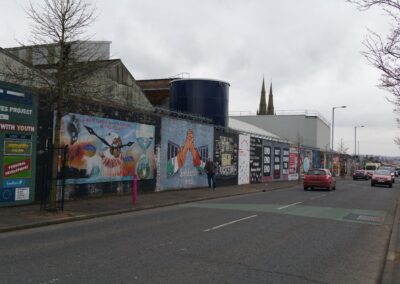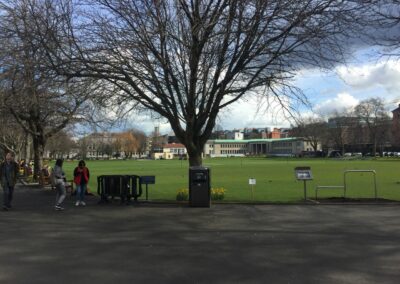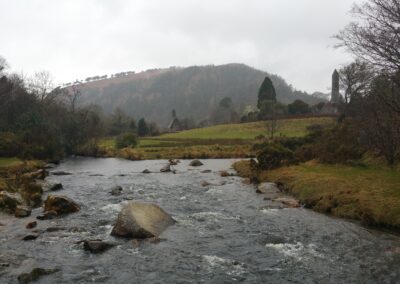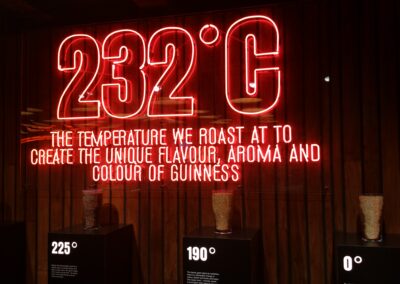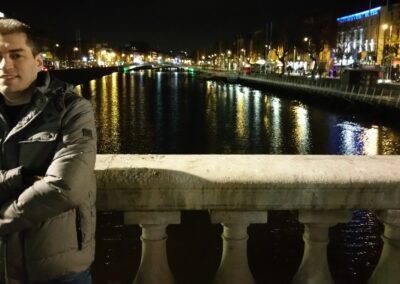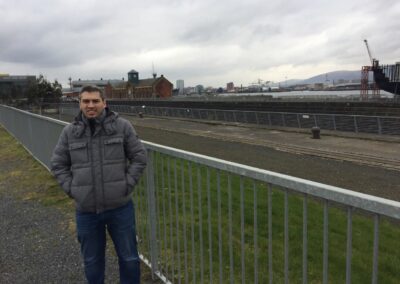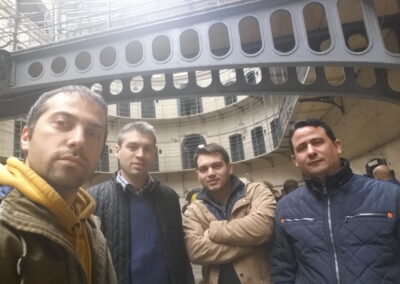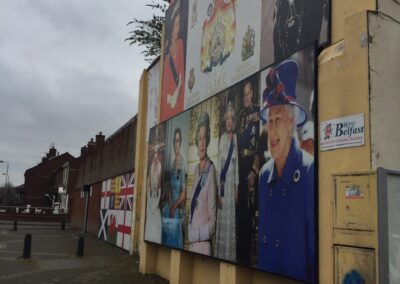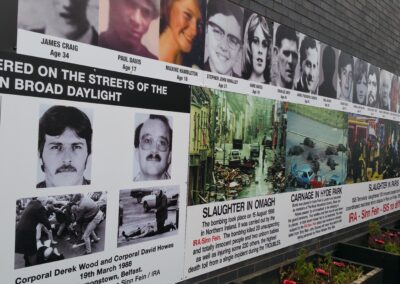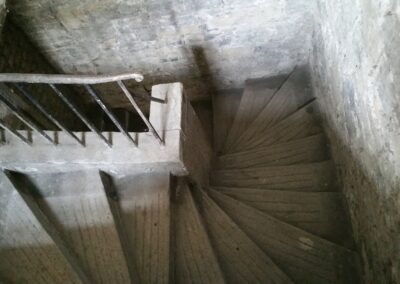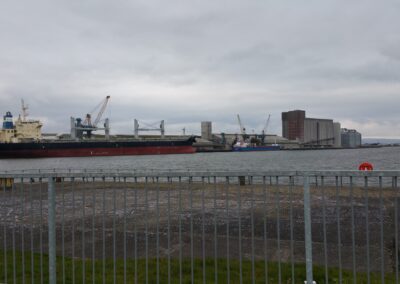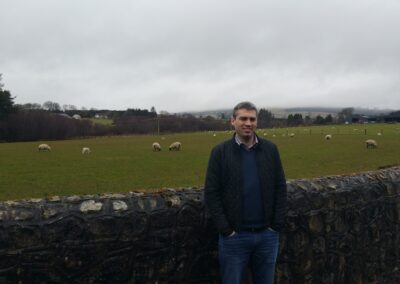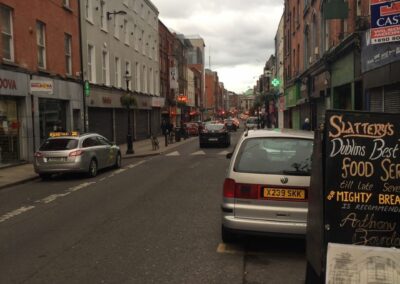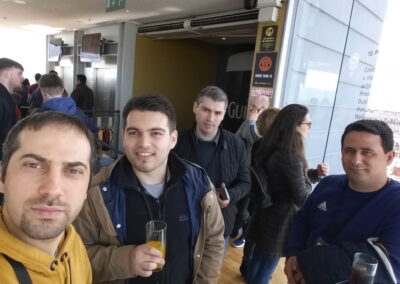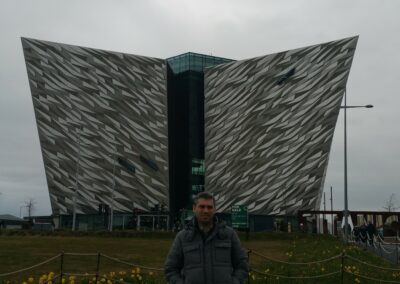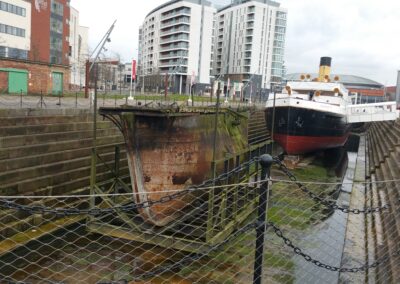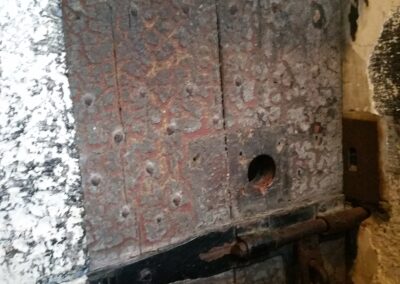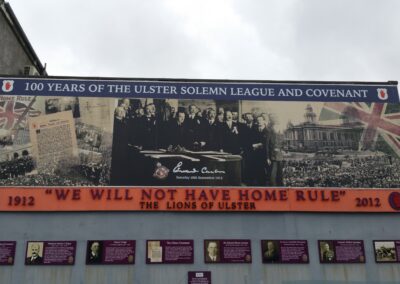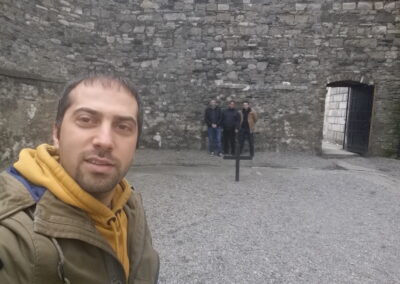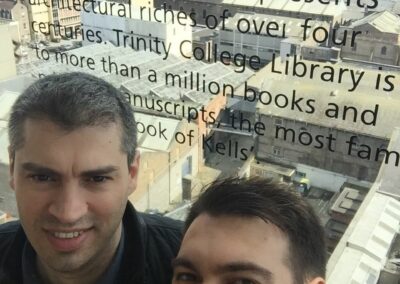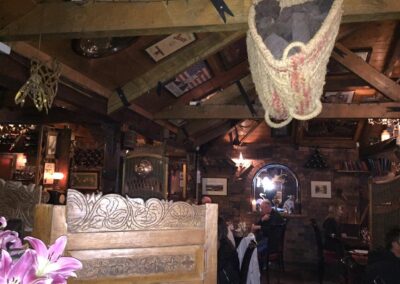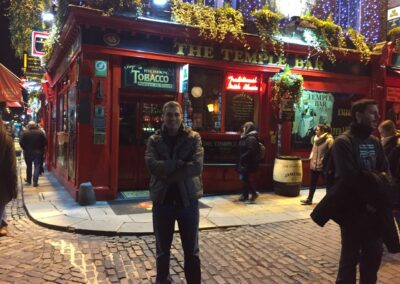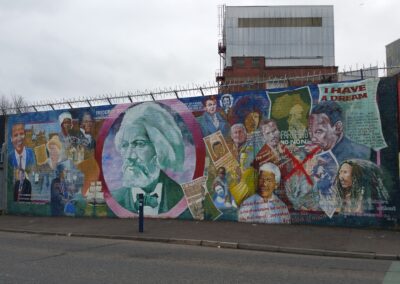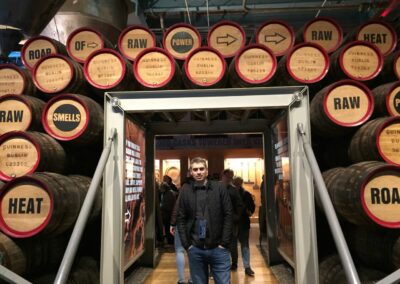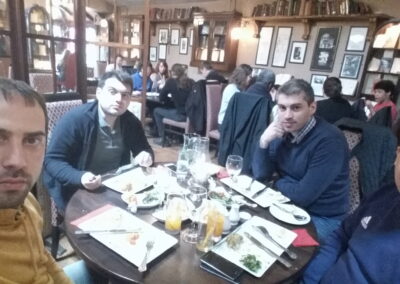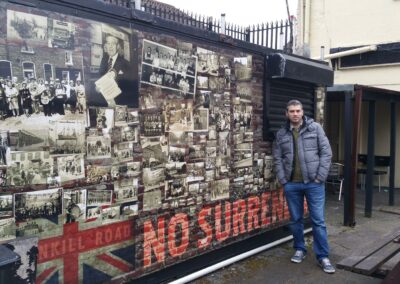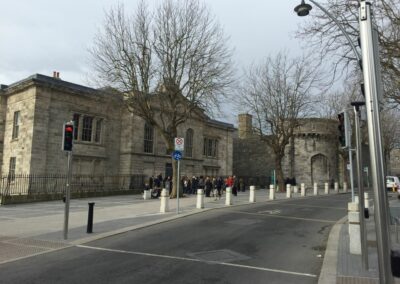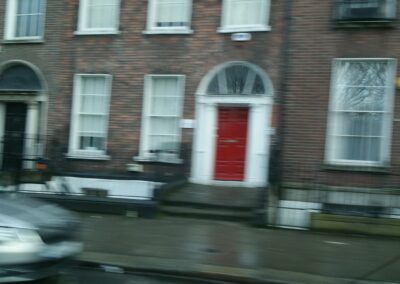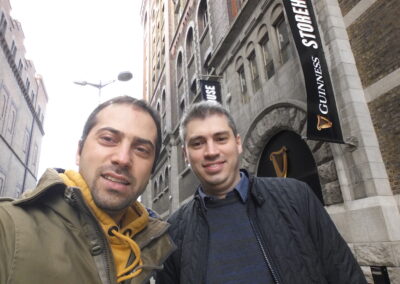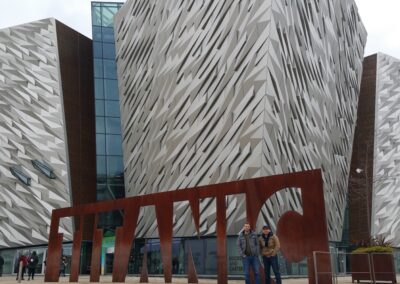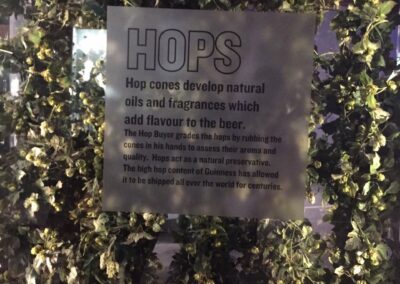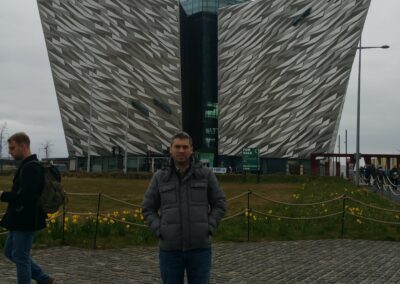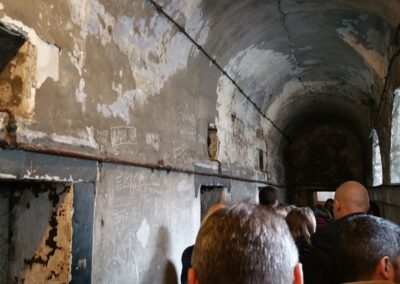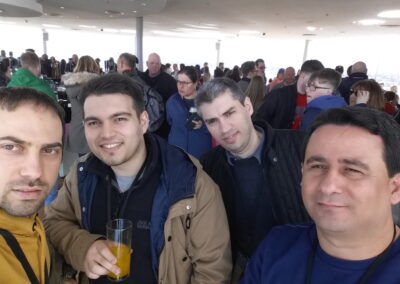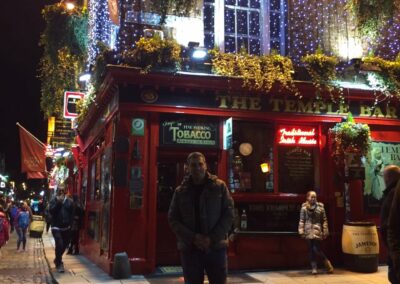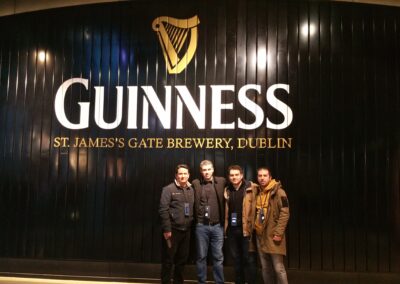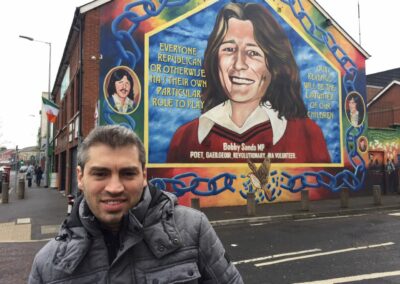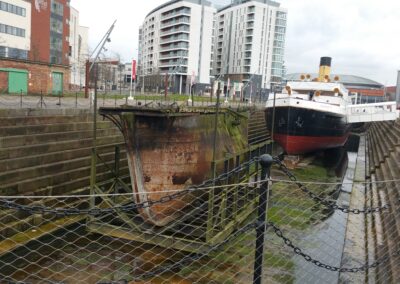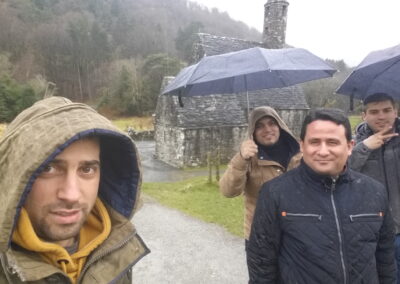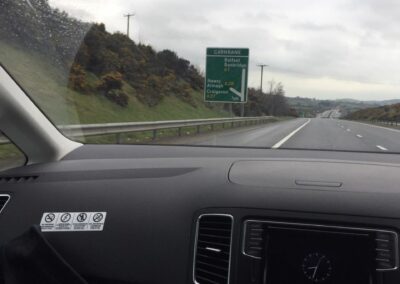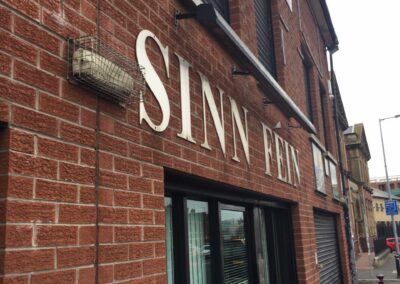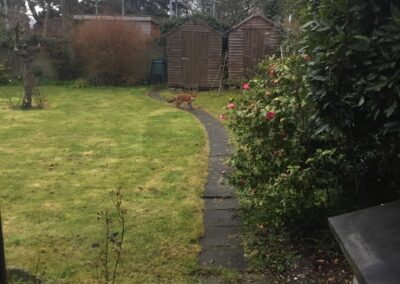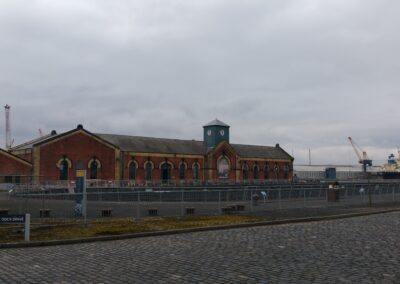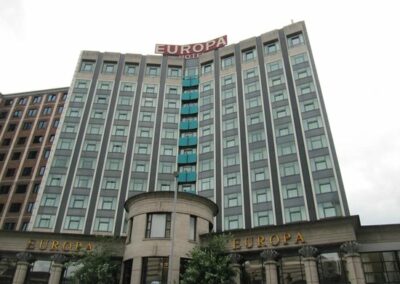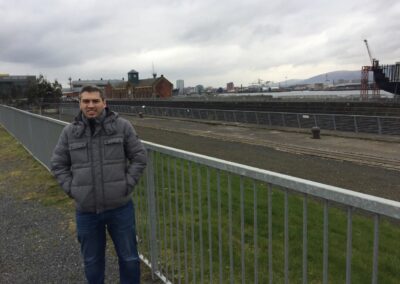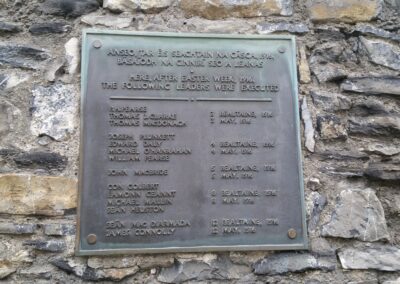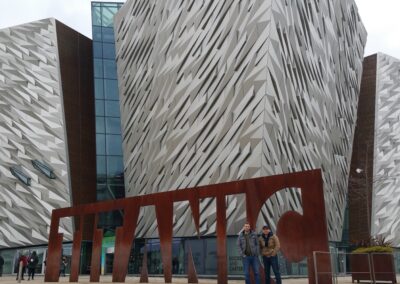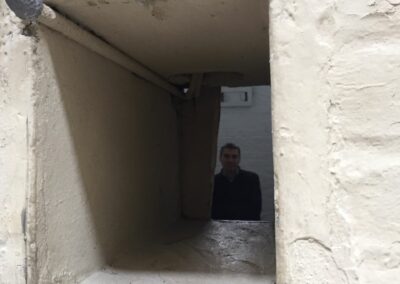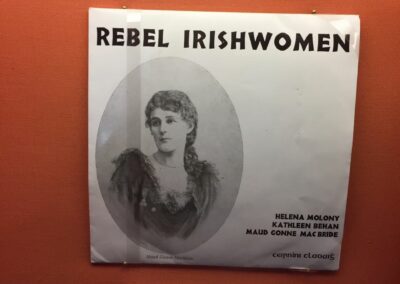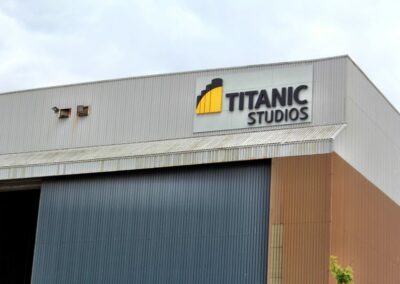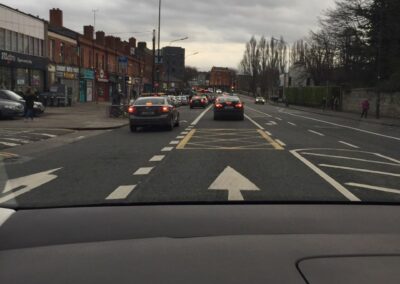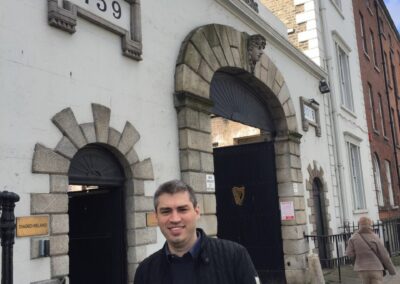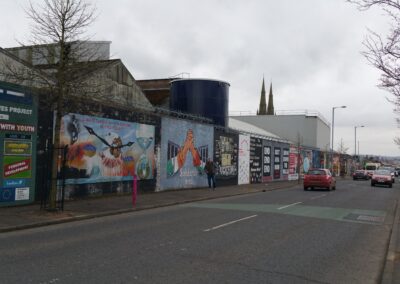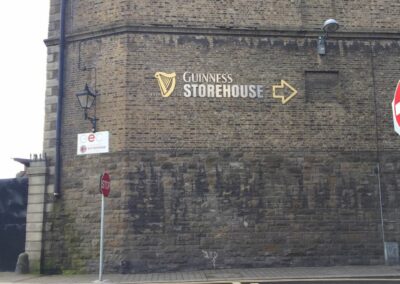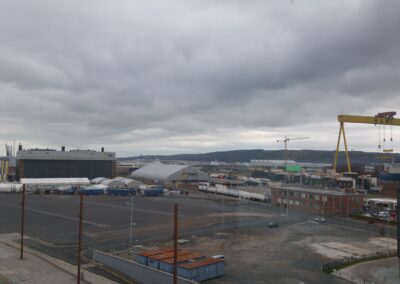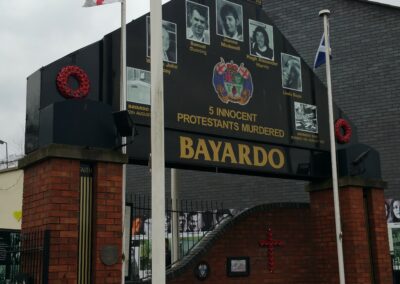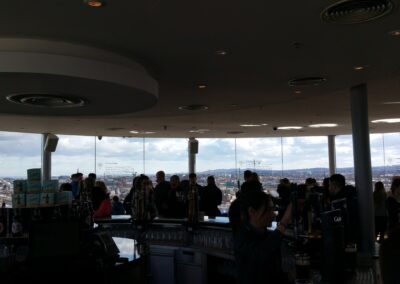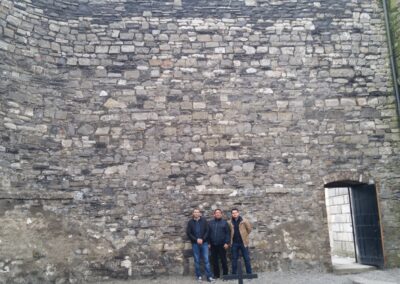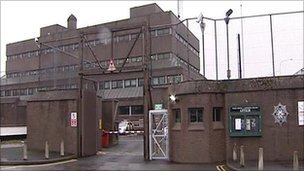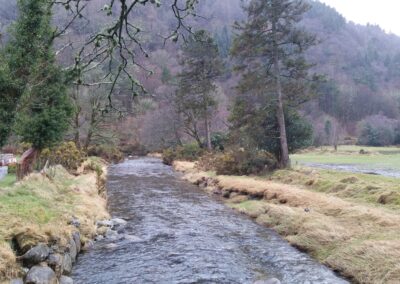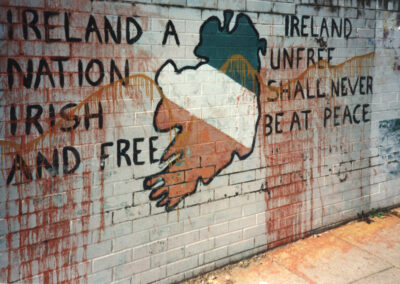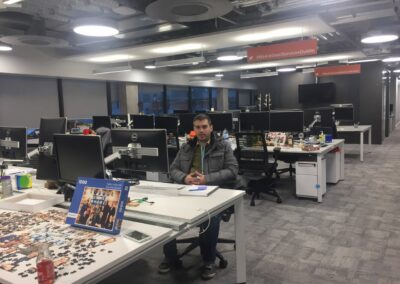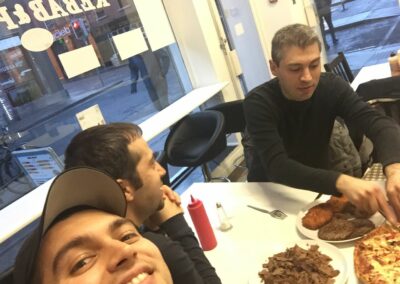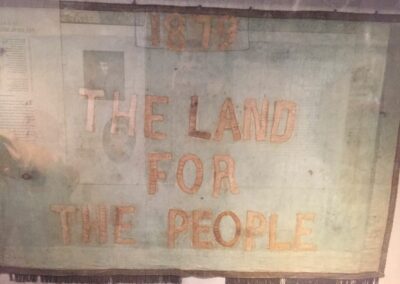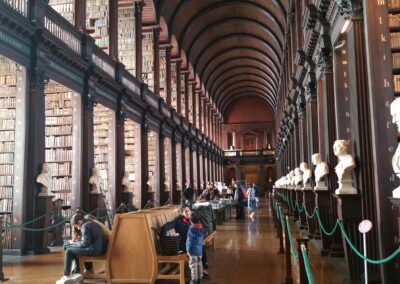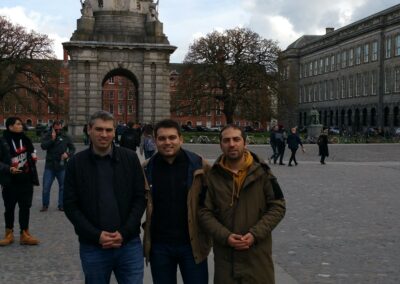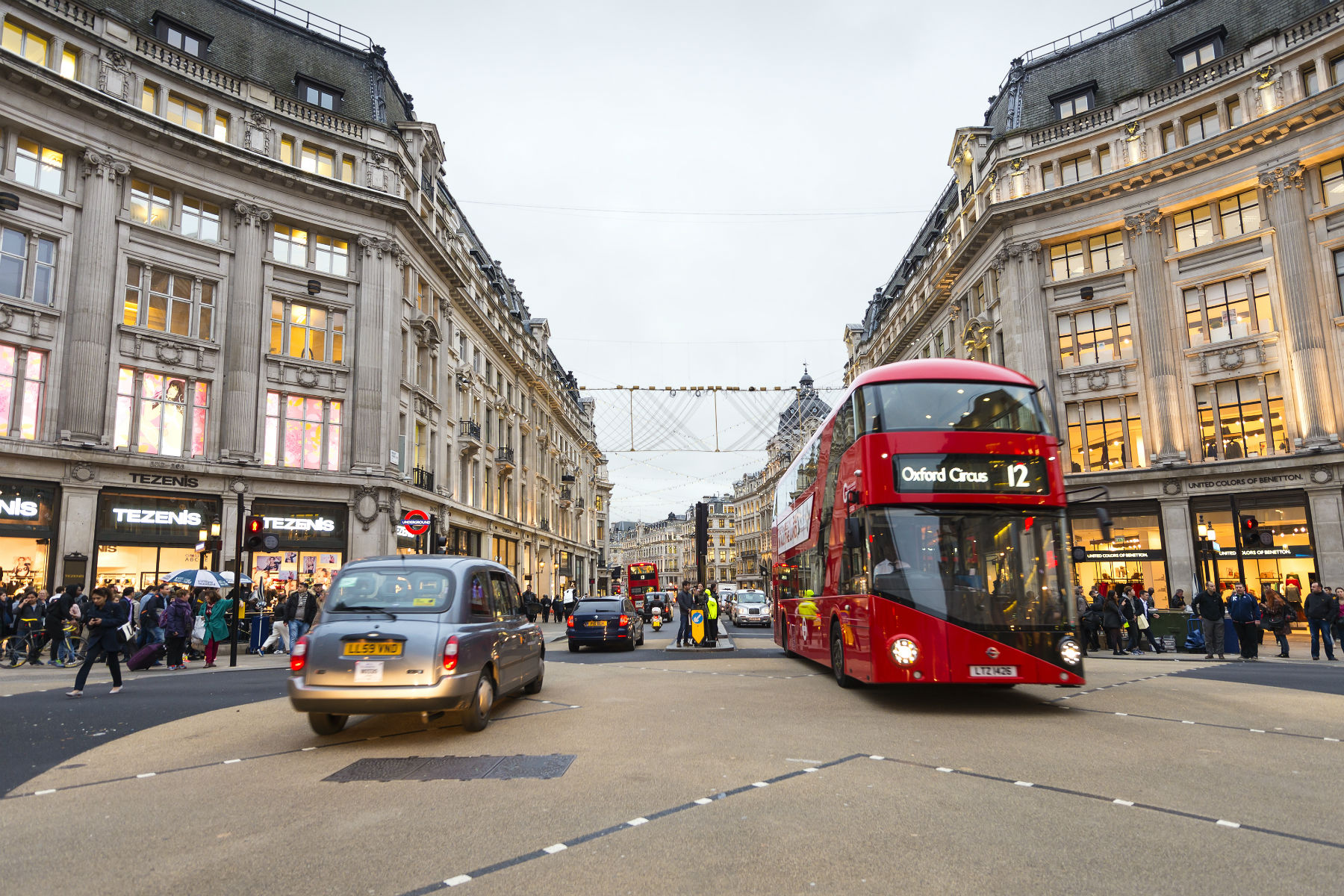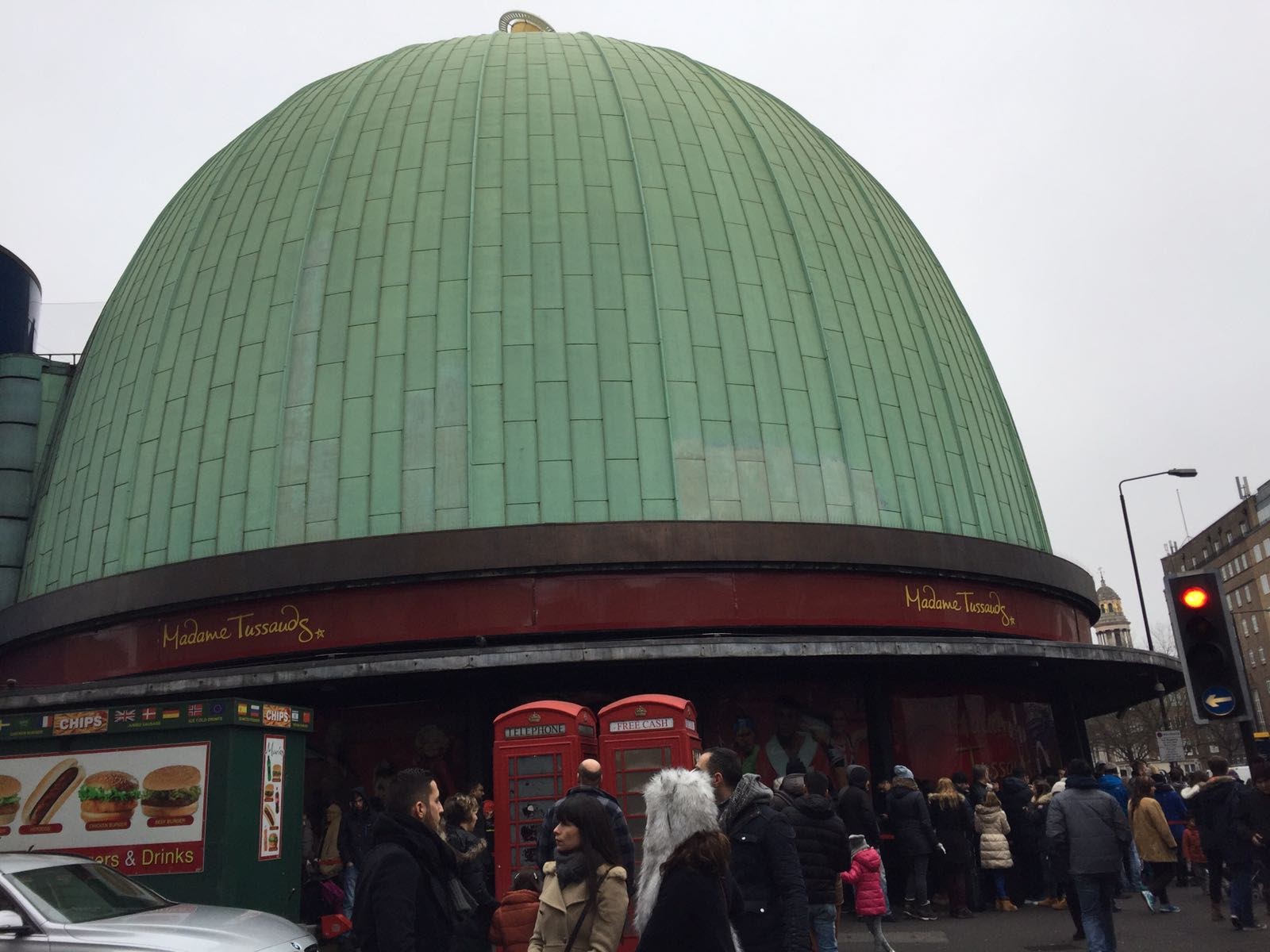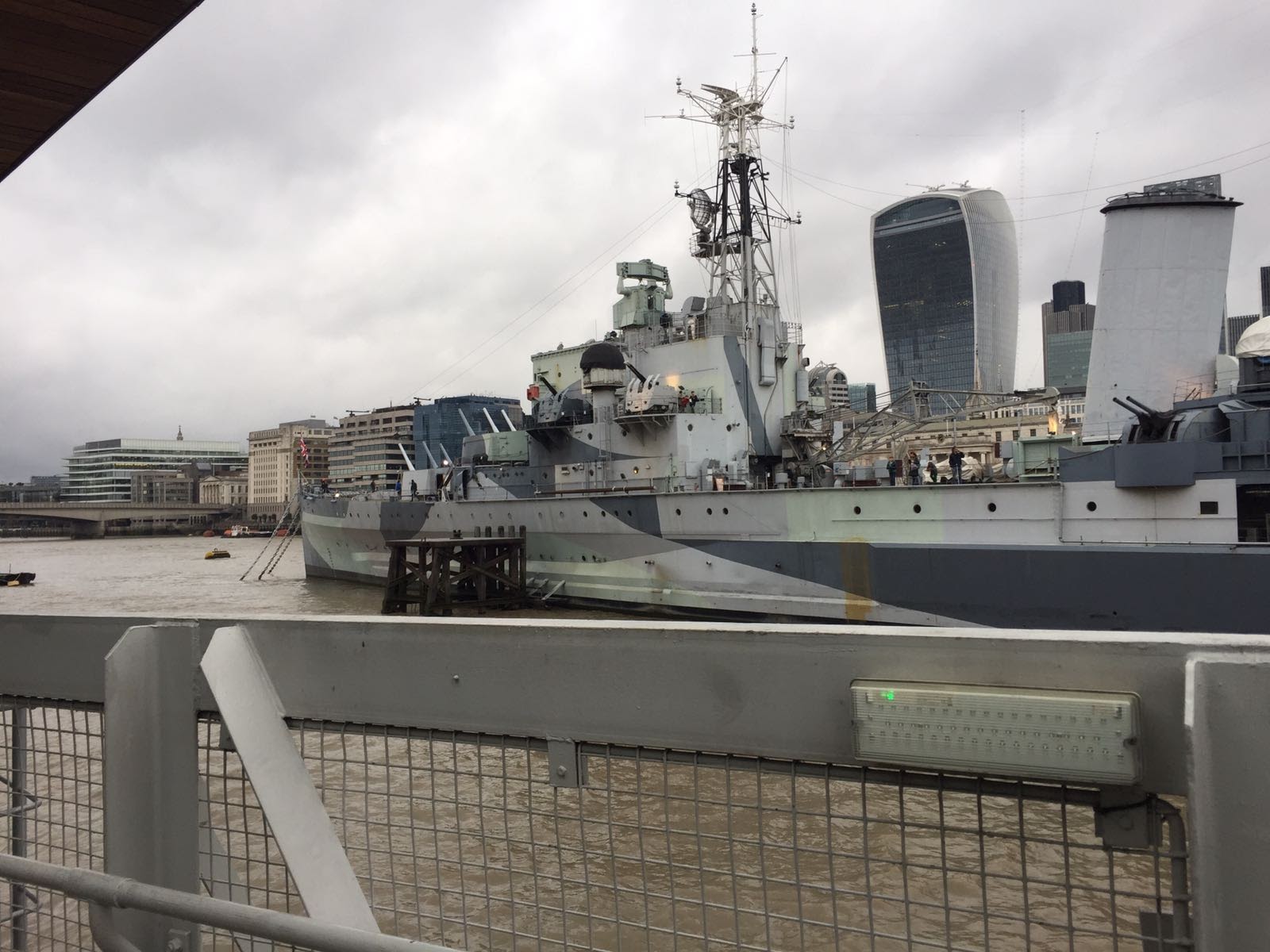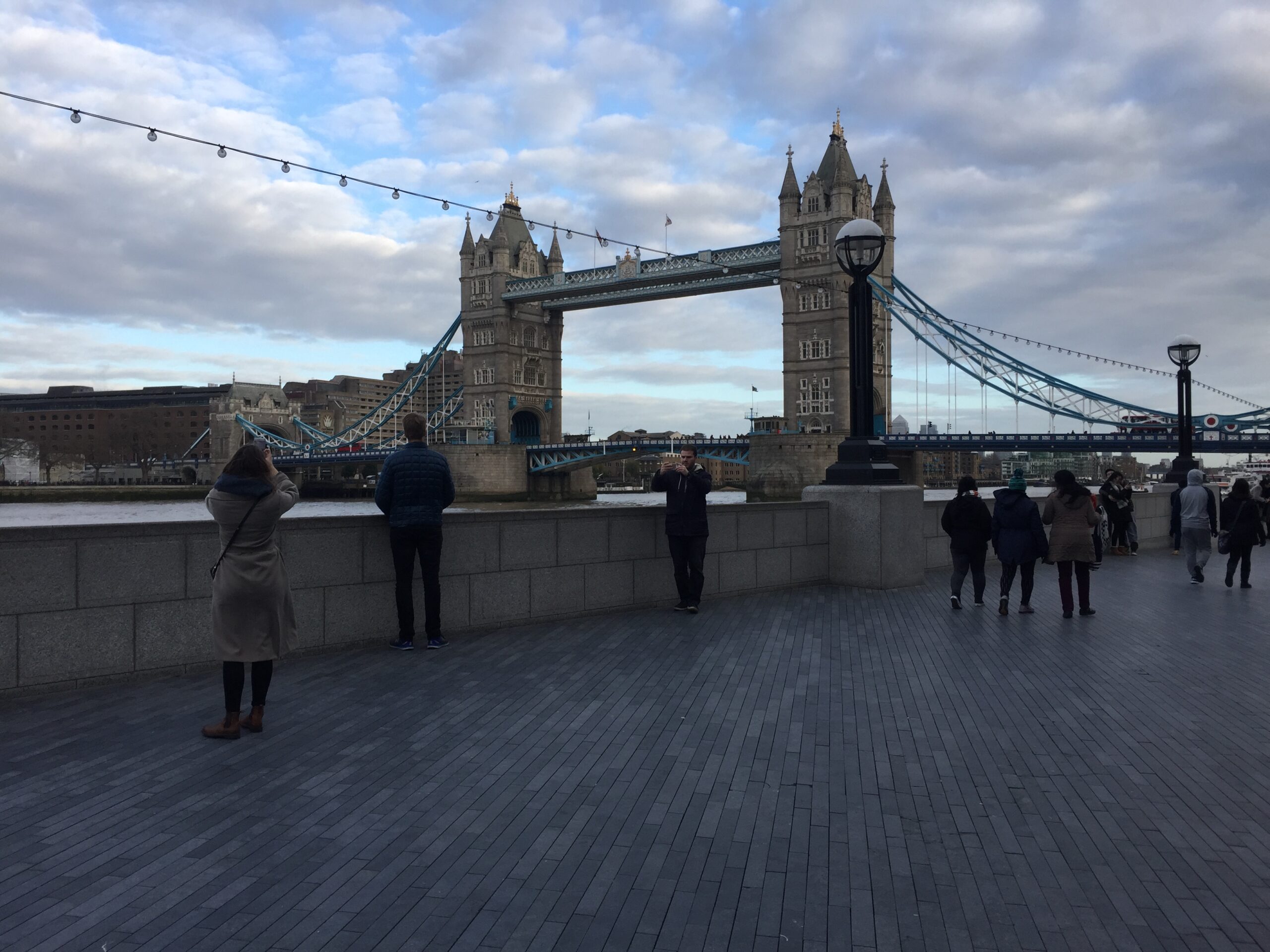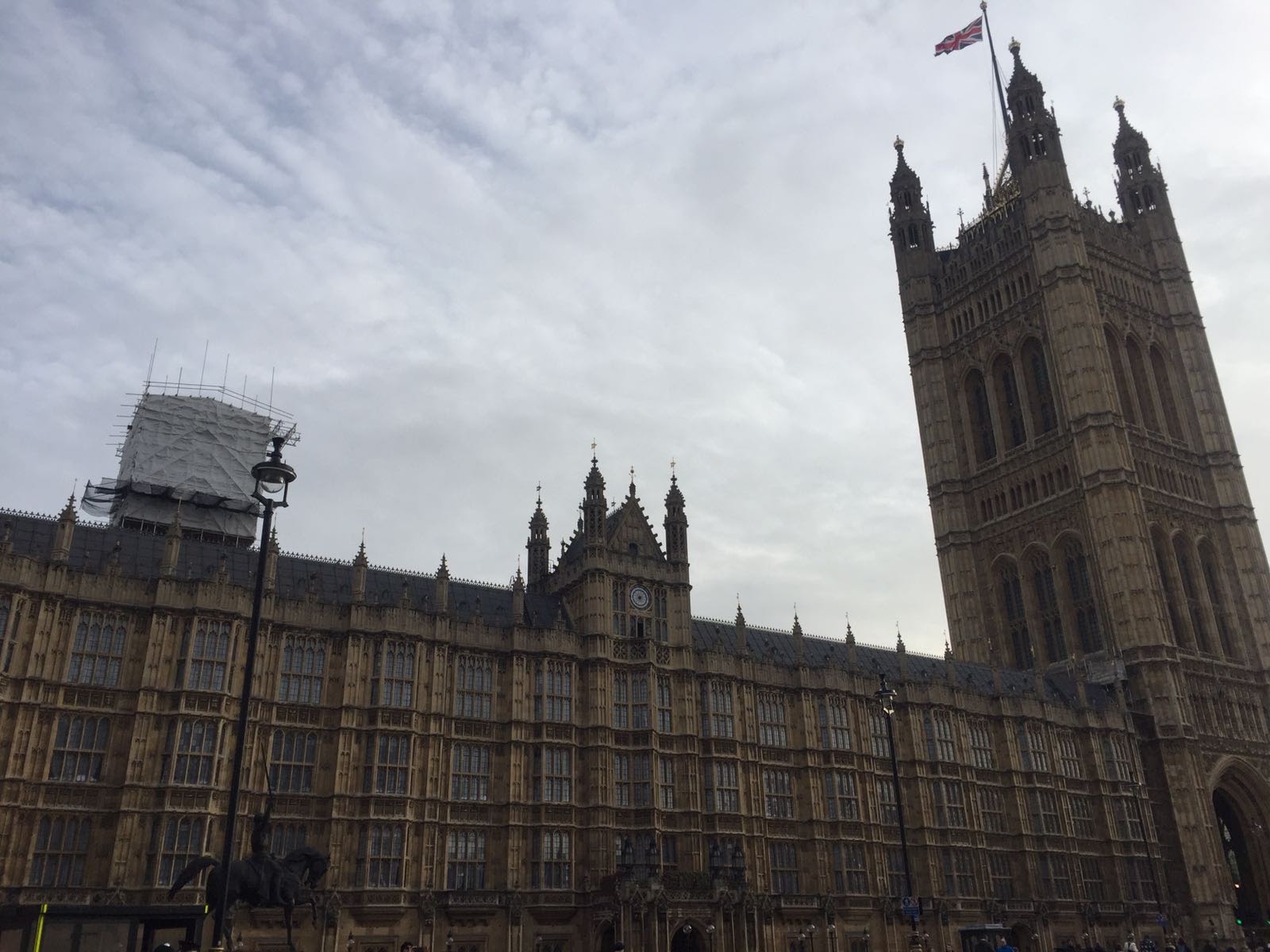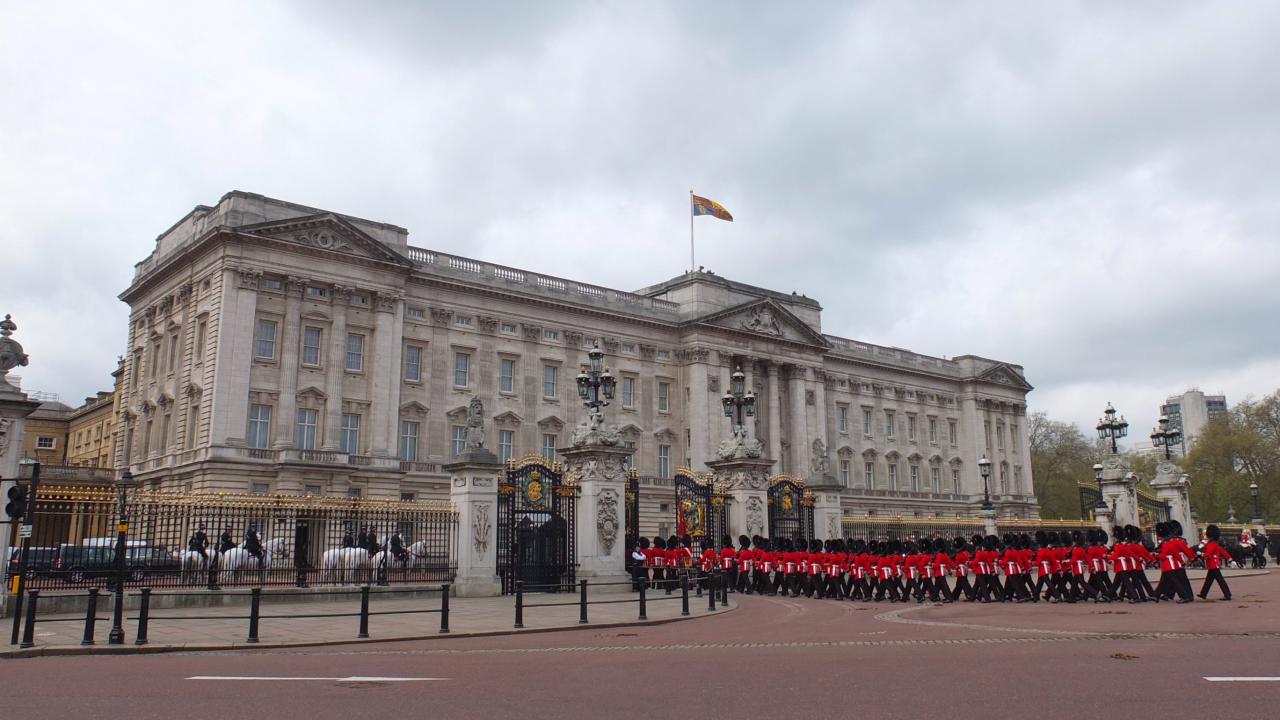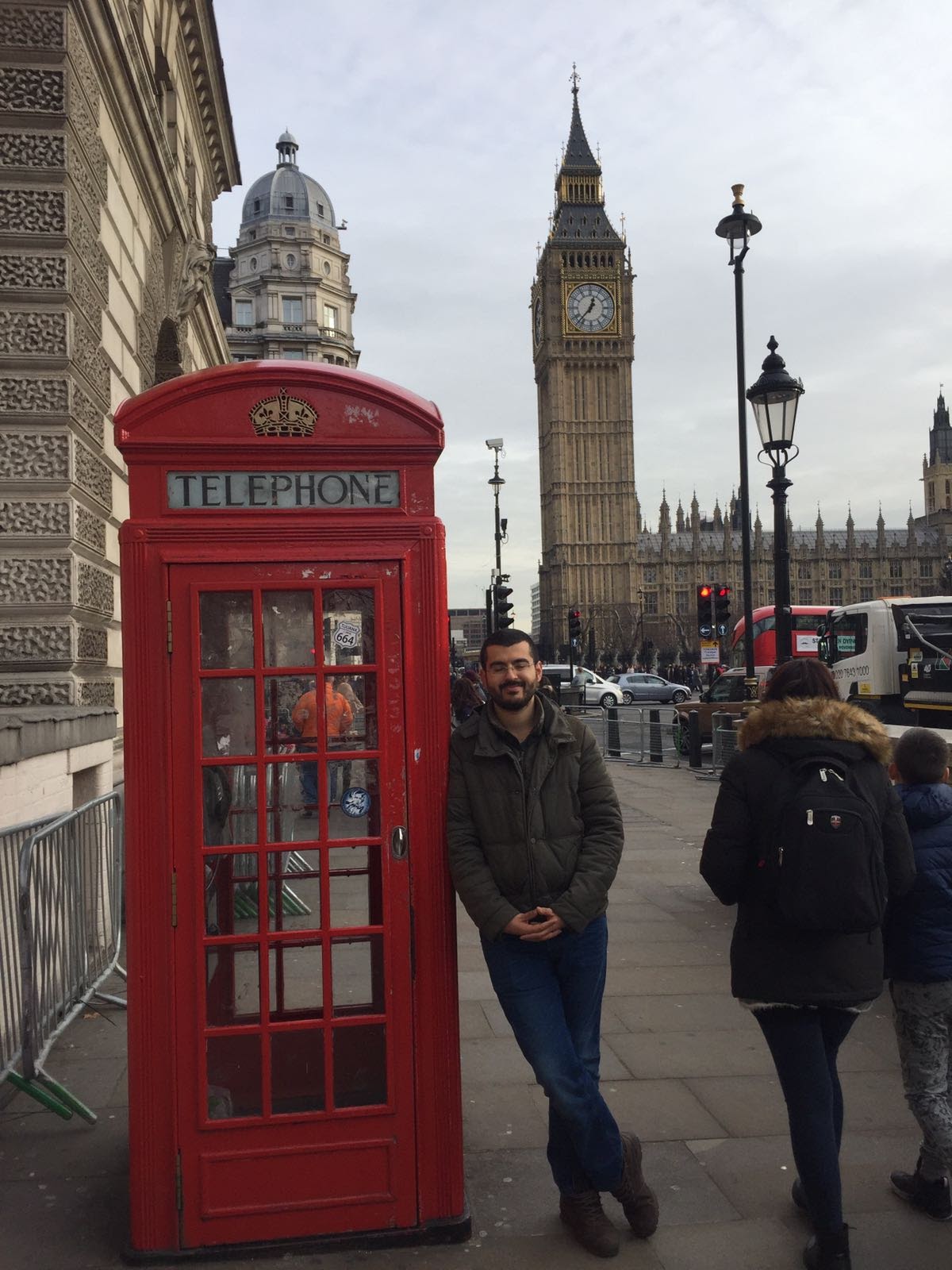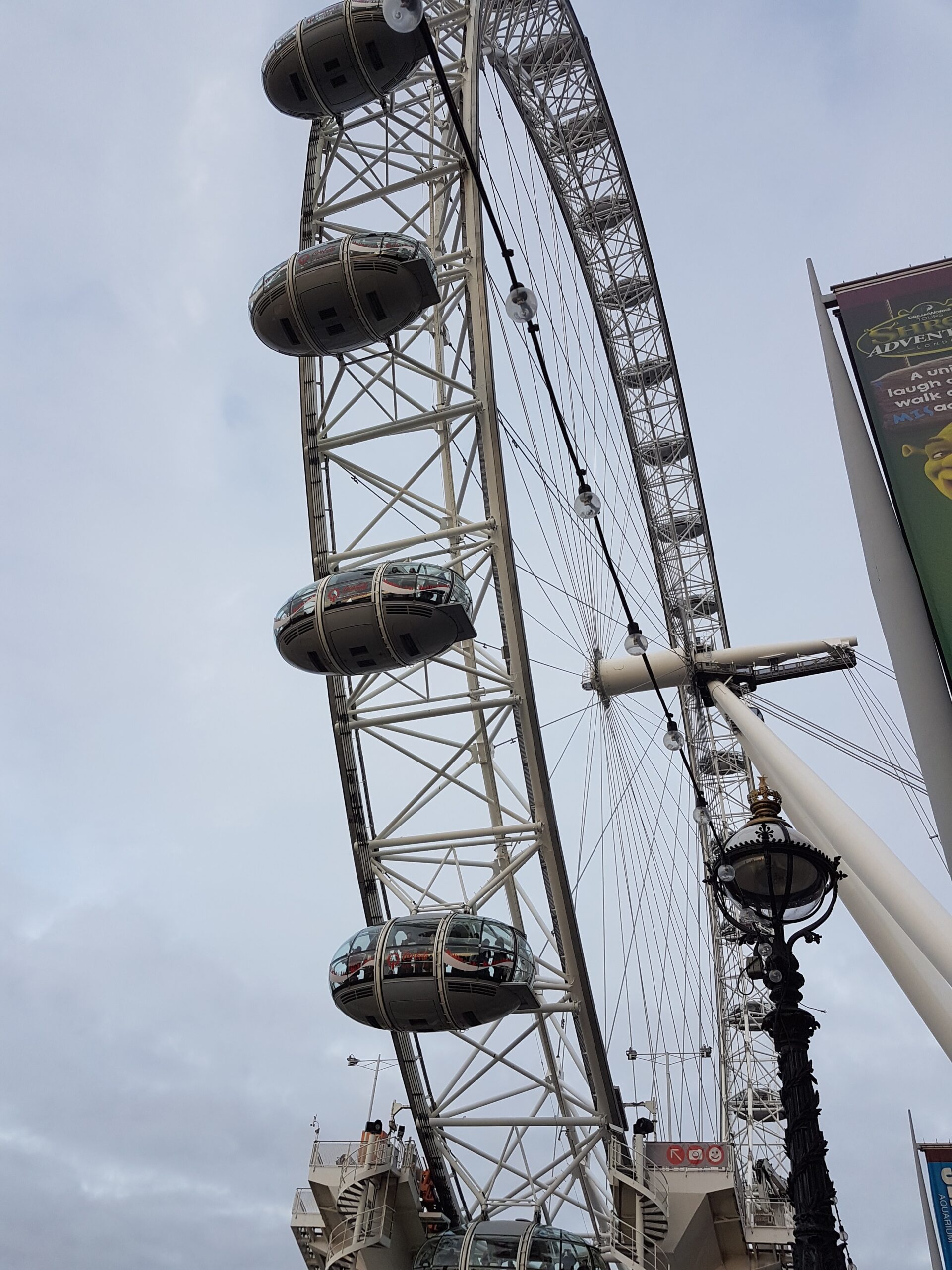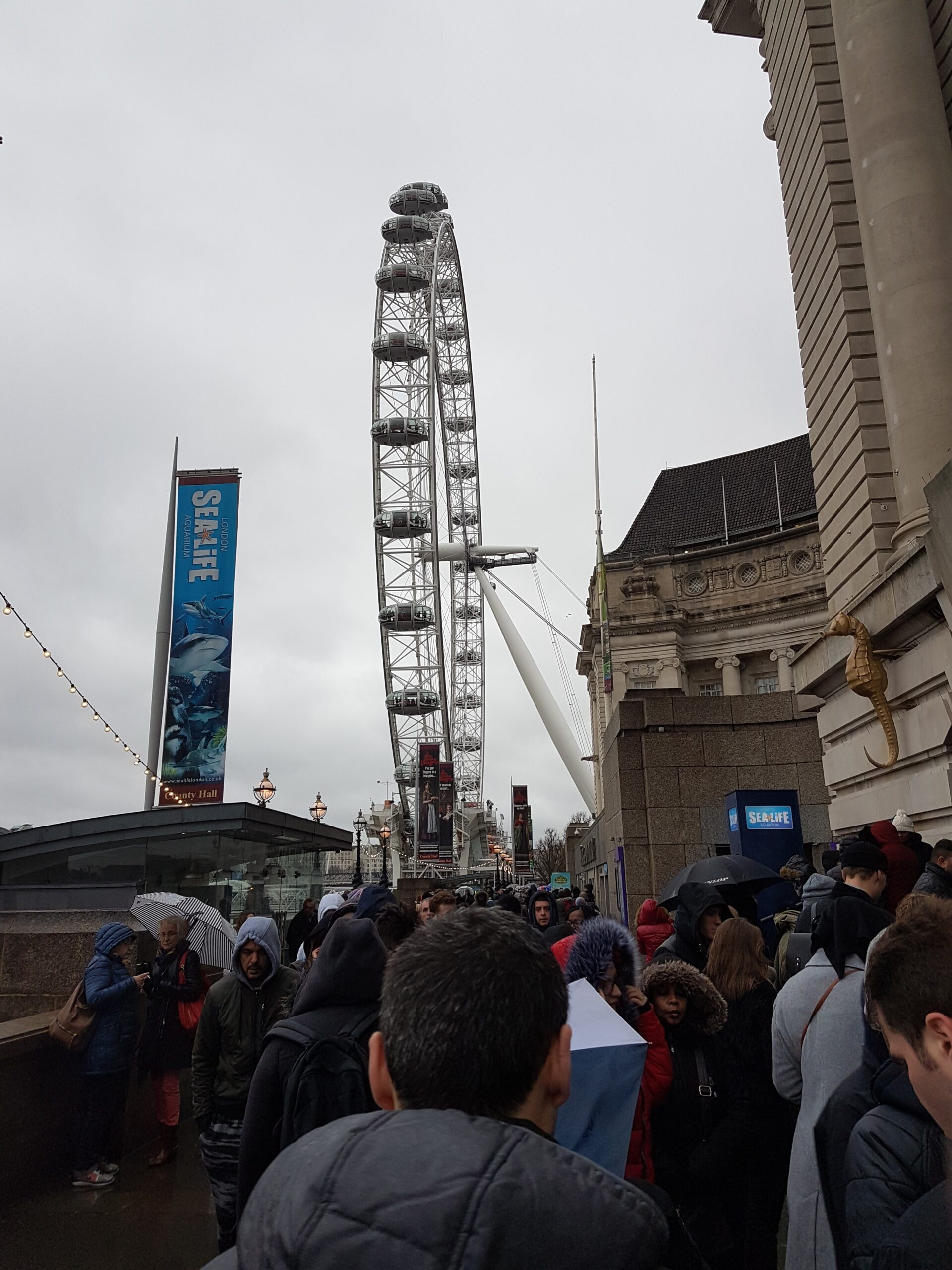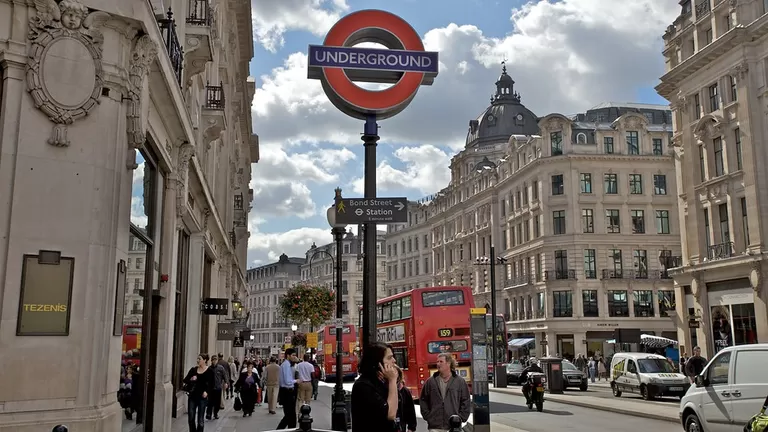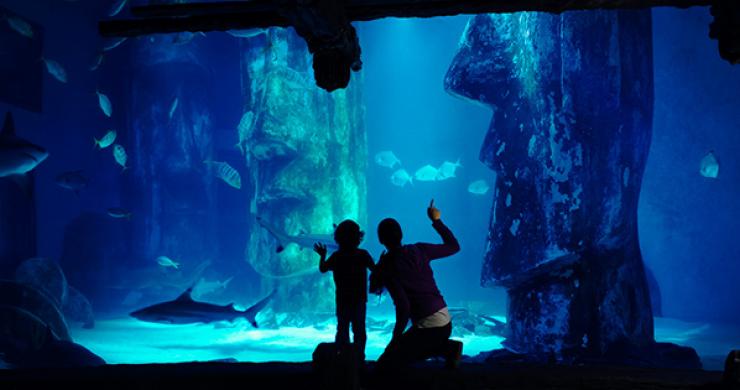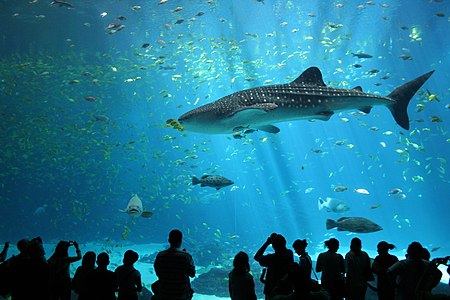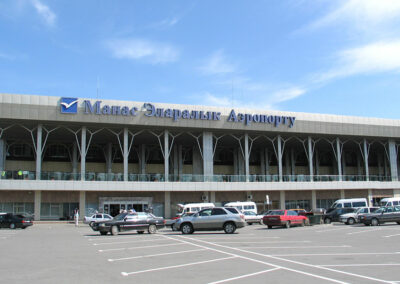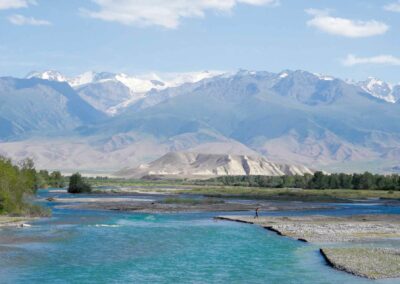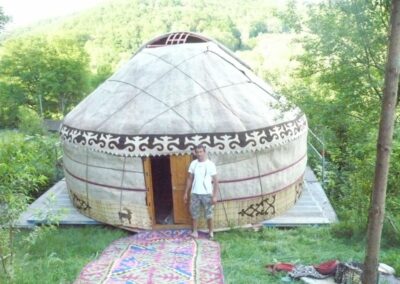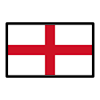I had the opportunity to travel to Palestine and Israel twice
I traveled there to experience the Miraç-Kandil Festival in Jerusalem. The first time, I only visited Palestine, while the second time, I also had the chance to explore Tel Aviv. Of course, there are concerns and doubts regarding the Palestine issue. How about the safety? Will we encounter any problems? How will we be treated, etc.? However, on both trips, we didn’t encounter a single issue. It was similar to traveling to other countries. The places we visited were mostly tourist destinations. In both years, the Miraç-Kandil Festival coincided with Ascension Day (the religious holiday commemorating the ascension of Jesus Christ). Therefore, there were Muslim, Christian, and Jewish tourists at the same location. In the first year, which was exclusively for Muslims and prohibited for Jews, we stayed in Bethlehem on the other side of the wall, while in the second year, we stayed in the center of Jerusalem. We visited Jerusalem, Bethlehem, Hebron, Jericho, the Dead Sea, Jaffa, and Tel Aviv. First, I will describe the places we visited, and then provide my overall impressions.
Note: If you are a citizen of Turkey, you need a visa to enter Israel. If your passport contains an Israeli visa or entry/exit stamps, you may not be allowed to enter Arab countries. You should indicate this during the visa application process, and the Israeli authorities will print the visa on paper and send it to you via email.
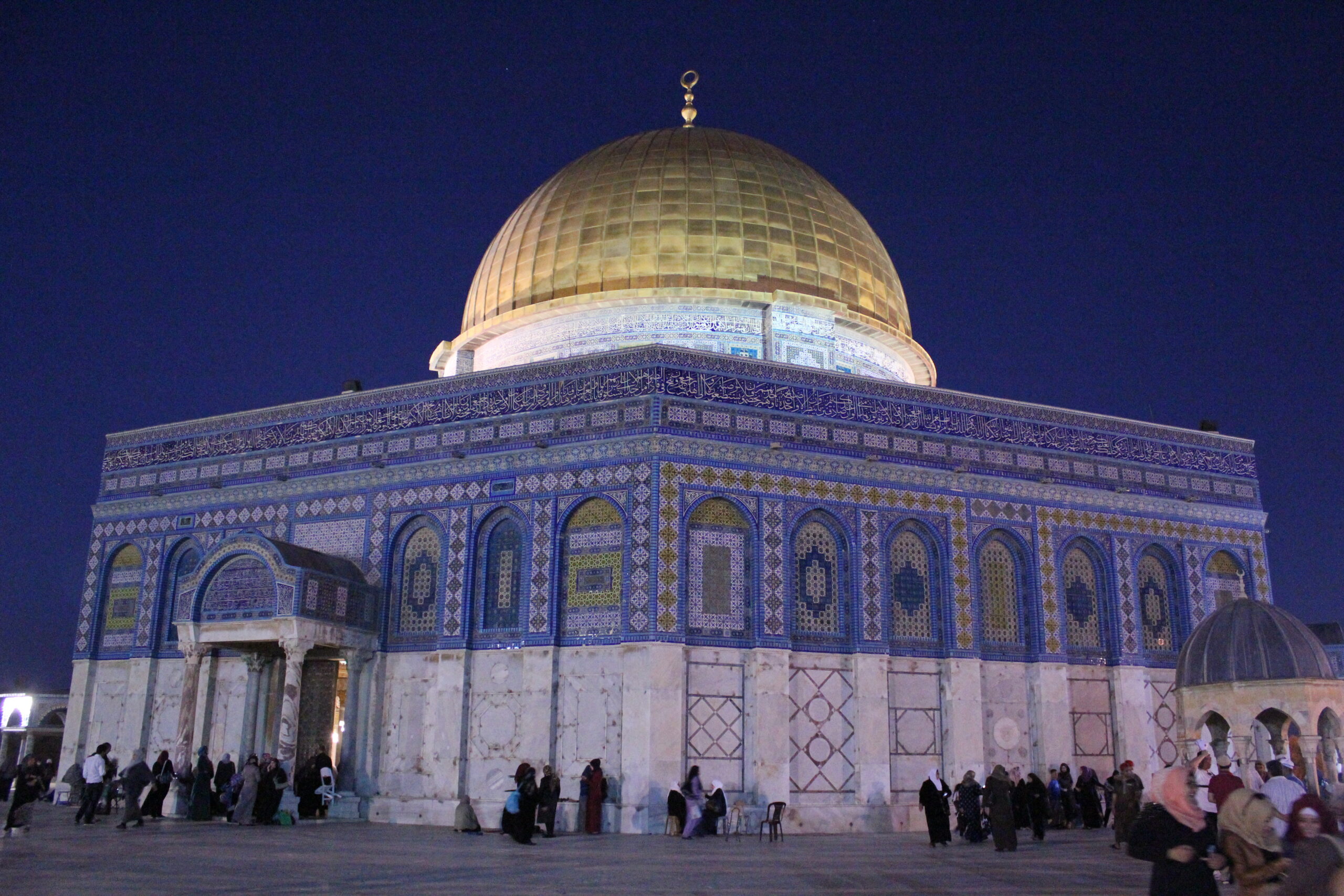
Jerusalem
Perhaps the holiest place on Earth. All the prophets mentioned in the Quran have paid a visit to this land. In Jerusalem, every stone, every brick, every wall has a story. For Muslims, Mecca and Medina are also very sacred, but without the Kaaba and one or two other sites, the rest of Mecca is ordinary. However, in Jerusalem, every square meter is holy. In this regard, it can be said to be the holiest place on Earth. At the same time, it is an impressive place where the three Abrahamic religions are intertwined. It lies on the slopes of the Jewish mountains and is the city of Saladin. It is the city that has influenced people the most throughout history. An ancient city that has housed prophets, wars, and civilizations. A place where the prophets were martyred. The city of which Jesus Christ said, “the city that kills the prophets.” The city has been completely destroyed twice in history (by the Romans), attacked 52 times, occupied 23 times, and conquered and liberated 44 times.
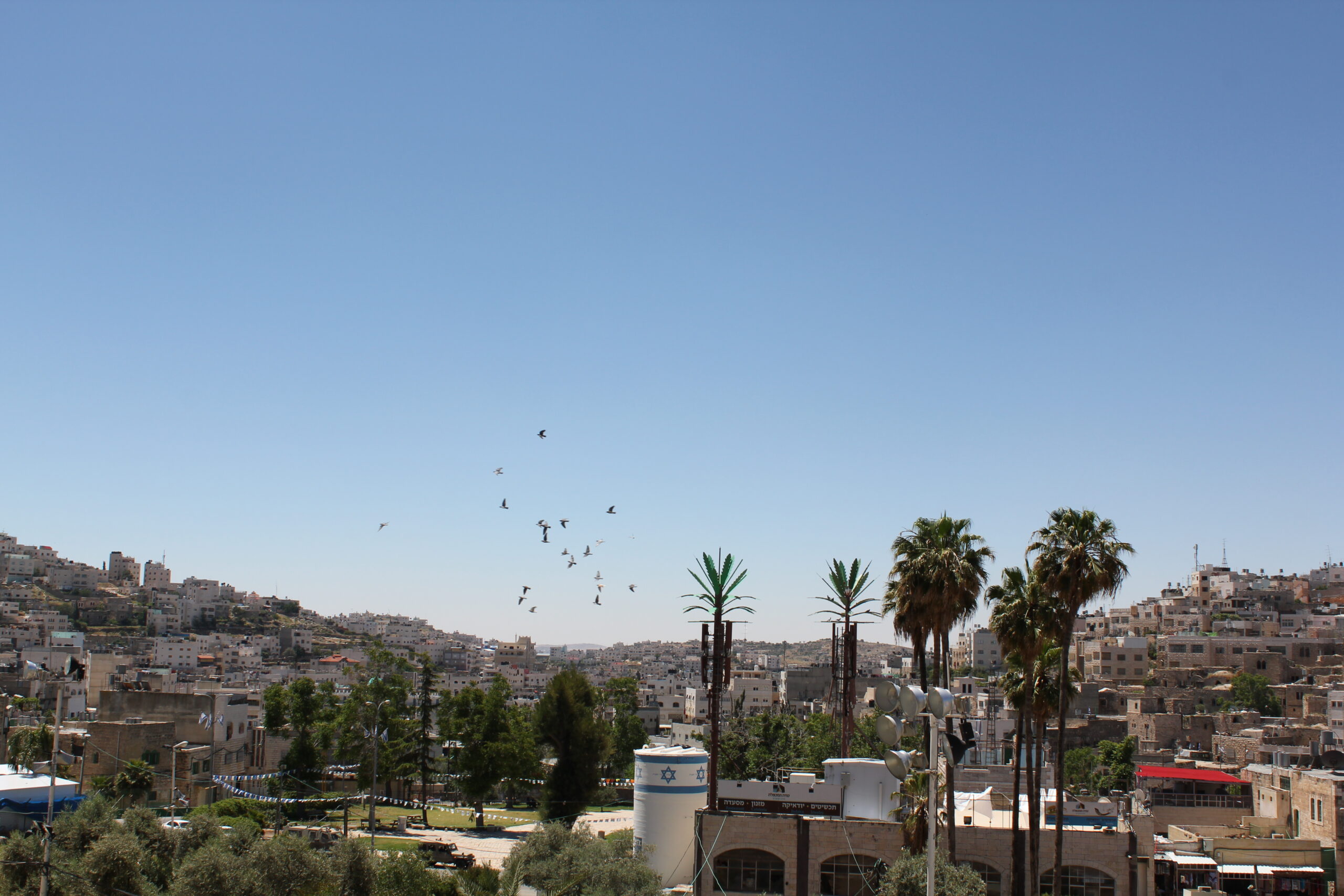
Attractions in Jerusalem
Al-Aqsa Mosque and Dome of the Rock
The heart of Jerusalem and the first place you should visit is the Al-Aqsa Mosque. Let’s clarify that the golden dome-covered site you see in photos is not the Al-Aqsa Mosque but the Dome of the Rock. The Al-Aqsa Mosque is actually part of a large complex spanning 144 acres, which includes the Al-Aqsa Mosque itself, the Buraq Mosque, and the Dome of the Rock. Opposite the golden dome structure, there is a smaller mosque with a black dome, and that is the Al-Aqsa Mosque, or in other words, the Al-Aqsa Mosque. We entered the Al-Aqsa Mosque through the Damascus Gate.
Access to this area is prohibited for non-Muslims. Jordanian soldiers control the entrance. The Al-Aqsa Mosque is the first qibla (direction of prayer) for Muslims.
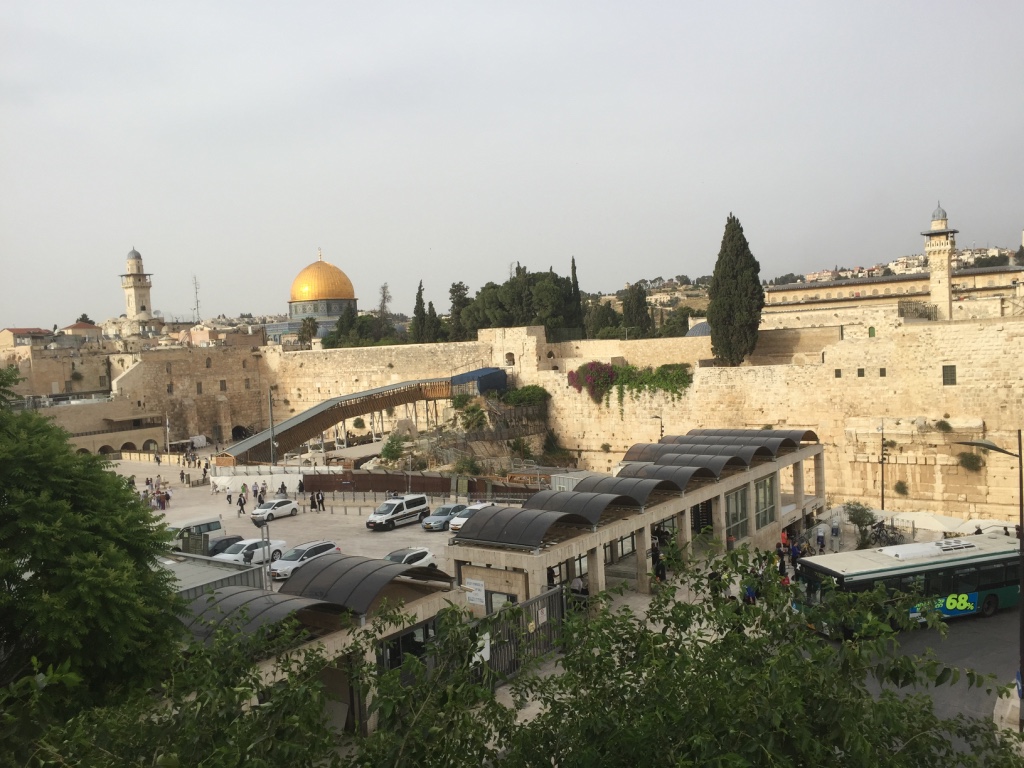
Dome of the Rock
The significance of this site stems from the fact that the Prophet Muhammad (peace be upon him) ascended to heaven from here. About 600 years after Jesus Christ said, “I will go so that Ahmad can come,” a light appeared from the region of Hijaz. The Prophet Muhammad (peace be upon him) came to the Al-Aqsa Mosque early one morning on a steed called Buraq from Mecca, and he tied his steed at the location of the Buraq Mosque. Inside the courtyard of the Al-Aqsa Mosque, 124,000 prophets, including Jesus, Moses, David, Salih, Joseph, Adam, Solomon, and Noah, were waiting, and they all greeted him saying, “Peace be upon you, O exalted Prophet.” The Prophet Muhammad (peace be upon him) accepted their greetings and led the prayer for them. Before the prayer, out of respect for the father of the prophets, Abraham, he made a gesture pointing at him and said, “You shall lead the prayer,” but Gabriel (peace be upon him) said, “No one can precede you; you are the Imam, O Prophet of Allah.” Yes, “THE LAST COMING WAS THE FIRST“… The muezzin was Gabriel. Jerusalem heard a very moving voice, including the voice of Prophet David, but this was the first time they heard this voice. The earth had never witnessed such a prayer or congregation. After the prayer, the Prophet Muhammad (peace be upon him) descended to the Cave of Spirits with Abraham and Moses. There, they also prayed and conversed for a while. Neither Mount Hira, nor Mount Sinai, nor the Cave of Sevr had achieved this honor. Afterward, the Messenger of Allah (peace be upon him) ascended to the Dome of the Heavens and prayed there. Refref was waiting for him there. The Prophet Muhammad (peace be upon him) went to Allah, as Moses, who had previously requested the same, was among those bidding him farewell. Together with Gabriel (peace be upon him), he ascended to heaven on the steed Refref. The rock on which the Prophet (peace be upon him) stepped suddenly rose with him, but Gabriel (peace be upon him) stopped it with a gesture and said, “You belong here.” Then the miracle of the Mi’raj occurred.
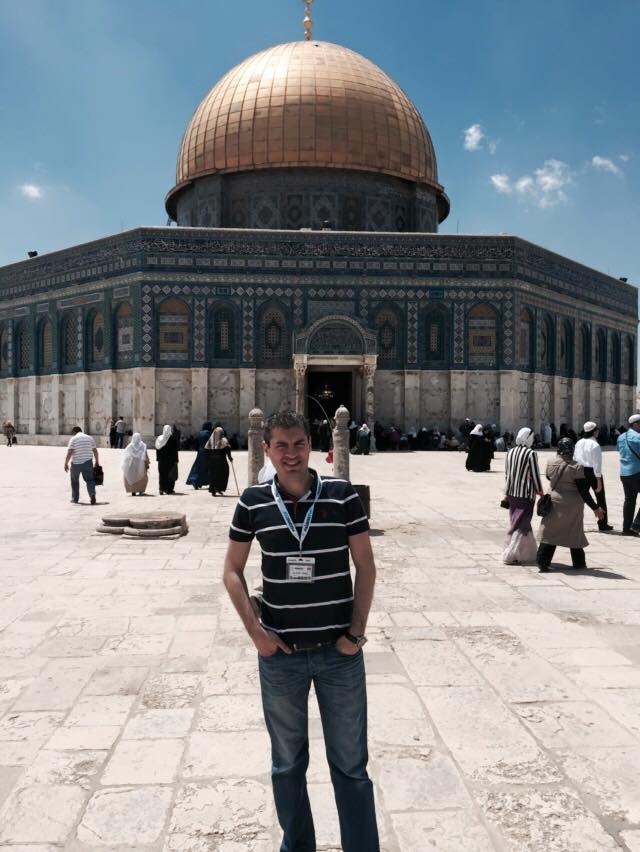
Al-Aqsa-Mosque
It is unknown who exactly built it, but it is said to be the place where Omar ibn al-Khattab performed the first prayer in Jerusalem. It was first constructed in 527 by the Byzantines and later converted into a mosque by Omar ibn al-Khattab. In 705, it received its final form under the Umayyad Caliph Marwan. This is the first qibla for Muslims. The mosque houses the Zechariah Mihrab, the Yahya Mihrab, and the Omar Mosque. When we were there, there was a glass container in the middle of the mosque. It contained tear gas canisters and similar items. It is reported that the Israeli police periodically infiltrate the mosque and throw bombs. They have collected the casings of these bombs and placed them in the glass container. Since 1969, it has been targeted multiple times by various Jewish groups, including arson attacks, bombings, and tunnel digging aimed at destruction. In an attack in 1990, 30 Palestinians lost their lives in the mosque.
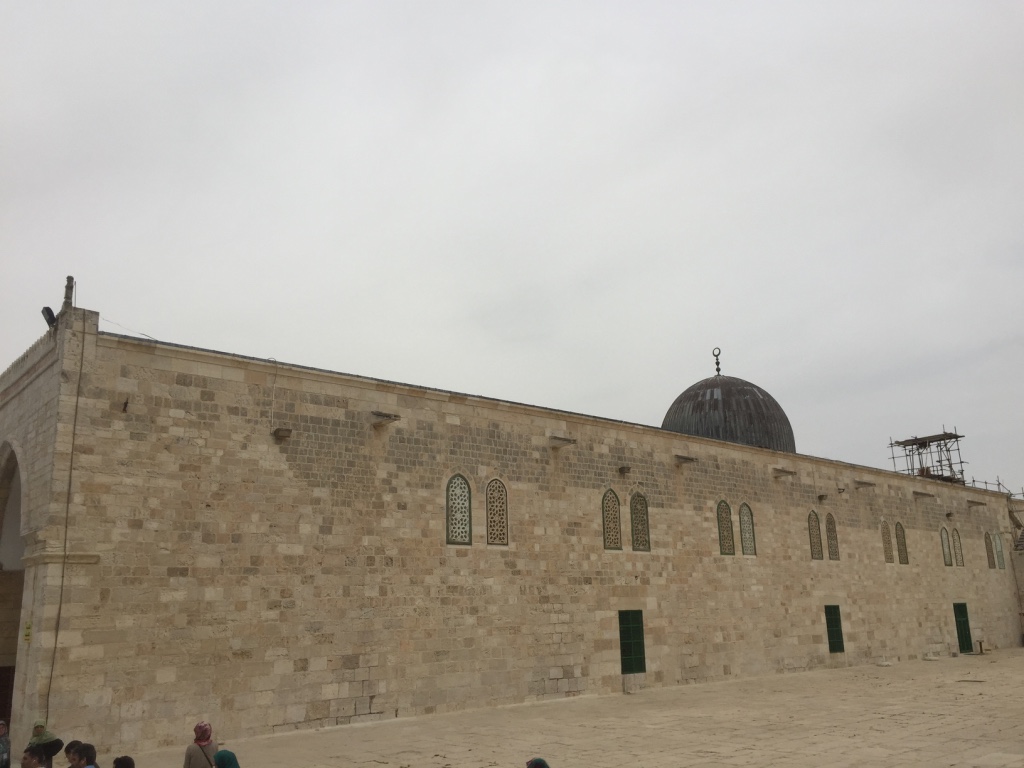
Burak Mosque
The mosque where it is said that the Prophet Muhammad (peace be upon him) tied his steed named Burak before ascending to heaven. There is also a small ring inside it. It is believed that Burak was tied to this ring. It is located directly behind the Western Wall. According to a tradition, the Prophet Muhammad (peace be upon him) said, “Burak was tied to the ring to which the horses of all the prophets were tied.”

Western Wall
Regarded as holy by the Jewish people, it is the only remaining wall of the Temple. It is the back wall of the Burak Mosque. When it was destroyed by the Romans, it came to be known as the Western Wall because they were very saddened by it. After the completion of the Temple, Prophet Solomon looked at the wall and said, “The work and sweat of the poor and needy are the most valuable in my eyes. I bless this wall forever; the holy presence of Allah will never leave the Western Wall.” Throughout wars and earthquakes, Jerusalem has been destroyed 33 times, and naturally, the Holy Site of the Makams also endured its share. After the conquest of Jerusalem by Omar ibn al-Khattab, the Umayyads constructed the current Dome of the Rock and the Al-Aqsa Mosque, as well as the surrounding walls. Currently, the wall consists of the first seven layers made of stones from Herod, the middle four layers made of Umayyad stones, and the upper small section made of Ottoman stones. When it was announced that the city walls surrounding Jerusalem would be renovated during the reign of Sultan Suleiman the Magnificent, the Jews sent a letter to the Chief Rabbi of Istanbul requesting a protected place within the city walls for prayers. This request was conveyed to the Ottoman Sultan and reached the architect Mimar Sinan, who was in Jerusalem at that time. Mimar Sinan, after consulting with Muslim and Jewish religious authorities, decided that this was the most suitable place within the city walls. With the positive response from the Ottoman Empire, this place became one of the holiest sites in the world for Jews. Jews come here to recite various prayers and supplications, believing that they will be heard. Jews who cannot come here send their wishes via email or letter. The staff in a small office next to the wall print out the incoming emails and insert the sheets into the crevices in the Western Wall.
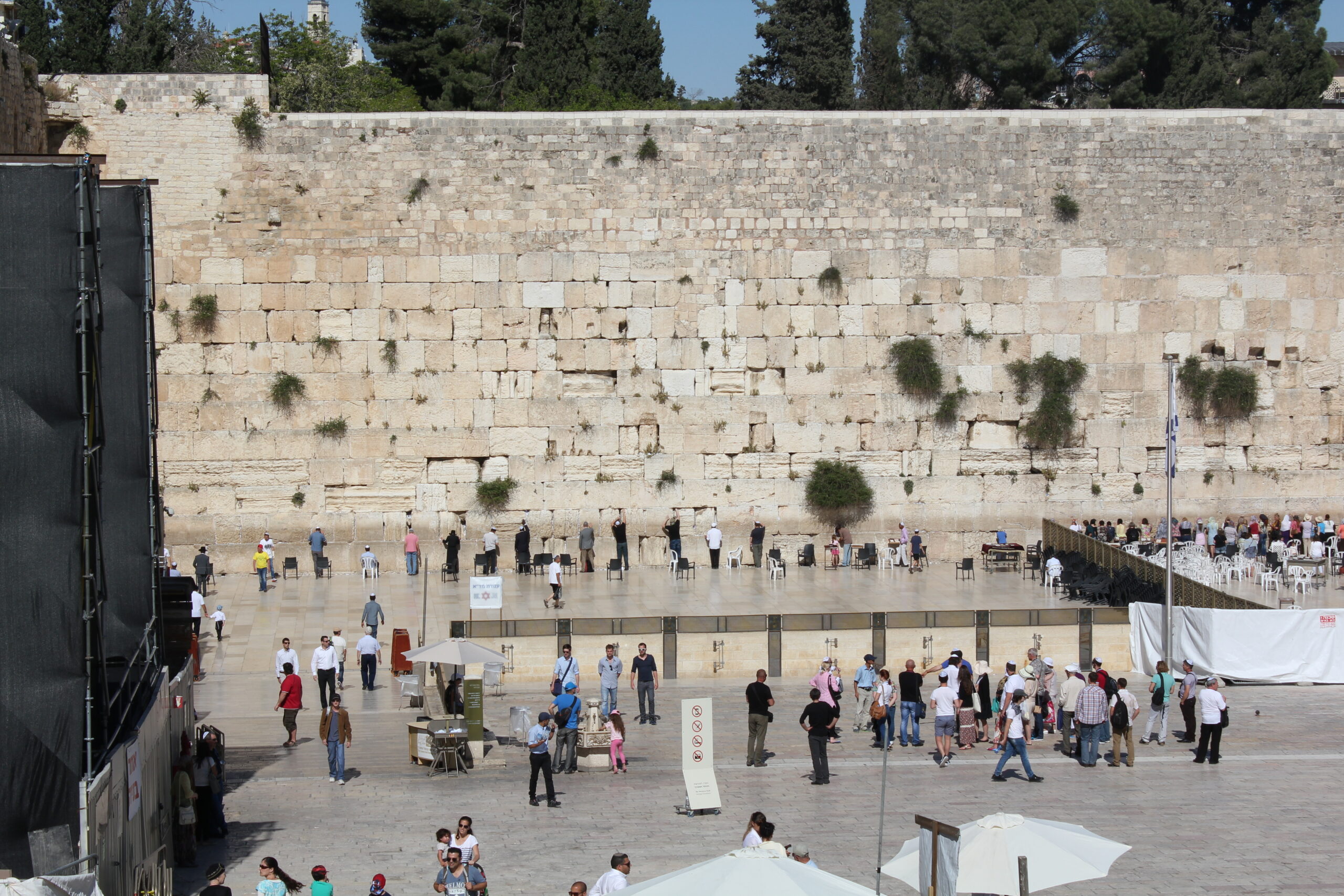
Mount of Olives
A place from which you can view Jerusalem from above. A special place from which you can see the Al-Aqsa Mosque. It is situated at an elevation of 890 meters. It is the location where the Bridge of Judgment Day will be constructed. One end of the bridge will be at the Mount of Olives, while the other end will be where the Via Dolorosa ends. That means we will cross the bridge from this hill. It is the area where Jesus spent his final moments and gave advice to his disciples. It is also the place where Jesus was captured. According to a tradition, in his final moments, Jesus looked towards Jerusalem from this hill and said, “Jerusalem, Jerusalem, why do you reject me?” It is also said that this is the place where Mary sought refuge from the anger of the people when she did not consider the Zechariah Mihrab as safe enough. There are many olive trees in the vicinity, some of which are 2,000 years old. Below the hill, there is a large Jewish cemetery. Due to the fact that the Bridge of Judgment Day will be constructed here, this place is highly sought after. It is said that a portion of the cemetery land is being sold for millions of dollars. It is said to have 150,000 graves. On the other side of the hill, there is a Muslim cemetery, which I will mention later. This hill is recognized as a holy place in the Bible, the Torah, and the Quran. When you come to Jerusalem, I recommend visiting it on the first day. When I looked out from this hill, a poem by Mehmet Deveci came to mind: “If Jerusalem falls, Mecca, Medina, Istanbul, we all fall…“
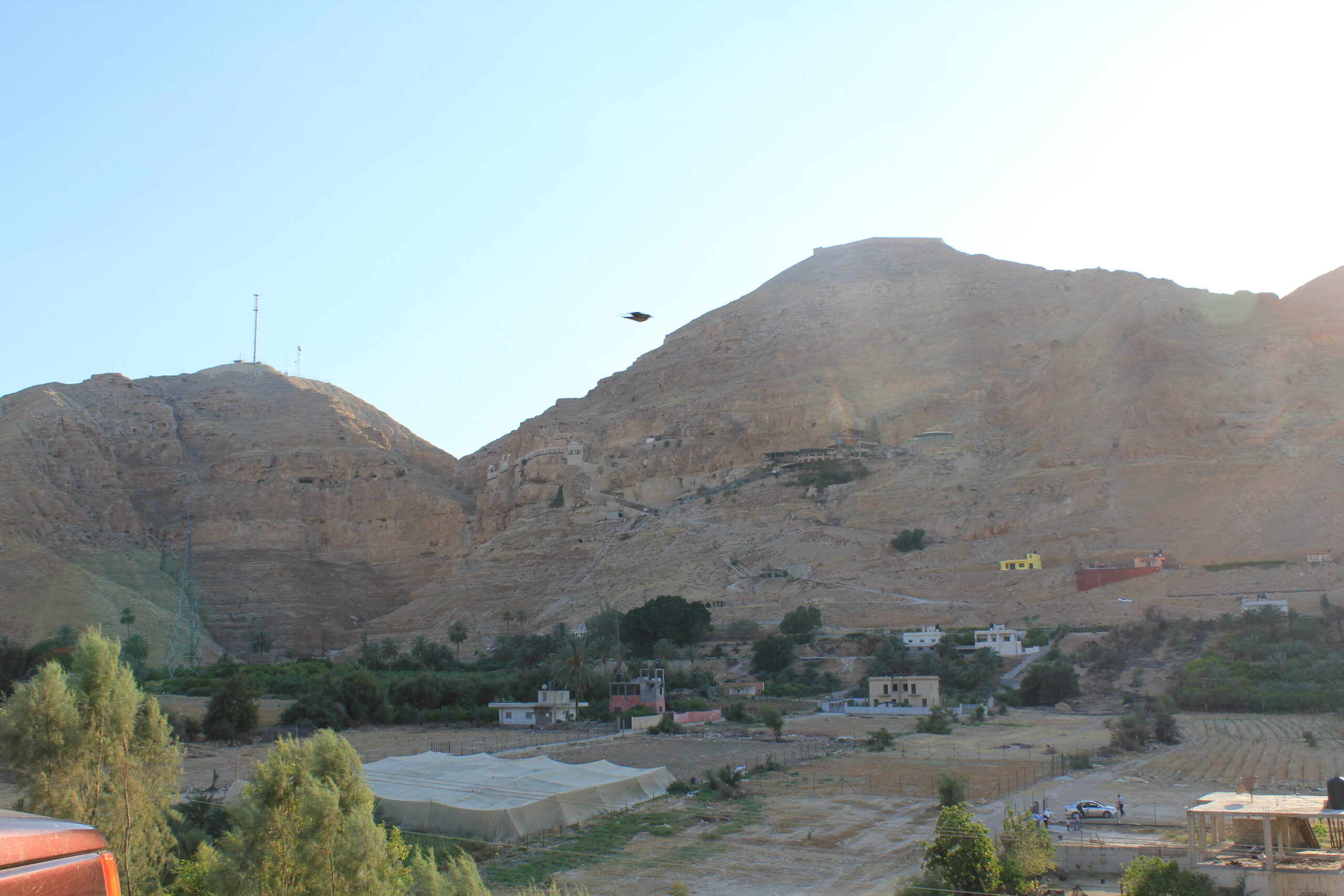
Mount Zion
A hill where the tombs of King David and the Virgin Mary are said to be located. With its tower, church, synagogue, tombs, and museum, it forms a large complex. What makes this place particularly special is that it is believed to be where the Last Supper took place. After the Al-Aqsa Mosque, it was the place I most wanted to see, where Jesus had his last meal. Jesus ate here with his disciples, washed their feet, and gave them advice. Unlike in the Muslim understanding, David was not considered a prophet for the Jews but a king. It is prohibited to enter this complex without head covering unless you are Jewish. You can also enter with a cap or a hat. Just before entering the room where the tomb of King David is located, you can see Jews praying from the Torah. Inside, you can see Muslims and Christians praying. In fact, one can consider this as a small version of Jerusalem. This hill is the place where the mountains on the opposite side spoke to David when he started reciting the Psalms. It was the first time that the Jews gathered under one roof under King David, so they consider this place very sacred. One of the reasons they shed tears at the Western Wall is the longing for those days. This place also holds great significance for the Ottoman Empire because the Ottoman soldiers who came into the city and went off to war were always received and bid farewell here. Therefore, it was also referred to as the “Imperial Barracks.” The complex itself is a Byzantine structure, but the mausoleum inside dates back to the Ayyubid era, and the ceiling above the mausoleum is a work of Ottoman architecture. It is one of the places in Jerusalem that you must visit.
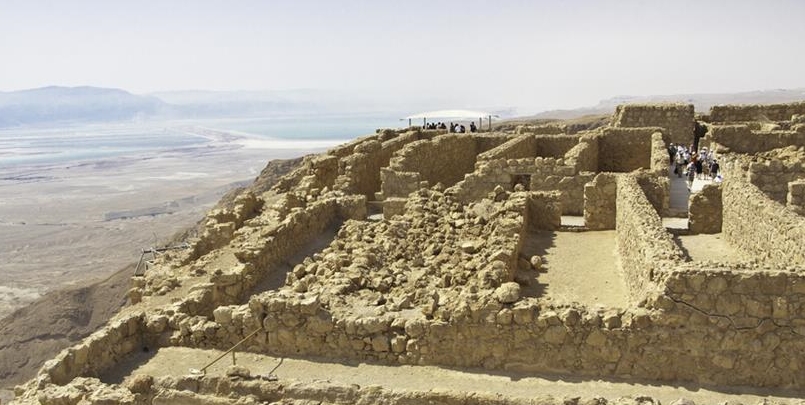
Church of the Holy Sepulchre
A church built on the site where Jesus Christ is believed to have ascended to heaven. For all Christian denominations except Protestants, it is a holy place. It is also referred to as the “Mother of All Churches.” According to our faith, Jesus was crucified, washed, and taken up to heaven here. For Jews, it is what the Western Wall is to Christians. Due to the sanctity of this place, the various Christian denominations began to fight for dominance over this site. In 1852, Orthodox and Catholic priests clashed, leading to escalated disputes, injuries, and deaths. However, the Ottoman Empire found a peaceful solution. It divided the interior of the church into six sections and allocated each confession its own area. Each confession is responsible for maintaining its respective area, which put an end to the chaos between them. In front of the main entrance of the church, there is a wooden ladder on the roof. After the announcement of the status quo, the Ottoman Empire sent a guard to the church to deliver the proclamation. When the guard announced the proclamation, a Christian cleaner belonging to the Armenian Church was in the midst of cleaning the windows with a bucket of water. Upon hearing about the proclamation, he wanted to take the ladder and leave, but the Ottoman Empire did not allow him to take the ladder. Since 1852, the wooden ladder has remained there as a continuation of the status quo declared by the Ottoman Empire. Salahaddin Ayyubi handed over the key to the church to a Palestinian family, the Nuseybe family, in the 12th century. The key is still in the possession of this family today. Yakup Nuseibe tells the story of his family as follows: “Our grandmother is Nesibebet al-Maziniyye, who fought heroically in the Battle of Uhud to protect the Prophet. When the Prophet Muhammad (peace be upon him) mentioned her bravery in the Battle of Uhud, he said, ‘On that day, Nesibe fought with her sword in every direction.’ Later, when he said, ‘Oh Nesibe, who can endure what you have endured?’ Allah’s Messenger (peace be upon him) asked Nesibe to be with her in paradise forever, and the Prophet Muhammad (peace be upon him) fulfilled her wish. The grandchildren of this extraordinary woman open and close the church every day. When we were there, they were sitting on a bench at the entrance. Every morning, a family member comes and opens the door, and in the evening, it is locked again. They still keep Salahaddin Ayyubi’s edict in their house.“
Across from the church is the Mosque of Omar. When Omar came to Jerusalem to visit the church, he entered it in the afternoon. He asked for a place to pray, and the church officials told him they could pray there, but Omar prayed in an open space opposite the mosque. Later, the Mosque of Omar was built at that spot. When asked why he did not pray there, he replied, “If I had prayed there, those who come after me would have done the same and turned it into a mosque. Out of respect, I did not pray there.” In fact, the place where Omar prayed became a mosque.
I also recommend visiting this church and the Mosque of Omar. If your visit coincides with Christian holy days, it will be very crowded, so I recommend going early in the morning or late in the evening.
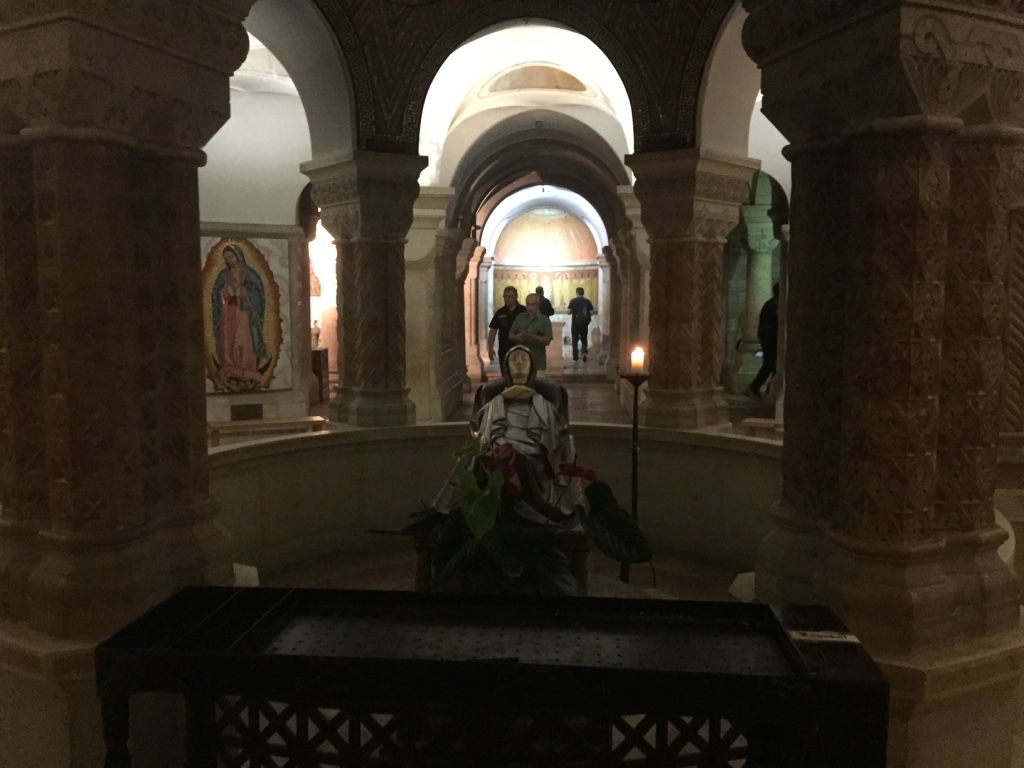
Via Dolorosa (The Way of the Cross)
The path believed to have been taken by Jesus Christ, carrying the cross on which he would later be crucified by the Romans. It is also known as the Stations of the Cross and consists of a total of 14 stations. At the 14 stations along this path where Jesus is said to have stopped, including the place where he first fell, where he met his mother Mary, where Veronica wiped his face, where he fell a second time, and finally to the location of the present-day Church of the Resurrection, where he was believed to have been crucified, Catholics still perform a symbolic walk on Sundays. Churches were later built at these sites. Christians who walk along this path and reach the Church of the Resurrection undertake a pilgrimage. Plaques are placed at the 14 stations. The total length is about 500-600 meters.
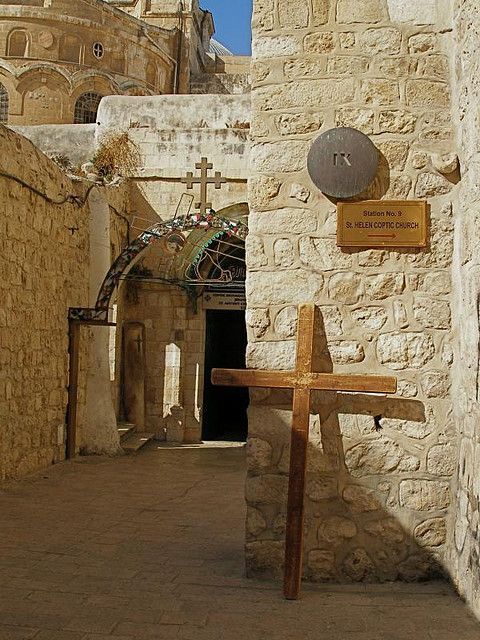
Old City
Here, four quarters come together: the Armenian Quarter, the Muslim Quarter, the Jewish Quarter, and the Christian Quarter. This is also a beautiful place that represents Jerusalem. The atmosphere changes when transitioning from one quarter to another. It’s as if you’re moving from one city to another. The common denominator of the quarters is the tourist shops. In the Muslim Quarter, everyone is friendly and warm, but the quarter itself is very dirty. There is garbage lying around. In the Armenian Quarter, there is a map of the genocide committed in Turkey on every corner. These maps can be seen on the walls repeatedly. If you say you are Turkish, they show a somewhat distant behavior, but other than that, there are no disputes or disrespect. The Christian Quarter begins right at the end of the Muslim Quarter or even before it ends. The walls of the mosque are almost directly next to the walls of the church. The call of the muezzin and the ringing of the church bells blend together. In the Jewish Quarter, you will see Jews in their characteristic attire and styles, as you have seen in pictures. Even young children dress accordingly. What caught my attention was that all Jewish women wore wigs, probably due to their religious beliefs.
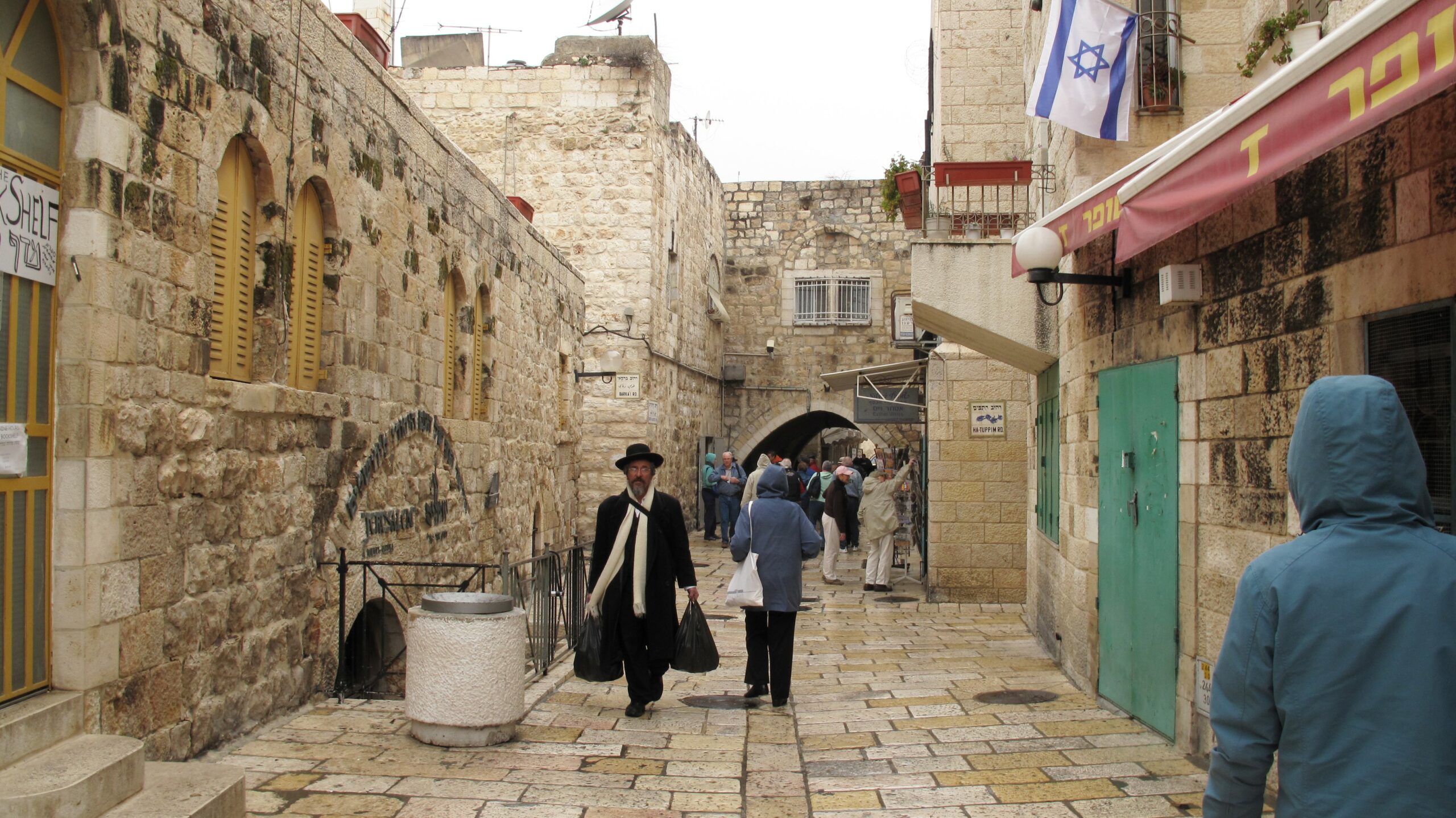
Church of the Dormition
A church on Mount Zion believed to contain the tomb of Mary. According to some sources, however, the tomb is said to be located in Ephesus, Turkey, while other sources claim that Mary returned to Jerusalem. The church, consecrated in 1906, was damaged during the Arab-Israeli War. The place where Mary is believed to rest is located in the basement of the church.
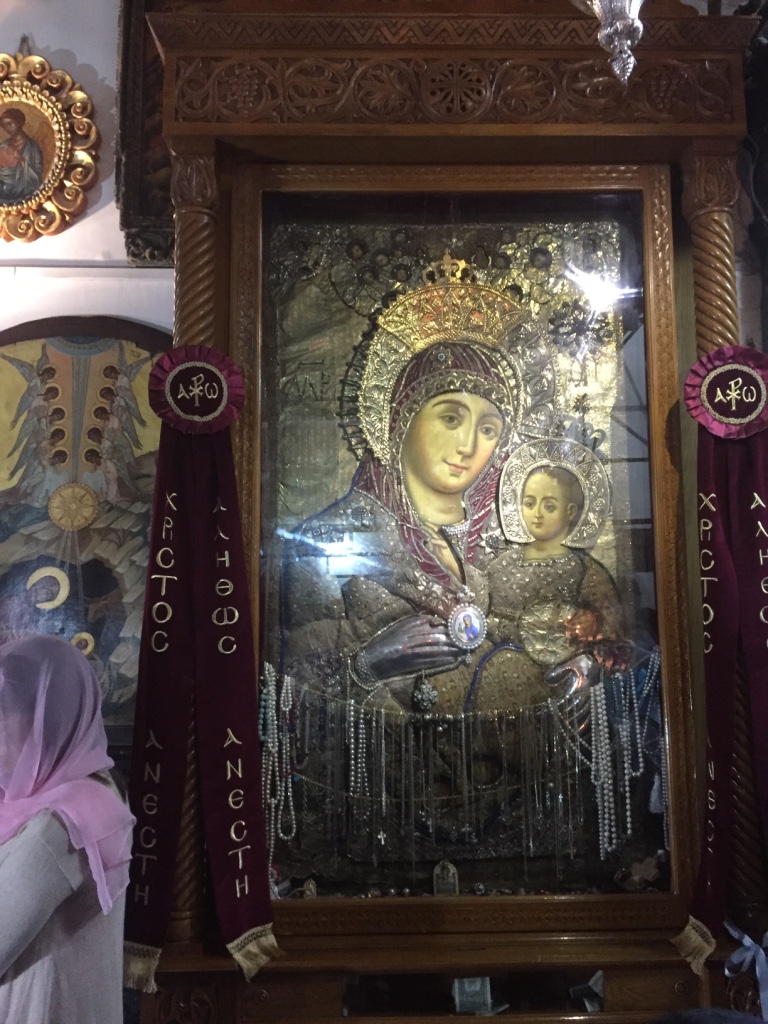
Tomb of Rabia al-Adawiya and Salman al-Farsi (R.A.)
Tombs located in the Muslim cemetery near the Mount of Olives. I would like to tell you something about these two individuals.
Salman al-Farsi: A seeker of truth and companion of the Prophet Muhammad (peace be upon him). He was born in Isfahan, Persia. His father was a wealthy landowner who spent his fortune to keep the fire burning and worship the fire, as practiced by the Zoroastrians. Everyone in the family worshipped the fire. When Salman al-Farsi realized that this was wrong, he told his family about it, after which his father locked him up in the basement. Following this incident, Salman al-Farsi embarked on a search for the truth. He met Christian priests and traveled to Sam, where he received the news that the Prophet (peace be upon him) would appear in Hijaz. He then went to Medina and embraced Islam after witnessing the signs mentioned in the prophecy. The Prophet (peace be upon him) said about Salman al-Farsi, “Salman is from us, Ahl al-Bayt.” He holds an important place in Islamic history. During the Battle of the Trench, it was his idea to dig trenches. He was also present with Umar during the conquest of Jerusalem. Later, he participated in the conquest of his own land, Iran, and was appointed as the governor of the city of Madain, where he contributed to the spread of Islam. When he passed away in Madain, he owned only a bowl, a jug, a rug, and a mat.
Rabia al-Adawiyya: She was born as the fourth child of a very poor family in Basra. They did not have a cloth to cover themselves or oil for lamps at home. Her mother asked her father to request oil from the neighbors, but he refused and promised never to ask for anything from anyone and to trust in Allah alone. That night, her father saw the Prophet Muhammad in his dream. The Prophet said, “Do not worry! This daughter of yours will become such a noble lady that she will intercede for seventy thousand people from my Ummah. Write a letter with these words tomorrow and give it to Isa Zadan, the governor of Basra: ‘You used to send blessings on the Prophet every evening, but you forgot on this Friday evening. As compensation, give four hundred gold coins to the one who brings you this letter.'” The fate of the family changed with the arrival of Rabia. Later, her parents passed away one after another, and she experienced difficult times in Basra. Someone took advantage of an opportunity and captured Rabia to use her as a servant. Later, she was sold to an old man for six silver coins. Years passed in her service to her master. One day, while trying to avoid a man, she fell from a height and broke her arm. She prayed to Allah, and then she heard a voice saying, “Do not worry, you will have a status in the hereafter that even the angels will envy.” After a certain time, the old man realized that Rabia was no ordinary woman and set her free. Rabia settled in a small house and devoted her life to prayer. Great scholars like Hasan al-Basri and Sufyan al-Thawri benefited from her. Although she led a life full of difficulties and hardships, she rejected any help offered to her. She even sewed a shirt under the light of a public lamp but later found it inadequate and tore it apart. This woman later came in her later years to spend her final days in Jerusalem. She passed away in 752, and her grave is one of the most visited places by Muslims.
Attractions in Hebron
Hebron
Hebron is known for two distinct features. First, the Ibrahim Mosque, which contains the graves or sites of Prophet Ibrahim, Sara, Isaac, Rabia, Yusuf, and Jacob. Second, it is known for the Hebron Massacre. According to a belief, Adam and Eve, when they were sent to the world, initially lived here. It is one of the four holy cities for Jews. The city is home to approximately 150,000 Palestinians and about 1,000 Israelis. The Muslim and Jewish settlements are separated from each other, and the Jewish settlements are protected by Israeli soldiers. Although it officially belongs to Palestine, it is under Israeli occupation. Every year, Jews from different parts of the world come here to increase the Jewish population. These Jews do not work but receive a salary, and their sole task is to bear and raise children. After an Israeli citizen entered the mosque with a rifle in 1994 and killed 33 people, soldiers began guarding the mosque and the city. We were able to enter the city after being searched by armed soldiers and passing through turnstiles.
The Ibrahim Mosque used to be open for the prayers of both Jews and Muslims, but Israeli soldiers, using the attack as a pretext, have occupied half of the mosque and the city. Currently, half of the mosque is used as a synagogue. Inside the mosque are the graves or sites of Prophet Ibrahim, Sara, Isaac, Rabia, Yusuf, and Jacob. When visiting Jerusalem, it is essential to visit this holy place.
Attractions in Bethlehem
Located about 30 minutes away from Jerusalem. As you drive from Jerusalem to Bethlehem, the first thing you will see is the “Separation Wall.” It is a concrete wall, perhaps 6-7 meters high, that confines people in the West Bank. After passing through the military checkpoint, you can reach the other side of the wall and enter Bethlehem. The significance of the city comes from the fact that Jesus was born here. The Church of the Nativity, where he was born and baptized, no longer exists. Therefore, this is a sacred place for Christians. In the city, there is also the Omar Mosque, built in honor of Omar and located in the center. People here are warmer and more welcoming towards Turks. Another unique feature of the city is the exceptional street art that you won’t find anywhere else in the world. The graffiti works, in particular, are very impressive. There are highly creative graffiti works on the Separation Wall, in the city, and in the shops that you won’t find anywhere else. Jews are prohibited from accessing this area. Finally, the world-famous street artist Banksy plans to open a hotel right where the wall stands. This artist has already showcased significant artworks in the Gaza Strip in previous years.
I strongly recommend that you visit the birthplace of Jesus Christ and the Wall of Shame.
Attractions inJericho
Jericho is the oldest city in the world, founded 10,000 years ago, making it the first settlement and city in history. The city was gifted to Cleopatra by Mark Antony. Due to its location 250 meters below sea level, it is also the lowest point on Earth. It is referred to as the “City of Palms” in the local population and in the Bible. There are two notable sites here: the Mount of Temptation and the Dead Sea.
The Mount of Temptation is the place where Jesus fought against the devil for 40 days and nights and proclaimed his prophecy. Today, it is used as a monastery by the Greek Orthodox Church and is located on the Mount of Temptation. We didn’t have the opportunity to take the cable car up to the monastery, but due to limited time, we observed it from the opposite side where the tourist area is located and souvenirs can be purchased. However, according to the accounts of those who have visited the monastery, a beautiful view awaits you there. You can see the Jordan Valley, the Dead Sea, and the city of Jericho simultaneously.
The Dead Sea is located 350 meters below sea level and is the third largest saltwater lake in the world. The cities of Sodom and Gomorrah are said to have sunk into the sea, giving it its name. On the other side of the sea is Jordan, and if you swim across and cross the border, you will enter Jordanian territory. Normally, such places are considered as lessons, and according to Islamic principles, it is not recommended to linger in such places. However, when we visited, we witnessed a completely different scene. There were cafes around the sea, and families came for picnics. Barbecues were set up, and people smoked shishas. Some went into the sea and let themselves be carried away by the music – there was a lively atmosphere. Interestingly, most of the people there were Muslims, which honestly surprised me.
Lastly, in Jericho, there is a historical and archaeological site called “Tell es-Sultan,” located in the Judean Desert near the Dead Sea. If you have time, you can also visit this place. It offers a magnificent view, especially during sunrise, along with the Dead Sea.
Conclusion
I will try to summarise my impressions of my two consecutive years in Israel and Palestine. In this section I will try to deal mainly with the political part. It can be a bit complicated, it can change from topic to topic, please ignore this situation.
First of all, I have to state that the Israeli police can enter every square metre in both Israel and Palestine and conduct searches and interrogations. It can even conduct operations in places like Ramallah in the West Bank. If it announces in advance where it will conduct an operation, the Palestinian police evacuate the area and the operation is carried out. Israel’s jurisdiction is everywhere. Israel’s financial and economic power is also palpable. The Palestinians do not even have their own currency; if they do not want to use the Israeli shekel, they use Jordanian money. This usually only happens in areas where Palestinians live. Many Palestinians also take Israeli citizenship because they cannot find work otherwise. They become Israeli citizens to find more job opportunities. Many of them work in Israeli companies, only the Coca Cola company in Palestine has 3000 Palestinians working there. Israel is waging a campaign against Palestine, both economically and in terms of population. When you drive from Jerusalem to other cities, you see new settlements all the time. These are inhabited by Jews who were brought from different parts of the world and systematically settled. Little by little, the areas are expanding.
If I were to summarize the socio-cultural, geographical, and economic situation of Palestine, I would say, “The State of Palestine doesn’t actually exist, it exists only in our hearts.”
As a tourist, you may not notice this. Only if you are interested and have a good tour guide, you will become aware of it. You won’t encounter any issues with the locals or with being Turkish. I have never seen anyone frown when we say, “We are Turkish,” neither from the people nor from the soldiers or police. In general, they are warm and friendly. Obviously, there is no inherited image of an “enemy” as we have when mentioning Israel. The Israelis are very relaxed in this regard. When we returned, we arrived at Tel Aviv Airport early in the morning. I had little time, so 15 people from our group spread their jackets and prayed together in a corner of the airport. No one came and said anything.
On the Mount of Olives and its surroundings, everything usually belongs to Muslims. There is only one house with a huge Israeli flag, which can be seen from all over Jerusalem. An Israeli soldier stands guard in front of it. The story behind it is as follows: Normally, no one in this area sells houses to Jews. The person who bought this house offered the owner ten times the price, and he agreed to sell. As a symbol of triumph, the flag was raised. The house is guarded by soldiers around the clock. When the owner leaves the house, they accompany him to work, and in the evening, they bring him back. It is an interesting situation. Speaking of the streets, in Jerusalem, you can easily distinguish between Muslim and Jewish settlements. Muslim areas are generally disorderly and dirty, while Jewish areas are tidy and clean.
There is a general love and respect for Turks throughout Palestine. As soon as they find out that we are Turkish, they immediately treat us like brothers. Since the time of the Ottoman Empire, they see Turks as saviors. We had the opportunity to speak with a Palestinian historian who bitterly said, “In 1918, whom did you leave us with and leave?”
There are strict laws against Palestinians. They are not allowed to carry sharp objects like knives in their cars or on their person. If they do, the Israeli police have the right to kill them. And it doesn’t end there; they can also set their family’s house on fire and drive them out to Gaza. These laws are enacted for security reasons. What caught my attention was the presence of wide and sturdy concrete walls in front of bus stops. The reason for this is that Palestinians drive cars into bus stops and kill Jews. They see it as a way to kill Jews, and there have already been several incidents of this nature. In Jerusalem and other cities where Arabs predominantly live, Jews often live in fear. They live in constant fear of being killed and murdered. You can see this nervousness in people. For example, one evening we were on a street in Jerusalem where there were cafes, and at the same time, there was an attack on Palestinians in another city by Israeli soldiers. The cafes, which normally stayed open until 11:00 PM, started closing at 8:00 PM. Out of fear of possible retaliation by Palestinians due to the attack, they closed earlier. On the other hand, Palestinians feel helpless. Everything is taken from them, they are oppressed, and no one listens to their voices. They are treated unjustly on their own land, and there is no place for them to complain. That’s why they are happy when someone visits them, even if we can’t really help them.
Among the Jews, there are also different groups. They can be identified by their kippahs. Each group has its own color and shape of the kippah. There is a group that is the most fanatical and believes that the Arabs have no place in this land and should be killed. We encountered a person from this group in the courtyard of the Al-Aqsa Mosque. On certain days and at certain times, they can enter the Al-Aqsa Mosque under the protection of the Israeli army. He had a map in his hand claiming that the Temple Mount belongs to them. The map depicted the Al-Aqsa Mosque being blown up. This group is the most fanatic. There is also a group that is the most tolerant. They argue that Israel is an occupying state and should leave this land. Among the Jewish groups, they are the ones who have 12-13 children. This is currently the biggest concern for Israel, as according to calculations, they will make up the majority of the population by 2040. During the trip, I also noticed that all Israeli police officers and soldiers are young. We did not see any police officers or soldiers over 30 years old.
In conclusion, I believe that anyone with Islamic sensibilities should definitely see Jerusalem. If a Muslim has not seen Jerusalem, they are missing out on a lot in their life. Jerusalem should be visited with a tour or a guide.

